A few years ago, during one of my trips, I passed through Aranđelovac, but at that time, I didn’t stop in this small town in Šumadija. In 2023, with the beginning of September came a free day in my agenda and this was during a period when it wasn’t excessively, summertime hot. In other words, it was ideal for a day trip. I decided first to make a detour to Mladenovac on my way to Aranđelovac.
I must admit that I don’t recall having been to the centre of Mladenovac before, although I’ve passed by its outskirts many times. It administratively belongs to Belgrade as one of its municipalities. Driving into the town, I got the impression that it’s a charming place. There are plenty of private houses, but also a few apartment buildings, giving it the appearance of an urban area. And the size is just right. That was my impression.
I first walked to the main city square, which is also a park, and there stands an important cultural monument – the Monument to the Fallen Soldiers 1912-1918. Looking at the years on the monument from 1926, it’s evident that it was erected in memory of the residents of this region who lost their lives in the two Balkan Wars and World War I.
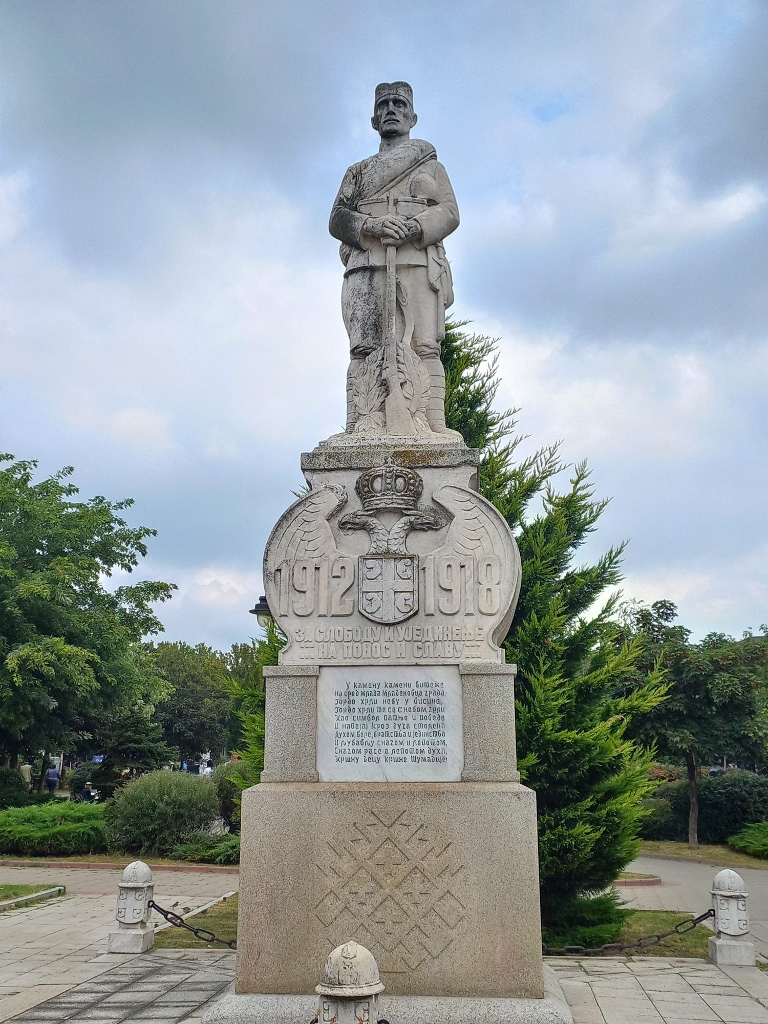 Monument to the Fallen Soldiers 1912-1918
Monument to the Fallen Soldiers 1912-1918
The park is beautifully landscaped and there are several more monuments to be seen there. One is dedicated to the Serbian poet Milorad Petrović Seljančica (1875-1921), who was born in the vicinity of Mladenovac. Another one honours the Serbian medieval ruler Despot Stefan Lazarević (1377-1427), who passed away in the village of Crkvine, also within the territory of Mladenovac (see: https://www.svudapodji.com/en/south-of-belgrade/).
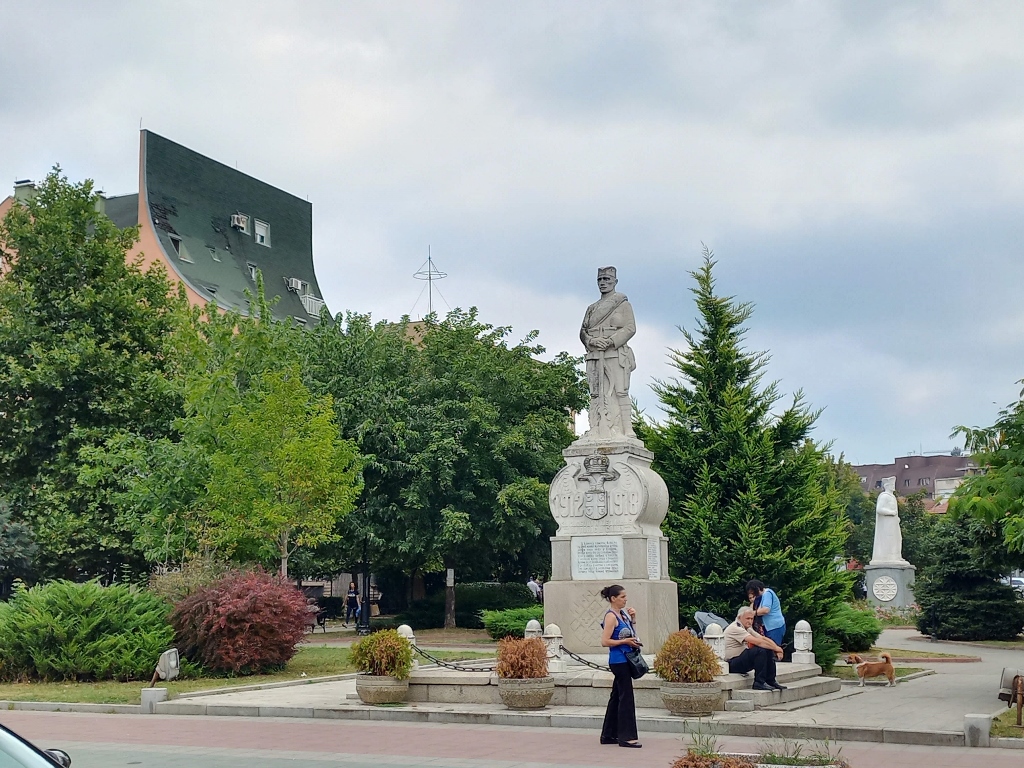 Park in the main square in Mladenovac
Park in the main square in Mladenovac
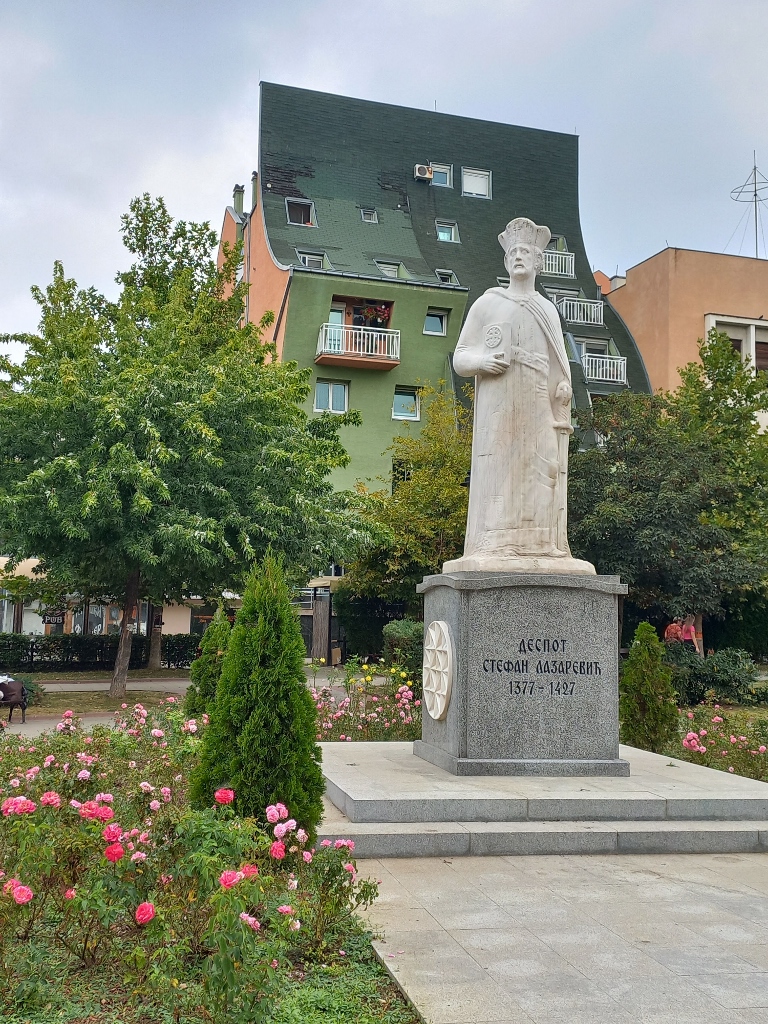 Monument to Despot Stefan Lazarević in Mladenovac
Monument to Despot Stefan Lazarević in Mladenovac
In addition to some more modern residential buildings with interesting architecture, in the immediate vicinity of the square, I noticed an older house with a very attractive facade. Unfortunately, I couldn’t find any information about it.
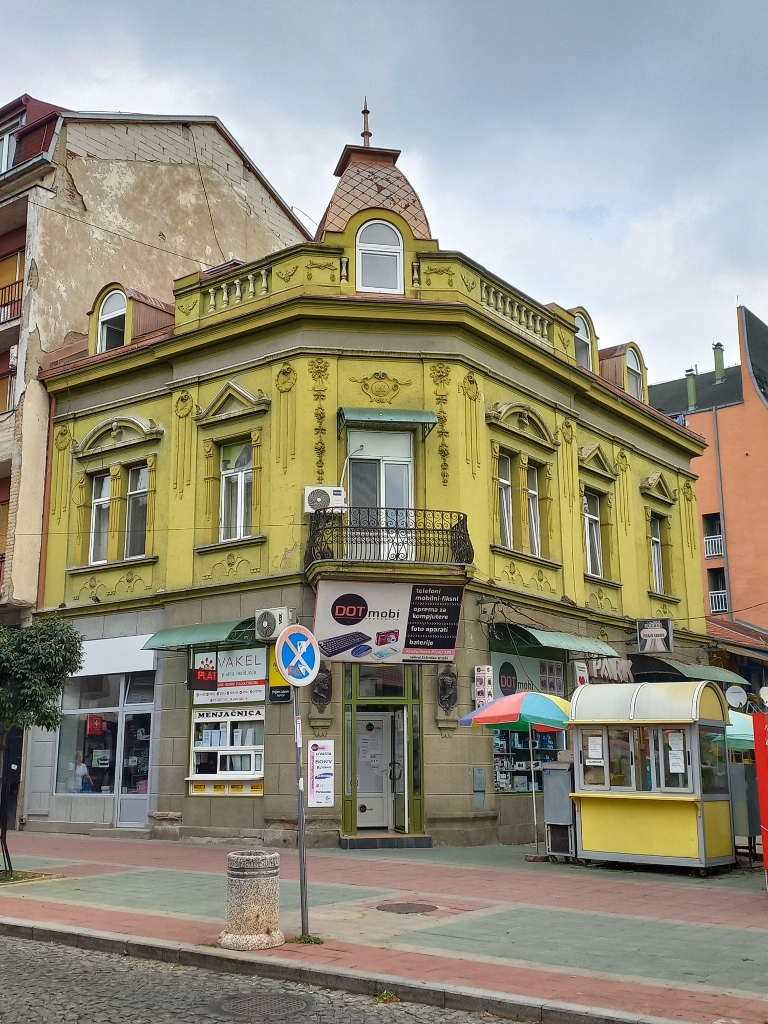 Mladenovac, a detail
Mladenovac, a detail
Near this square, there is also a market in Mladenovac, so I went there to buy some fruits and vegetables that I needed for later when I returned home. I really enjoy markets, so I had a great time walking around there, plus I also bought some lovely things.
Afterwards, I drove to a quite green area resembling a park in the southern part of Mladenovac. There, you can find the Memorial Fountain “Crkvenac,” which is an immovable cultural property classified as a cultural monument.
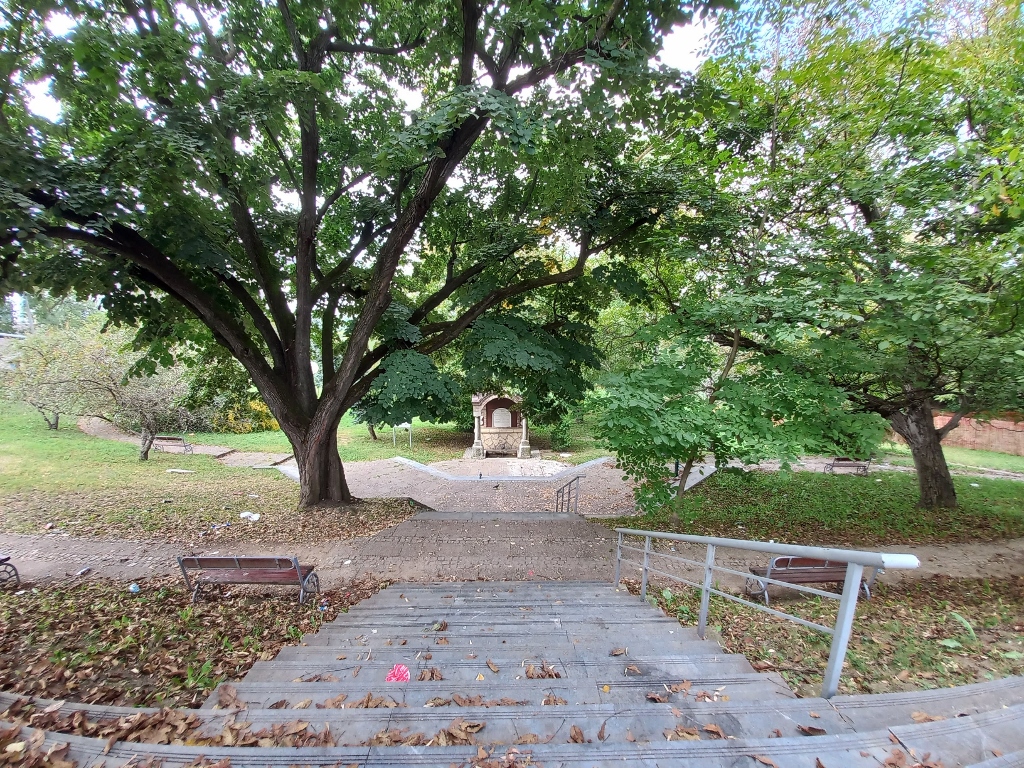 Memorial Fountain Crkvenac
Memorial Fountain Crkvenac
The fountain was erected in 1915 during WWI in honour of several Scottish women who treated and cared for wounded Serbian soldiers. They were led by Dr. Elsie Inglis (1864-1917), the first woman to receive the highest Serbian decoration within the Kingdom of Serbia and the Kingdom of Yugoslavia – the Royal Order of the White Eagle.
Namely, during the First World War, numerous Allied medical missions operated in Serbia, including several British hospitals where members of the Scottish Women’s Hospitals were actively involved. This organisation was established precisely by Dr. Inglis, who was affectionately called the Serbian mother from Scotland.
In addition to her, Dr. Beatrice McGregor, nurse Gertrude Pares and voluntary nurse Margaret Neill Fraser are also mentioned.
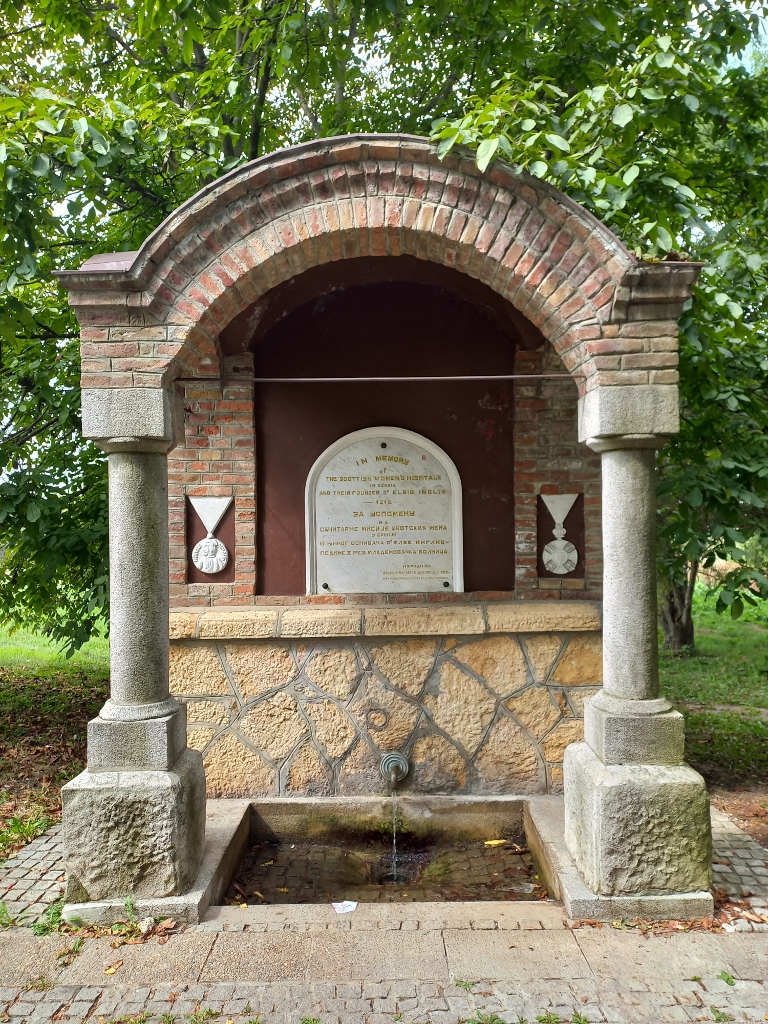 Memorial Fountain Crkvenac
Memorial Fountain Crkvenac
The fountain was made in the autumn of 1915 on the site where the 2nd Reserve Hospital in Mladenovac stood, as a gesture of gratitude and remembrance for the Scottish women’s medical mission in Serbia. They not only treated wounded Serbian soldiers but also assisted the local population in need. The soldiers of the Morava Division built the fountain according to the design by Serbian officer Borivoje Popović. Unfortunately, the water from the fountain is no longer suitable for drinking.
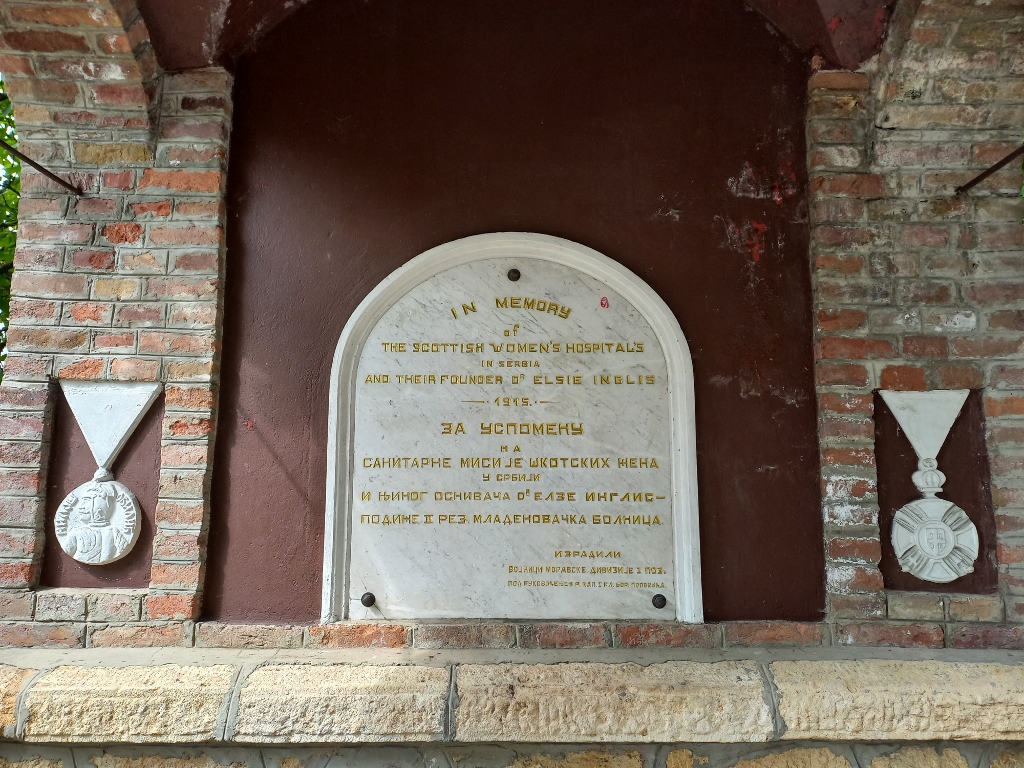 Memorial Fountain Crkvenac, a detail
Memorial Fountain Crkvenac, a detail
After visiting the fountain, I headed towards Aranđelovac, passing through the village of Banja where, according to my materials, there is another immovable cultural asset – the birthplace of the national hero Vojislav Manojlović from World War II. However, I decided not even to attempt to find this cultural monument since I had no information about the exact location of the house.
Although I didn’t extensively travel through Serbia in this way before, exploring various immovable cultural assets, I’ve realised that a certain number of such structures have made the list due to their significance linked to various events during World War II and certainly to the subsequent period and the system. I have absolutely no problems with that; after all, I come from a “partisan” family. However, objectively speaking, some of these structures I’ve seen do not exhibit any visible architectural or stylistic features that would qualify them as cultural monuments from that perspective. It’s merely their connection to various individuals, most often national heroes. That wouldn’t bother me either if these structures have been given some purpose, such as being transformed into museum or gallery spaces and if they have been well-maintained or if accurate and precise information have been provided about them. For example, this particular cultural monument is listed as the house of Milorad Manojlović, but whether this Milorad is the current owner, the father of the national hero, or just a typing error – remains unknown. (See also an example and my comment in: https://www.svudapodji.com/en/cacak-ovcarbanja-2/).
So, thinking in this way, I simply drove along the main road of the village Banja and continued to Aranđelovac. My initial plan was to visit the curtilage of Ilija Milošević, marked as an “ethno household.” This is also an immovable cultural property classified as a cultural monument and it is located at the entrance to the town from the direction of Topola, right across from Risovača Cave, which was my next destination.
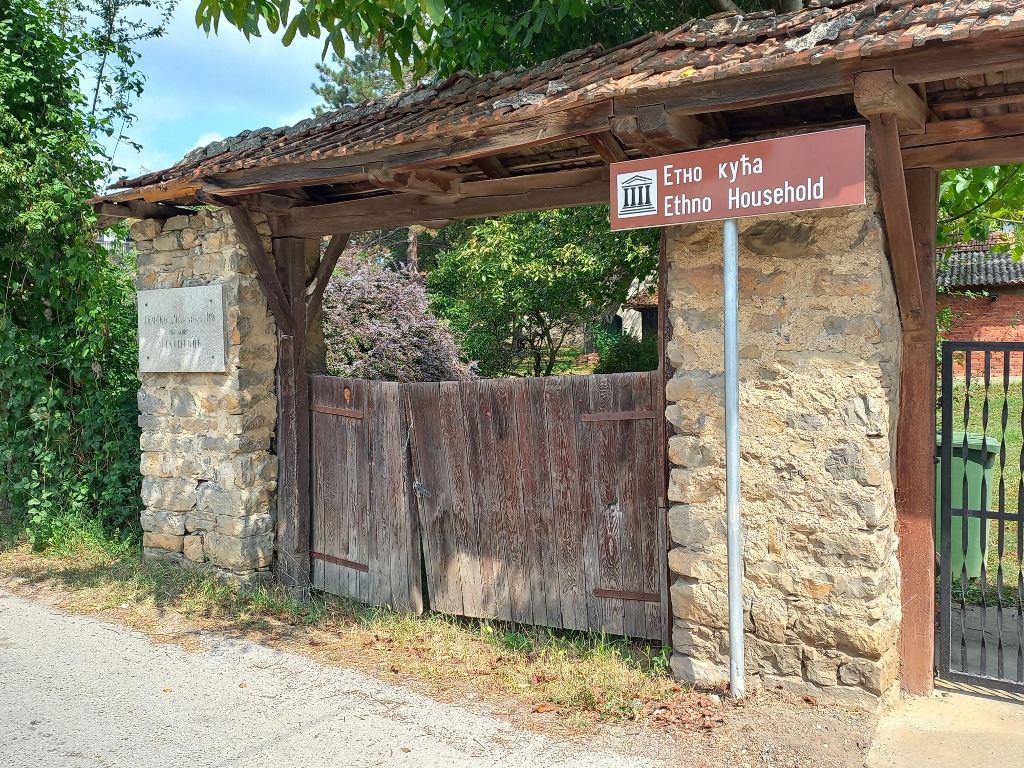 Curtilage of Ilija Milošević
Curtilage of Ilija Milošević
However, when I arrived, an unpleasant surprise awaited me – the entrance to the property was locked. Nevertheless, I decided to explore a bit, hoping that from some vantage points, I would be able to capture parts of the estate on camera. As it turned out, this was a good idea because I reached a section where there was no actual fence, so I entered the property that way.
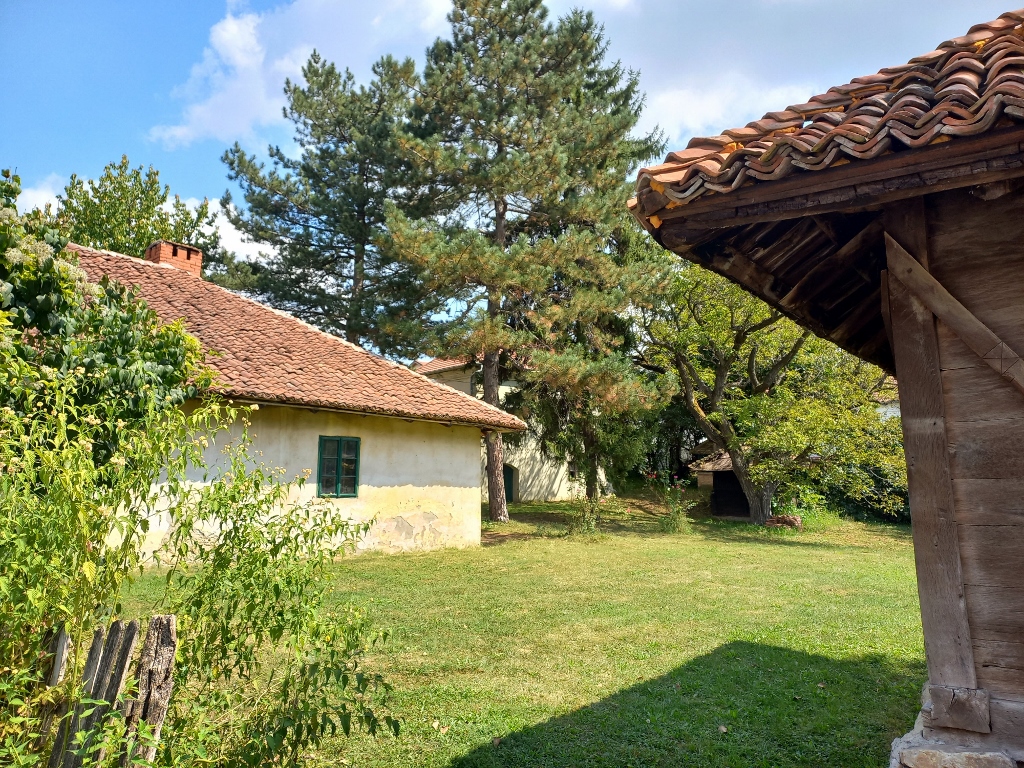 Curtilage of Ilija Milošević
Curtilage of Ilija Milošević
As it turned out, a very kind lady from the National Museum in Aranđelovac, Ms. Nevenka Dojić, was actually working there. At the time of my visit, the only issue was that the estate was still undergoing renovation, so it was not formally open. However, there is no problem entering, but one should avoid going into the buildings as they may not be stable. On the other hand, I learned that a project for the restoration of the entire estate and its buildings had been approved, so in a year or two, it will be a genuine cultural monument open for visits.
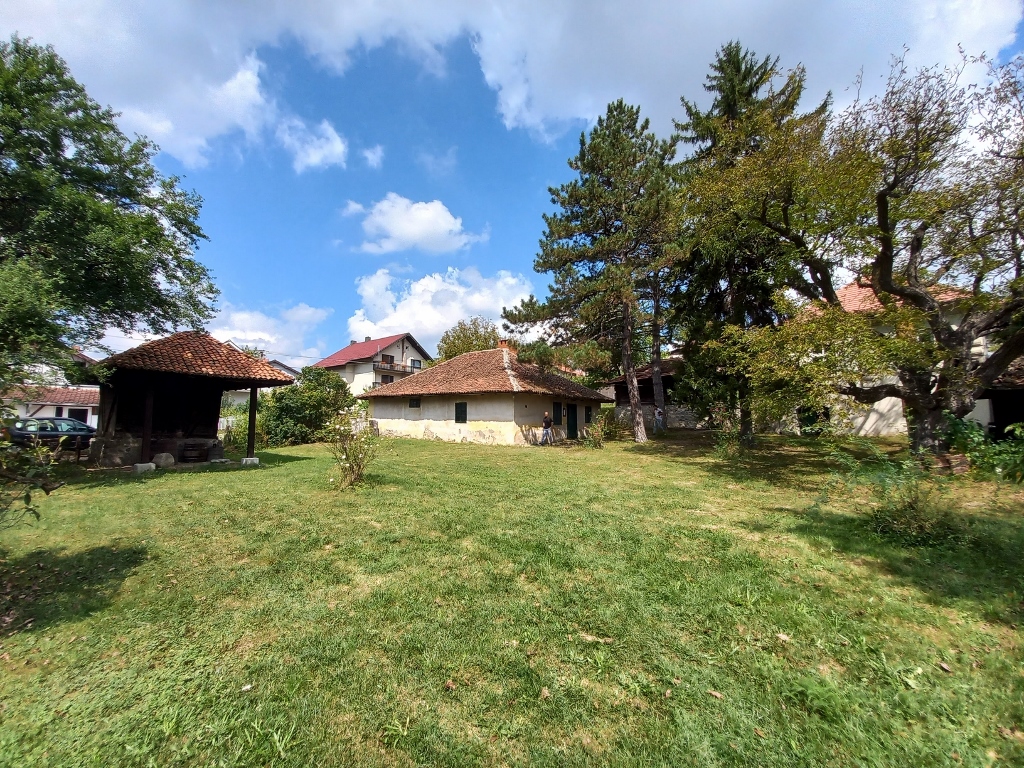 Curtilage of Ilija Milošević
Curtilage of Ilija Milošević
In the new house from 1917, there is currently a field office, while around the curtilage, there are several older structures – a dairy hut, an old house, a storage hut, vajat (a small traditional cottage), a well and a granary.
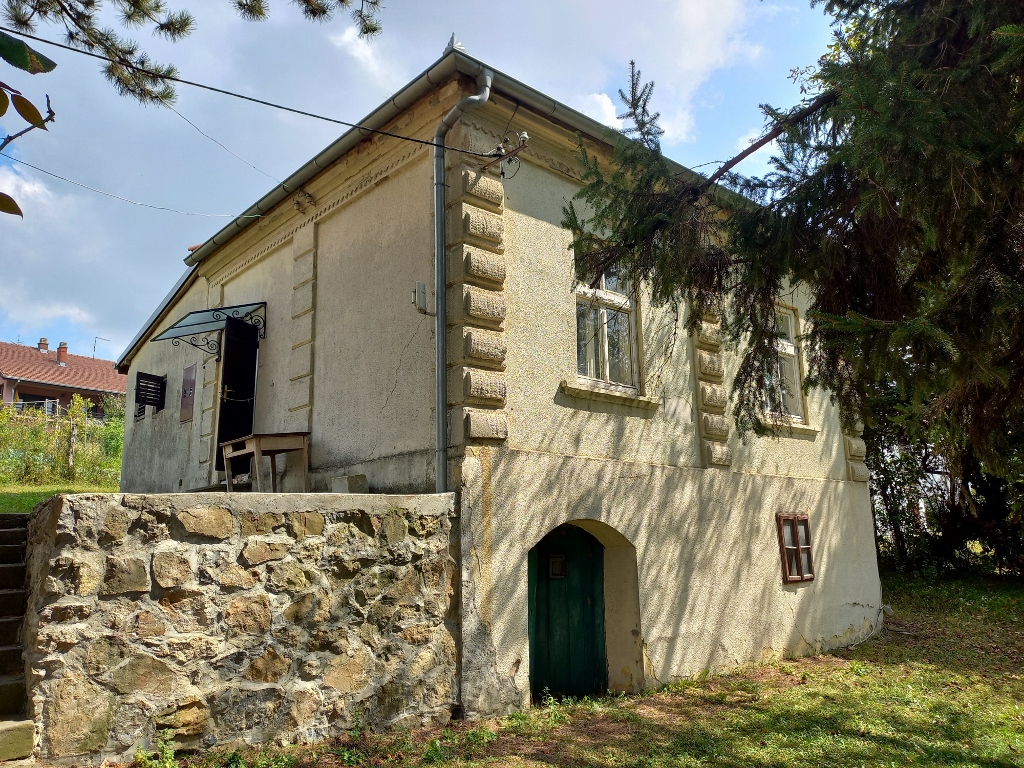 Curtilage of Ilija Milošević, new house
Curtilage of Ilija Milošević, new house
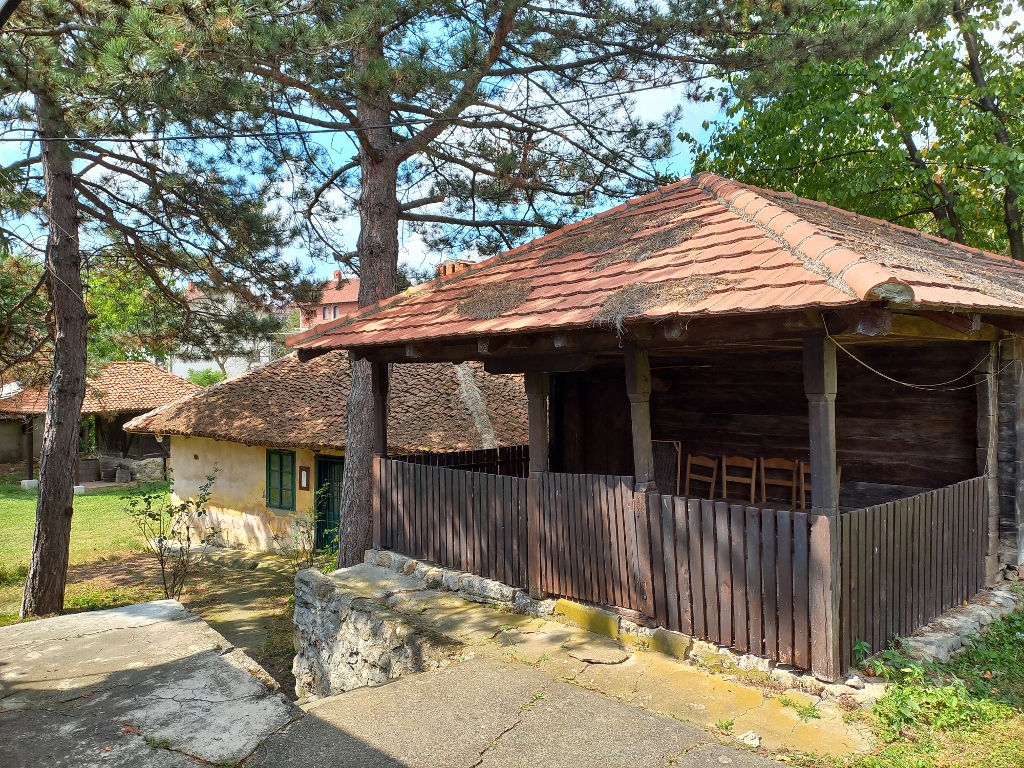 Curtilage of Ilija Milošević, vajat
Curtilage of Ilija Milošević, vajat
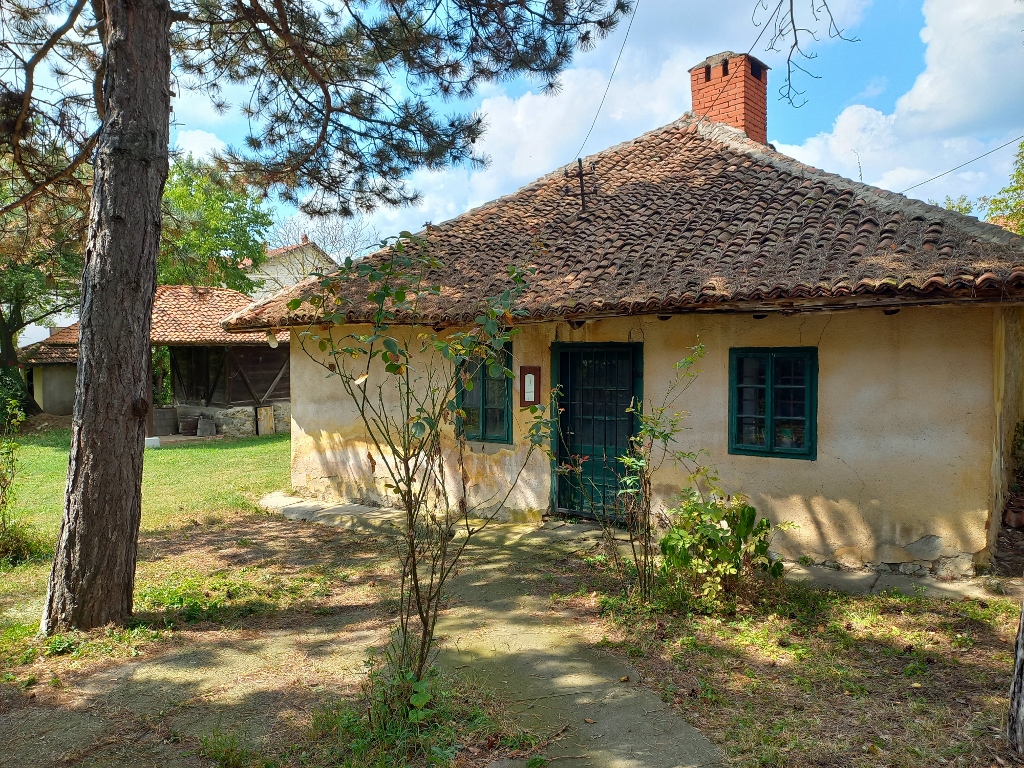 Curtilage of Ilija Milošević, old house
Curtilage of Ilija Milošević, old house
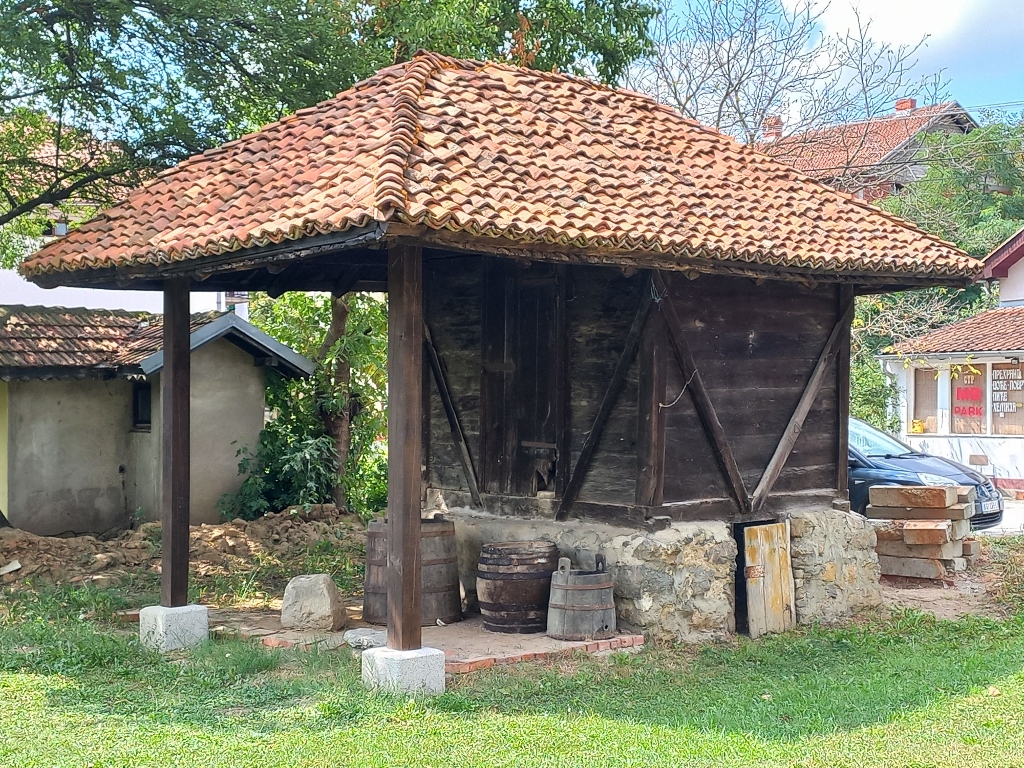 Curtilage of Ilija Milošević, storage hut
Curtilage of Ilija Milošević, storage hut
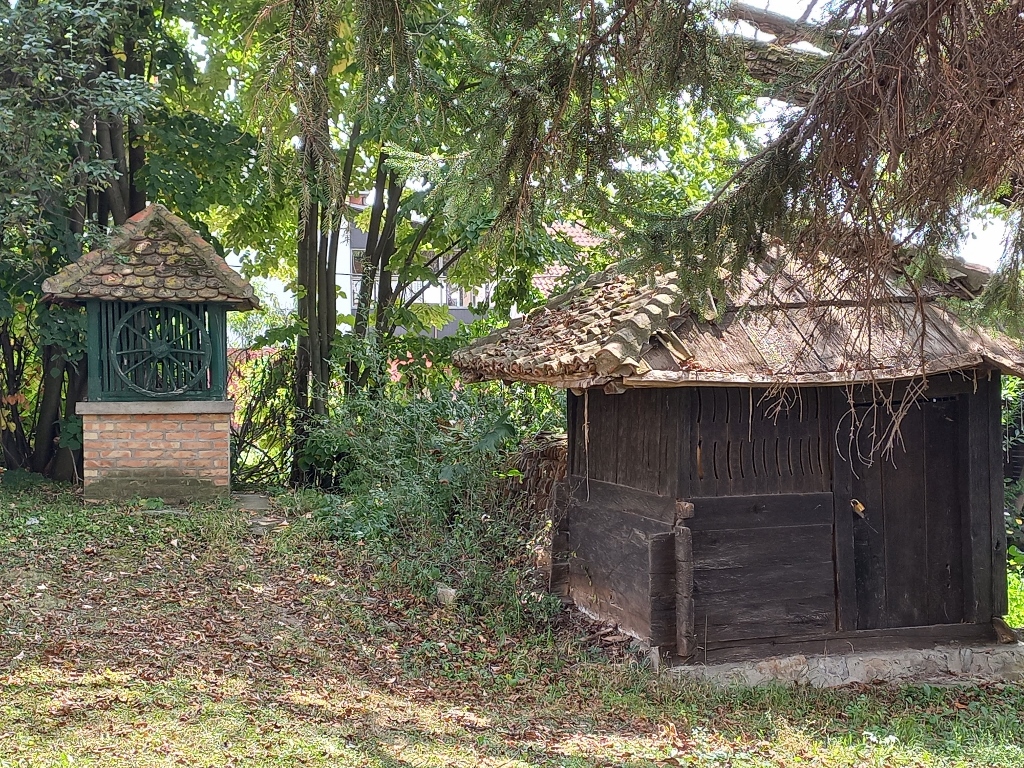 Curtilage of Ilija Milošević, new well and dairy hut
Curtilage of Ilija Milošević, new well and dairy hut
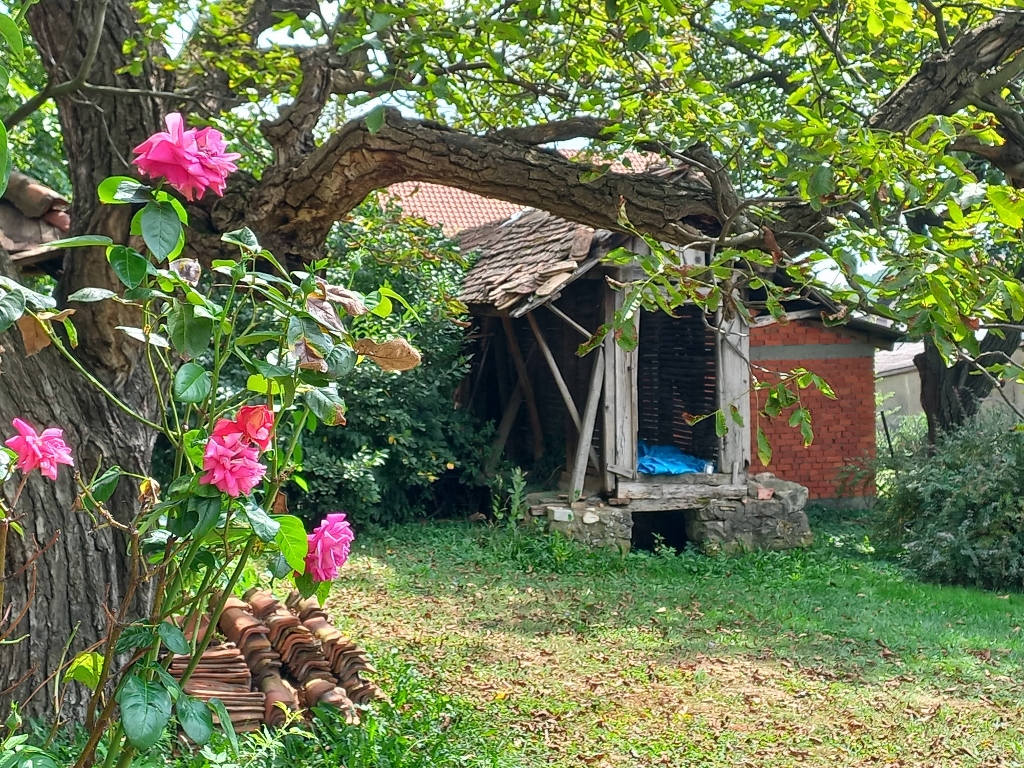 Curtilage of Ilija Milošević, granary
Curtilage of Ilija Milošević, granary
Even though the buildings are yet to be renovated, my visit was very pleasant and successful. Apart from having a delightful conversation with the lady who was on duty there, it was nice to see that the property is well-maintained, even though the renovation project hasn’t started yet— the grass was neatly trimmed and there were beautiful flowers.
I found it interesting that they had also brought an old thrashing machine into the yard, which I assume will also be restored. It will then make more sense to have it displayed there once it’s fully restored.
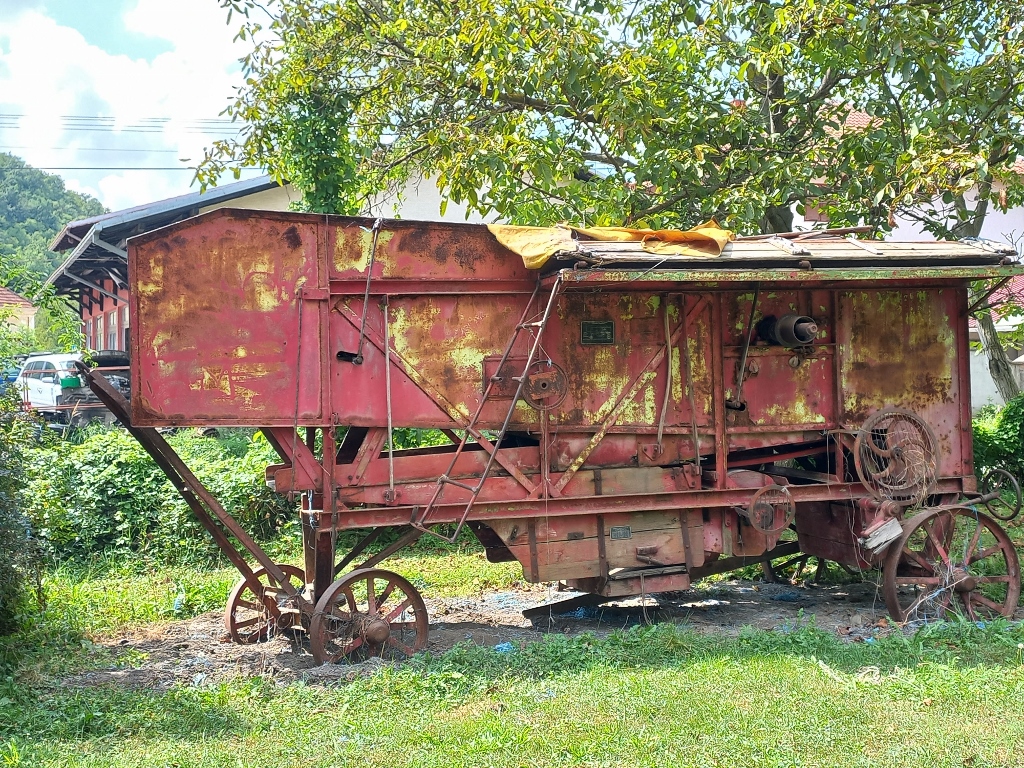 Curtilage of Ilija Milošević, old thrashing machine
Curtilage of Ilija Milošević, old thrashing machine
I’ve already mentioned that my next destination was Risovača Cave. I simply walked to it, since I only had to cross the main road that leads into the town from the east. This was easier than moving the car for just a hundred metres or so.
Well, in this area, there is Risovača hill with Risovača Cave inside of it. Due to its significance for archaeology, the cave has been declared a cultural monument of great importance. Additionally, because of the natural specificities of both the cave and the surrounding area, they have been designated as a natural property of exceptional importance.
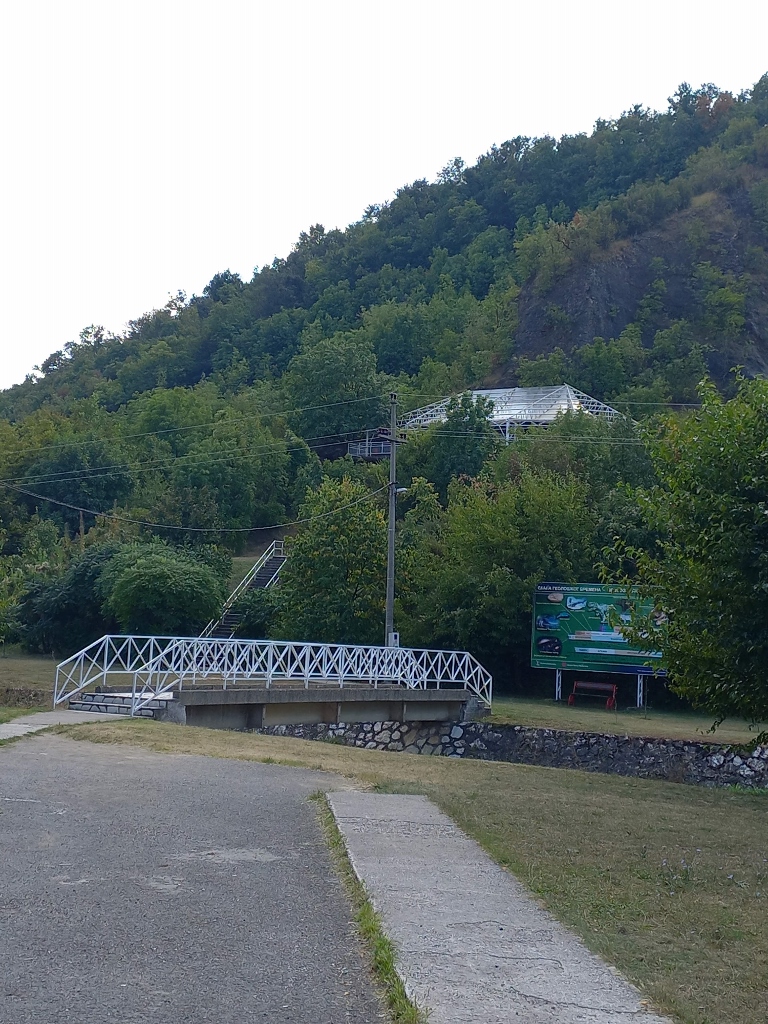 Approaching Risovača hill and cave
Approaching Risovača hill and cave
To start with, you need to cross the small Kubršnica river.
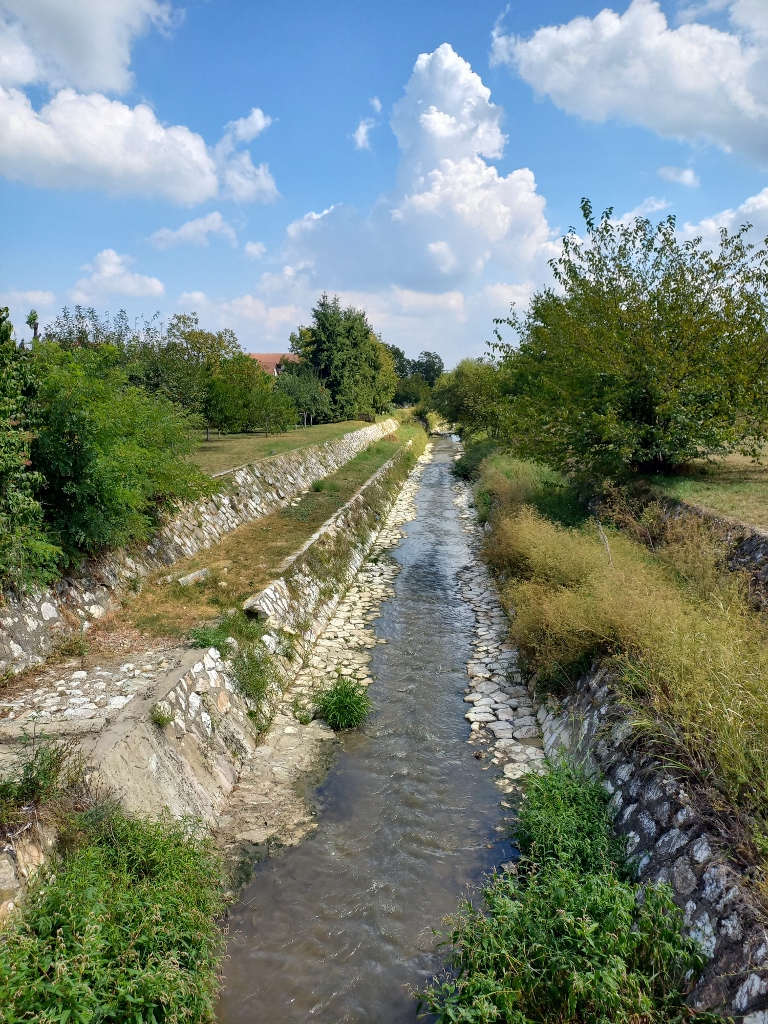 The Kubršnica river
The Kubršnica river
While ascending towards the entrance into the cave, the path also leads past a couple of charming sculptures of prehistoric animals that once inhabited this area.
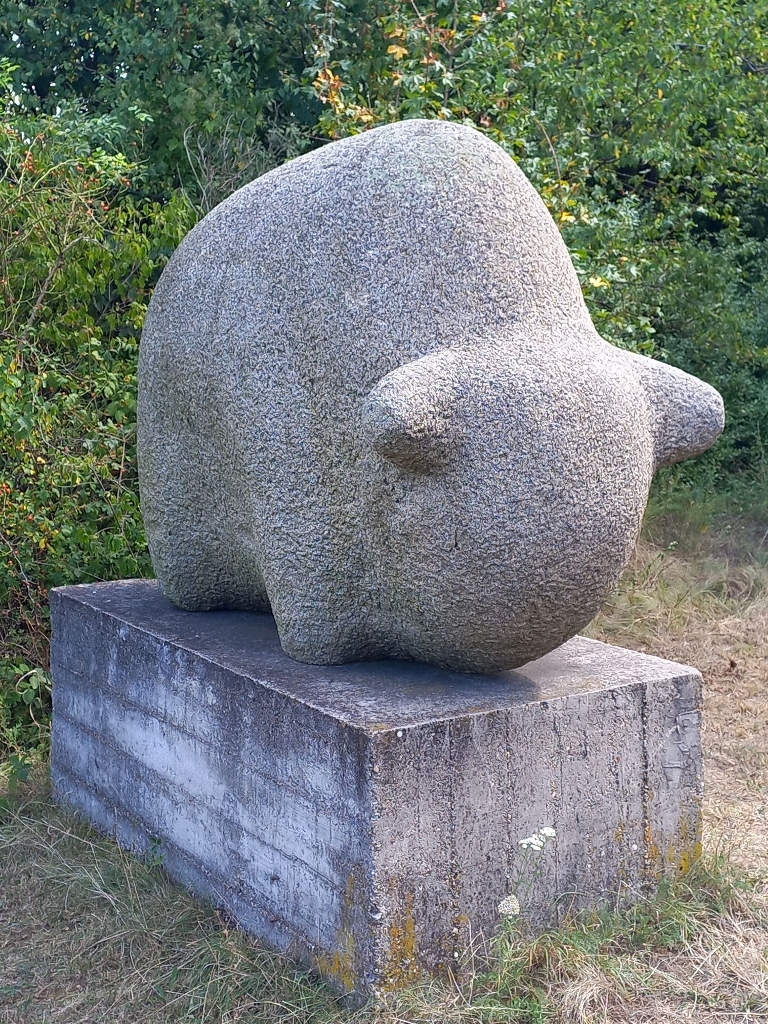 Access to Risovača cave, a detail
Access to Risovača cave, a detail
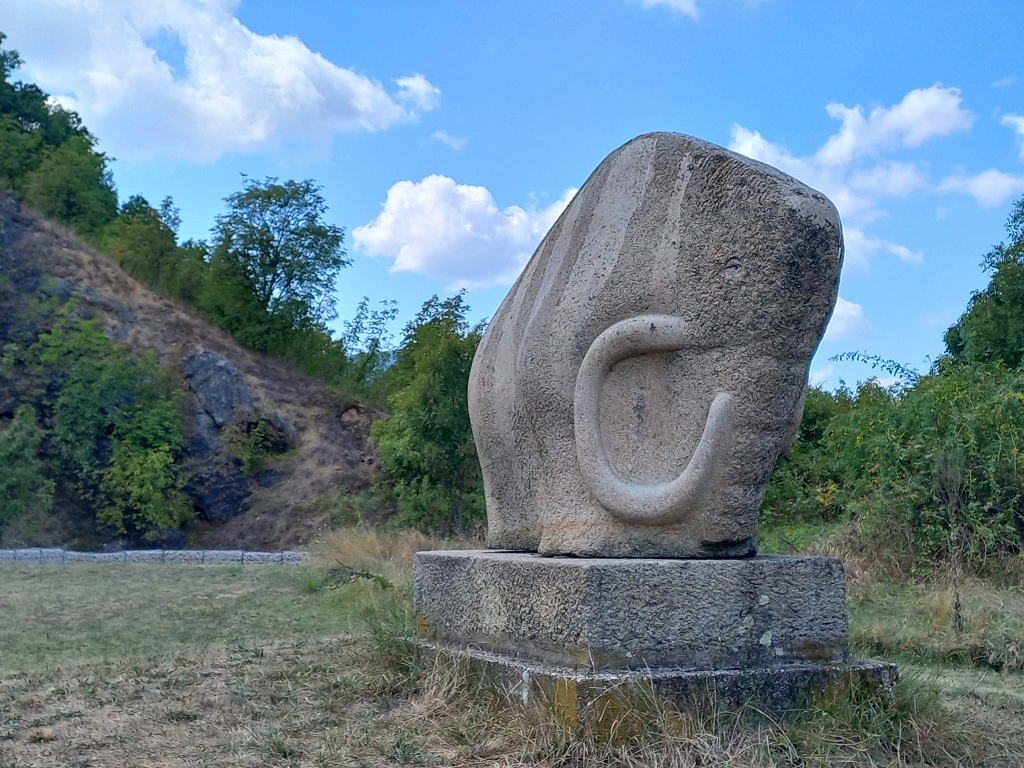 Access to Risovača cave, a detail
Access to Risovača cave, a detail
The cave is explored in the company of a guide, so when purchasing a ticket, you are informed about the next guided tour. I arrived just in time.
Right at the entrance, there are sculptures depicting people who once inhabited this area. Based on research, it has been established that Neanderthals resided here during the Upper Palaeolithic period (50,000 to 35,000 years ago). Although no human remains have been discovered, numerous stone and bone tools, processed bones of prehistoric animals and traces of hearths have been found, undeniably confirming an extended human presence within the cave. It is presumed that these were primarily Palaeolithic hunters.
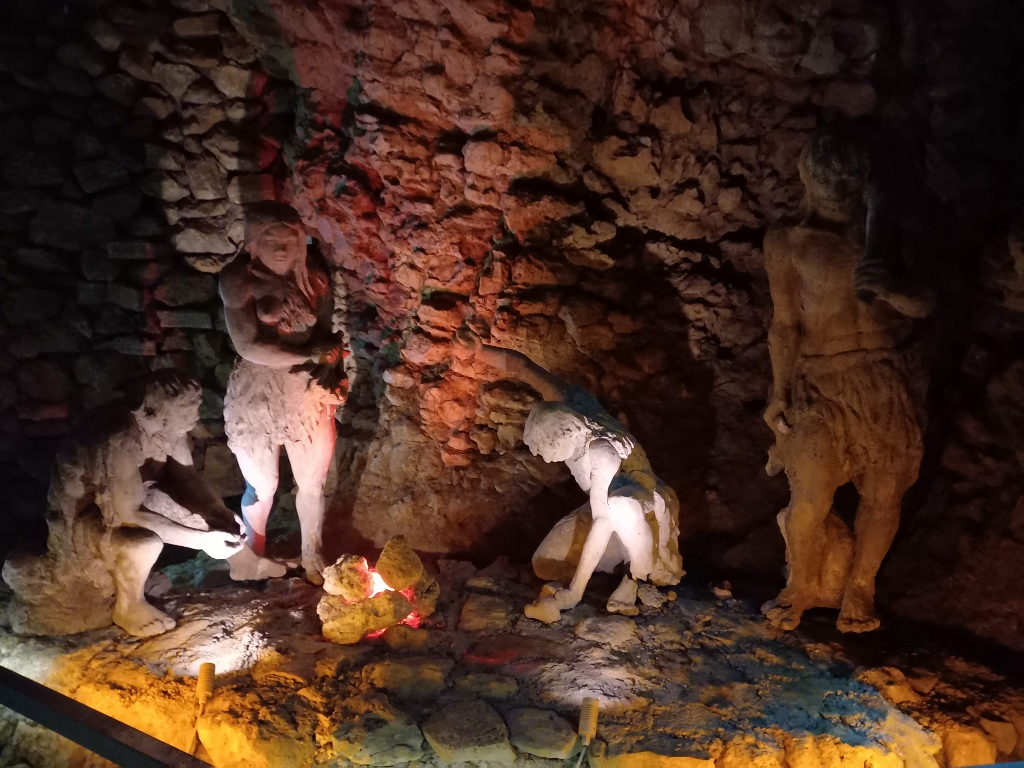 Risovača cave, a detail
Risovača cave, a detail
Until 1937/38, when a quarry began operating here, there were only two narrow entrances leading to the underground chamber. Over time, the cave system was expanded and in the mid-20th century, archaeological excavations were initiated.
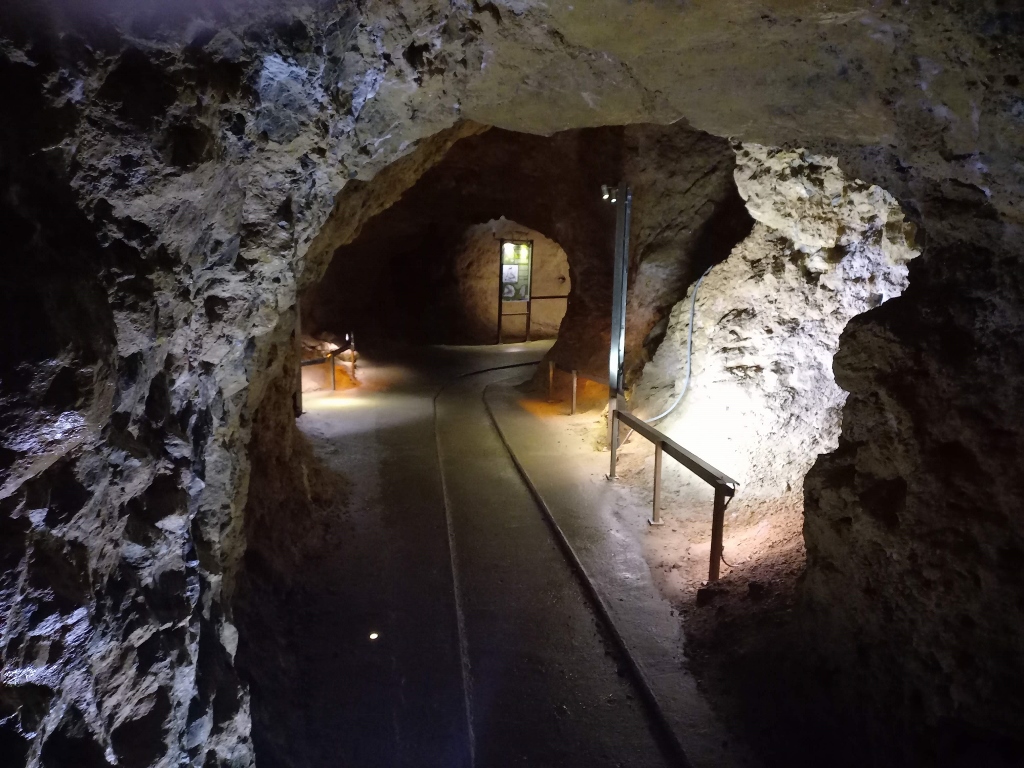 Risovača cave, a detail
Risovača cave, a detail
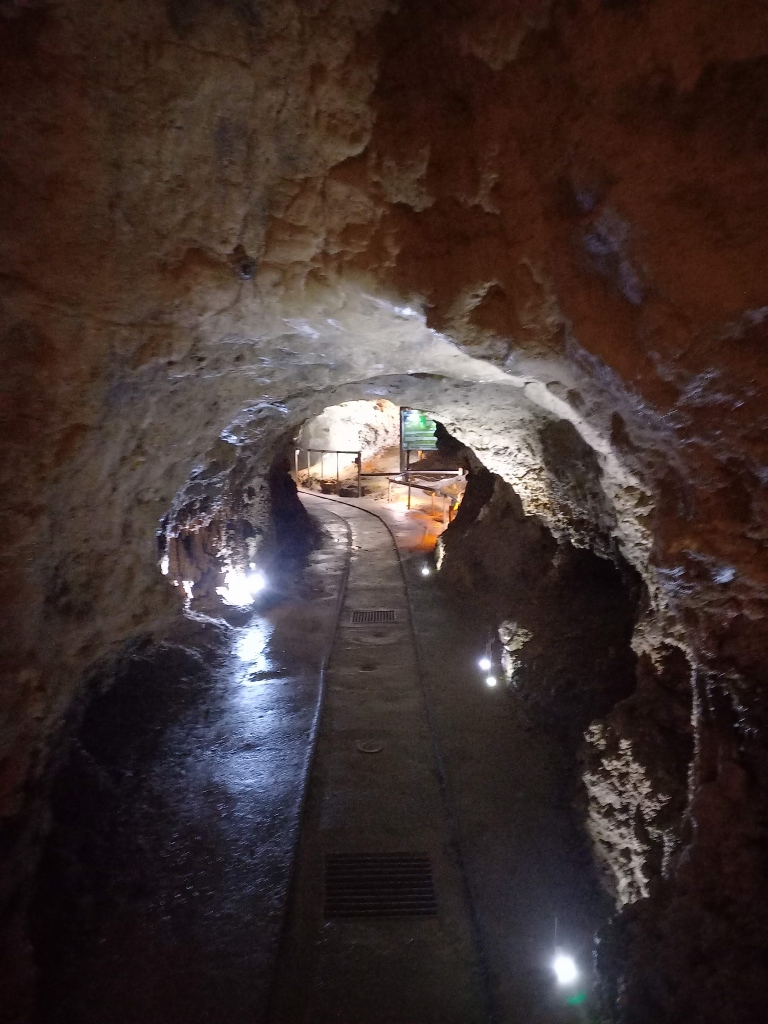 Risovača cave, a detail
Risovača cave, a detail
The cave was created in the past by the flow of large quantities of water and in some places you can clearly see passages through which water can enter the cave in a strong stream, almost like holes in the roof.
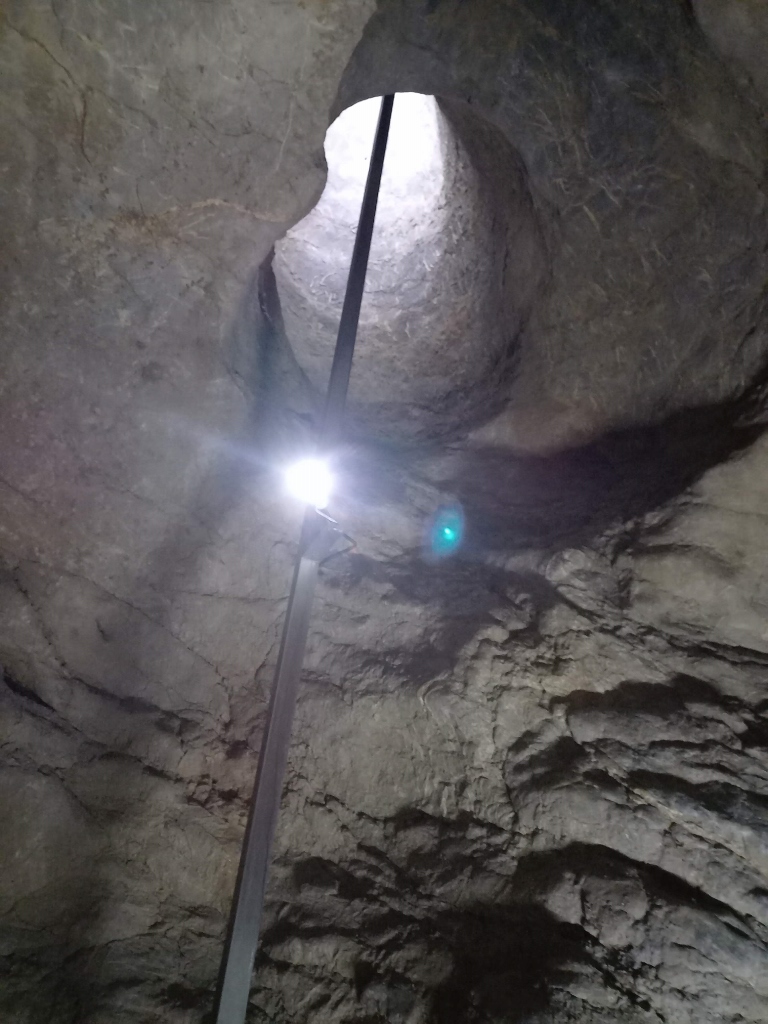 Risovača cave, a detail
Risovača cave, a detail
Although certainly very interesting and worth a visit, Risovača is not a huge cave with a multitude of cave decorations like those found in various other caves in Serbia. However, here, as in many other caves, water seepage over extended periods creates various forms of cave ornaments. To me, it seemed rather modest, even not very impressive, so I didn’t take pictures of it. However, in several places, interesting details can be seen, such as clearly visible layers within the rock or a formation the size of a human hand resembling a small developing stalagmite. The guide humorously mentioned that it’s designated for placing a hand on it and making a wish. The group I was part of was small, just four of us, but we all placed our hands on this intriguing piece of stone and I assume we all made a wish.
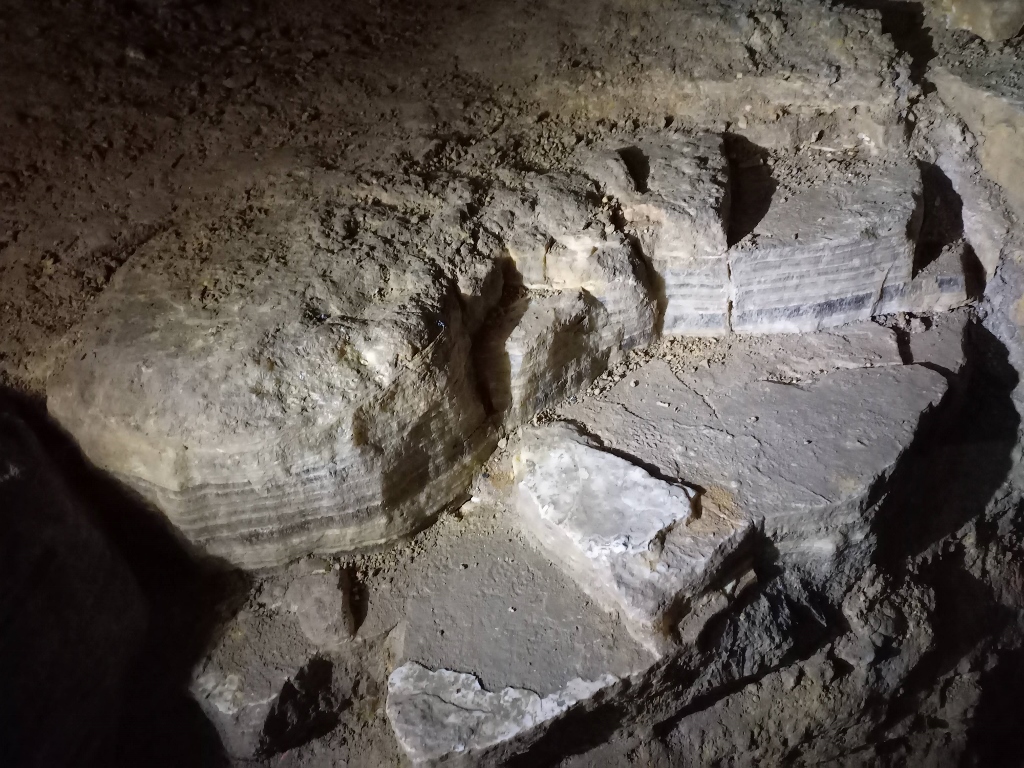 Risovača cave, layers within a rock
Risovača cave, layers within a rock
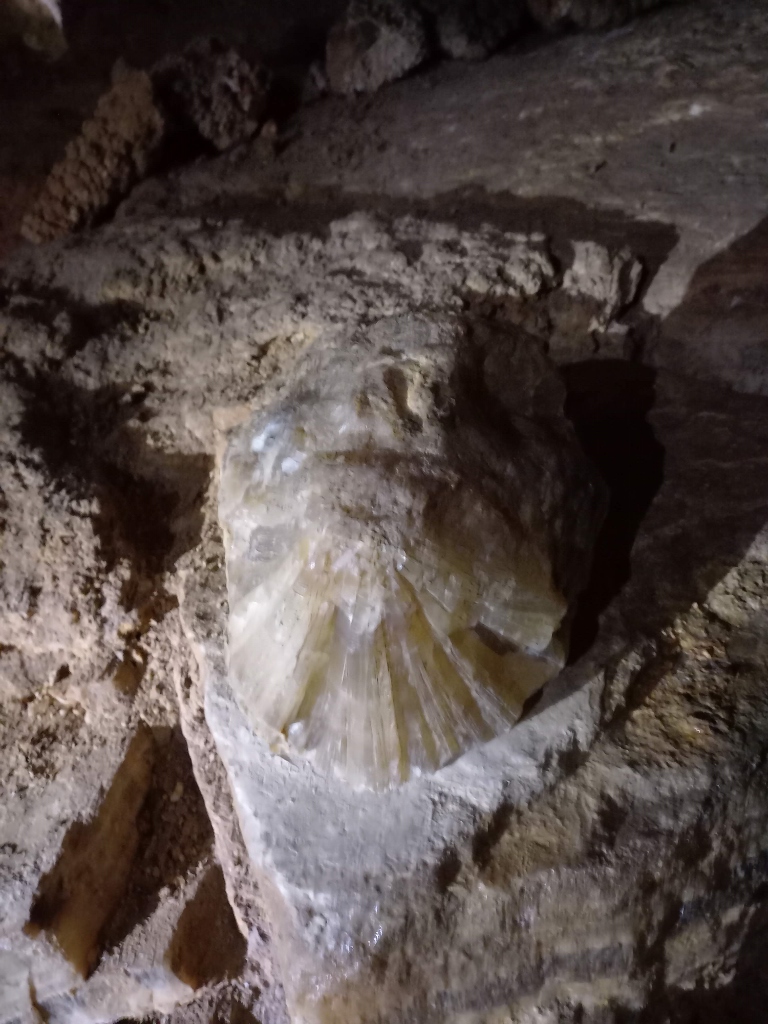 Risovača cave, wishing stone
Risovača cave, wishing stone
As for stalactites and stalagmites, towards the end of the cave section designated for visitors, there is a calcification device designed by some Serbian geologists. By combining carbonic acid in water and temperature, the dripping speed, the drop height and the effect on limestone, the calcification device essentially simulates, in an accelerated form, the natural process of cave ornament formation.
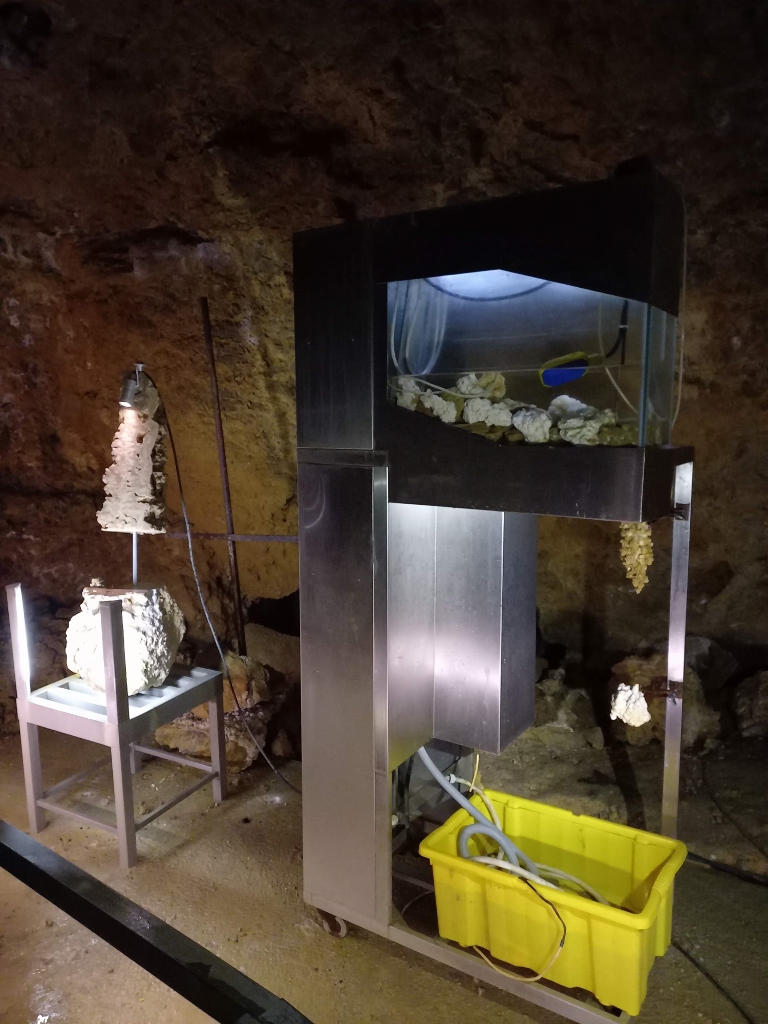 Risovača cave, calcification device
Risovača cave, calcification device
Risovača is not particularly long either, estimated to be around 800 meters long, but the visitors don’t have access to its entire length. Towards the end, you reach a larger chamber and throughout the cave, there are information boards, which is also good, although the guide provided very detailed and interesting explanations.
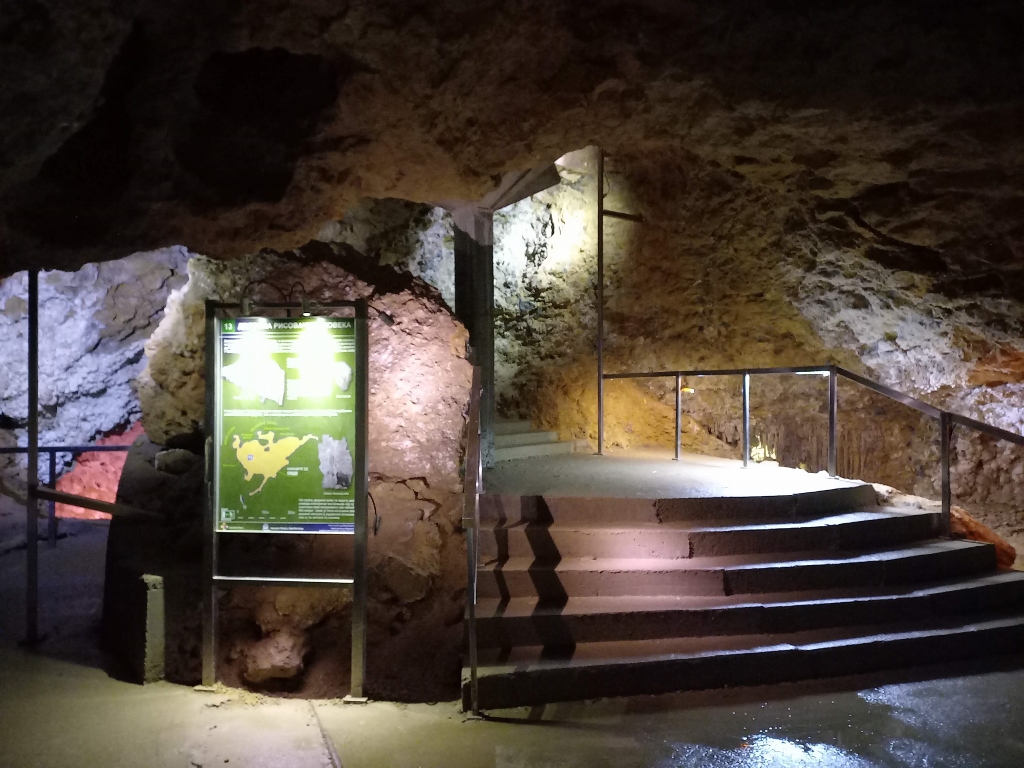 Risovača cave, a detail
Risovača cave, a detail
What can also be seen along the cave are casts of prehistoric animals whose fossil remains were found during research, such as the cave lion shown in the photo below.
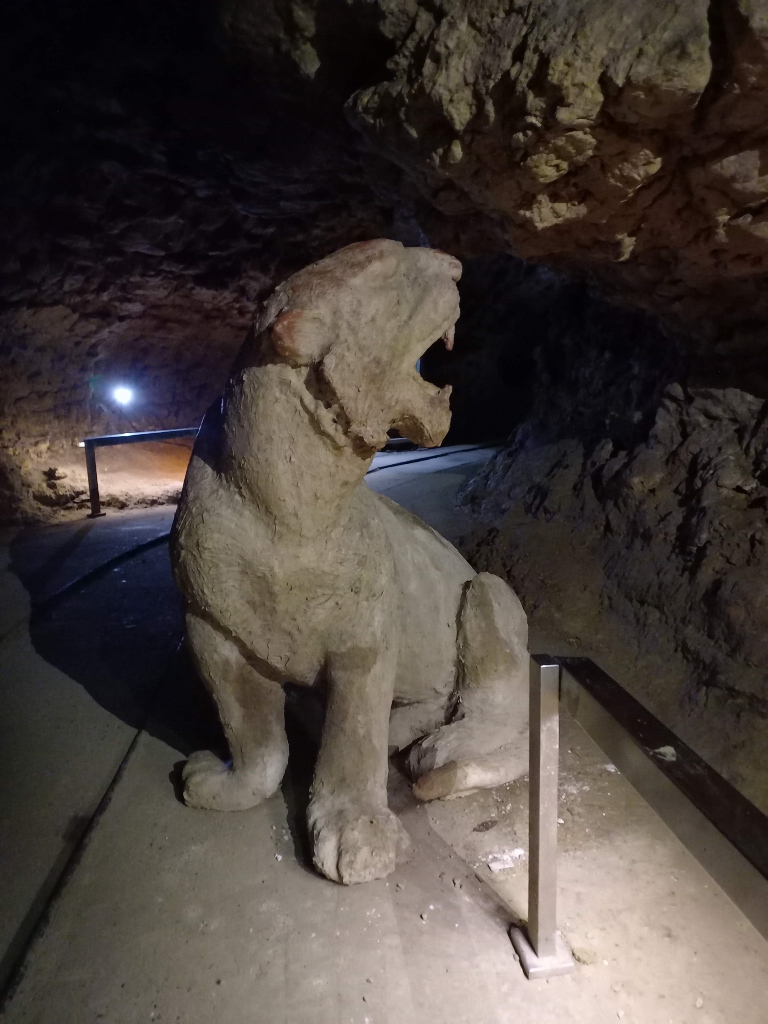 Risovača cave, a detail
Risovača cave, a detail
In addition to the fossils of the cave lion, the research has also uncovered fossils of the cave bear, mammoth, steppe rhinoceros, deer, etc. The majority of fossilised bones and teeth come from the cave bear, which was larger than any modern bear species – standing up, it could reach the height of up to 3.5 meters and its weight could be around 1000 kg.
As for “contemporary” animals, I managed to spot small bats in one area, but they were clinging to the cave ceiling, which was in considerable darkness, making it challenging to capture them in photographs.
After completing the tour of Risovača Cave, I returned to my car. Although the main street in Aranđelovac was very close and I had planned to take a stroll there, I first drove to the Church of the Holy Archangel Gabriel, located in a beautiful elevated spot with its courtyard resembling a park.
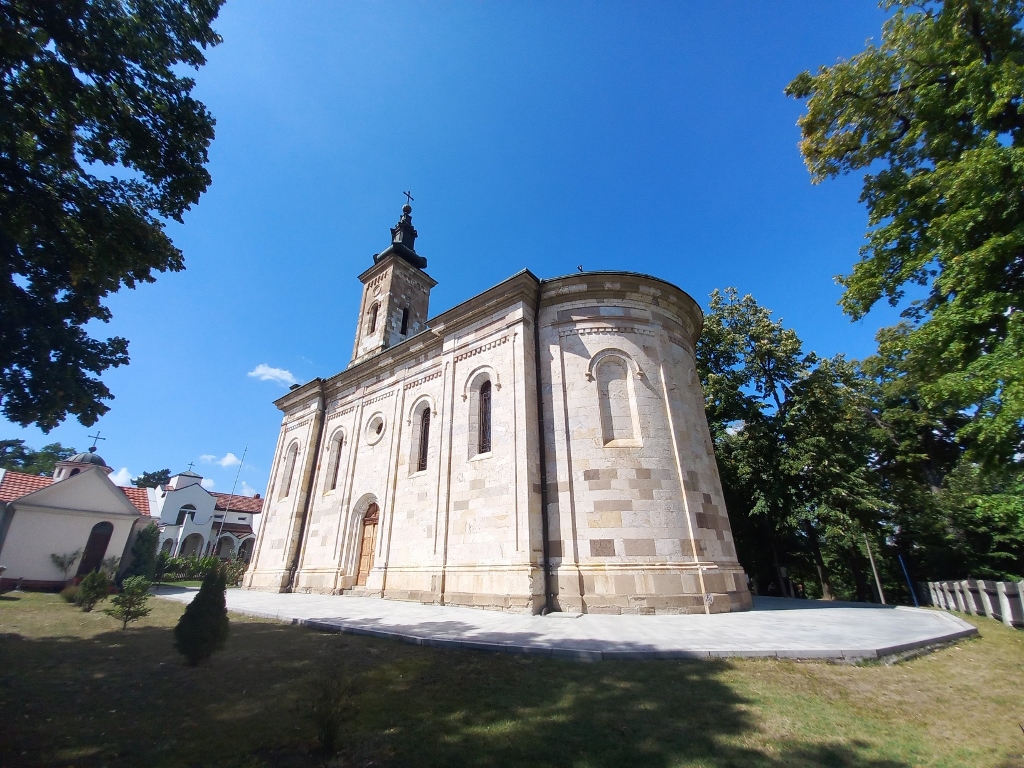 Church of the Holy Archangel Gabriel
Church of the Holy Archangel Gabriel
It is interesting that the town of Aranđelovac got its name after this church. Namely, in 1837, Prince Miloš Obrenović ordered the “urbanisation” of the village of Vrbica in Šumadija, which took on the appearance of a small town by 1840. During his second rule, in 1859, Prince Miloš decided to build a church here dedicated to the Holy Archangel Gabriel, while the emerging town was named Aranđelovac in August of the same year.
The construction of the church actually began in the spring of 1860, while Prince Miloš passed away in September of the same year. Nevertheless, the construction of the church was completed in 1862 and it is classified as a cultural monument today. The church suffered damage during both World War I and World War II, but was subsequently restored.
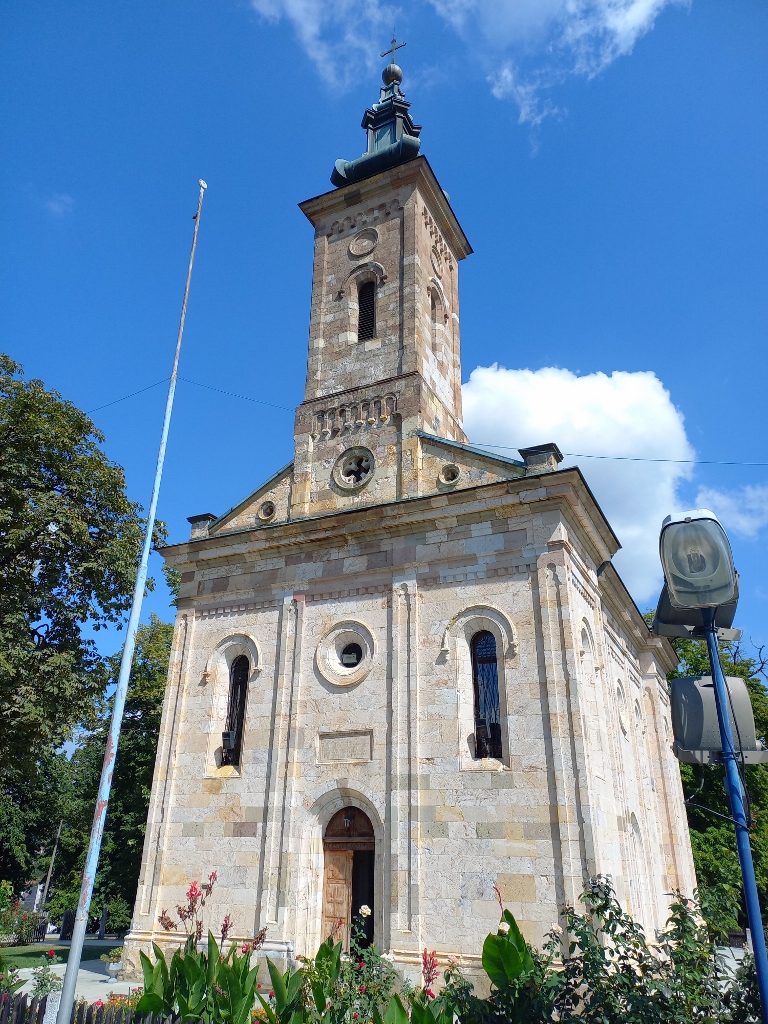 Church of the Holy Archangel Gabriel
Church of the Holy Archangel Gabriel
It is a single-nave structure with a tall bell tower on the western side. Built of bricks, the exterior is adorned with stone blocks. Inside, there are no frescoes, but the church boasts a beautiful iconostasis from 1863 crafted by the renowned painter Nikola Marković.
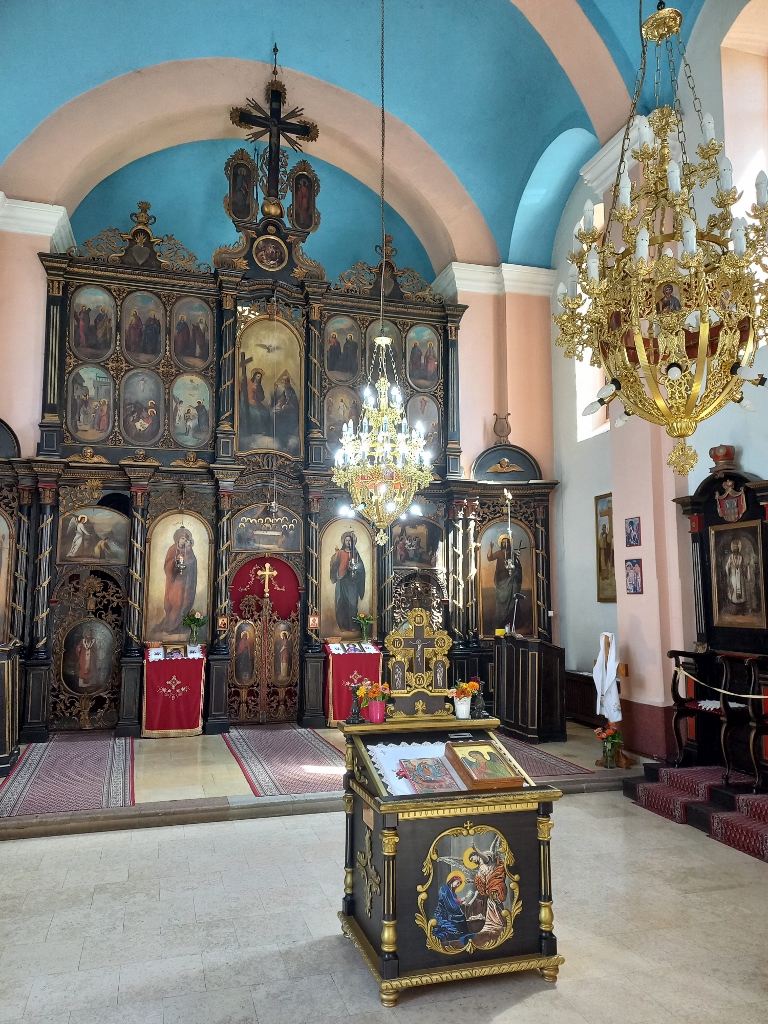 Church of the Holy Archangel Gabriel
Church of the Holy Archangel Gabriel
After visiting the Church of the Holy Archangel Gabriel, I drove closer to the centre, specifically near Knjaza Miloša Street. Finding a convenient place to park, I decided to explore on foot a few cultural monuments along this street. First, I arrived at the house at number 22. This building was constructed in the third or fourth decade of the 20th century.
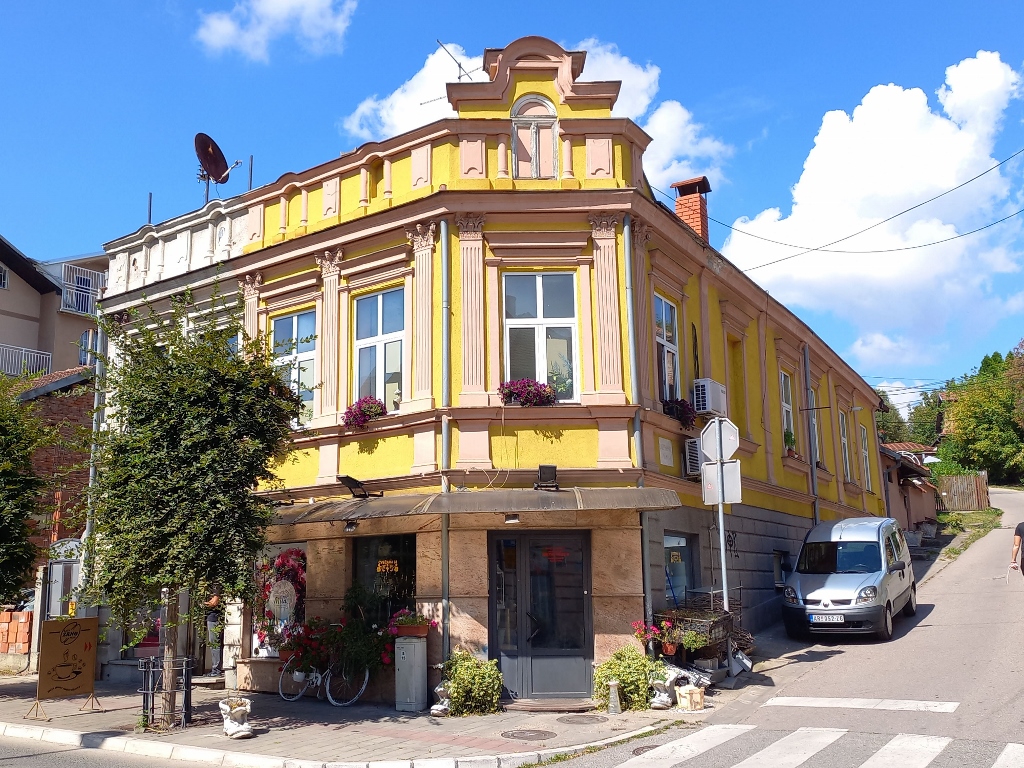 House at Knjaza Miloša no. 22
House at Knjaza Miloša no. 22
This house on the corner of two streets was constructed as a residential-commercial building. Today, there is a flower shop on the ground floor. However, what distinguishes it at first glance is its very beautiful and richly decorated facade.
The same certainly cannot be said for another cultural monument a bit further down, at Knjaza Miloša 72. It is the Old Post Office Building.
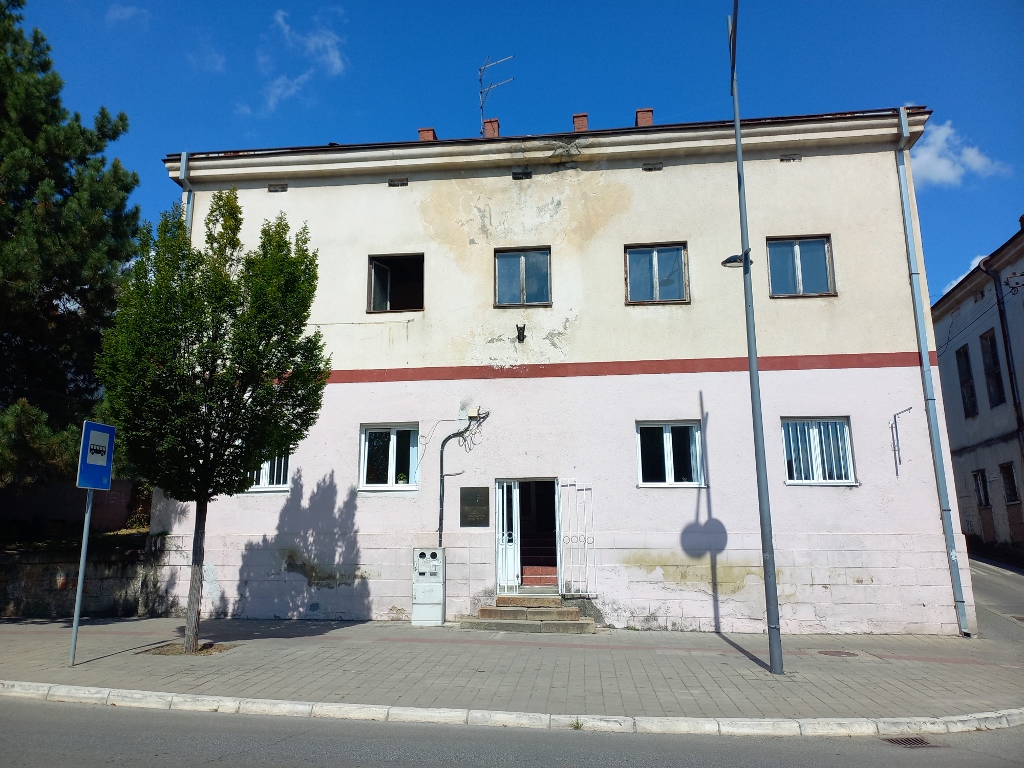 Old Post Office Building at Knjaza Miloša no. 72
Old Post Office Building at Knjaza Miloša no. 72
This building was constructed in 1870 and is significant for the history and development of the postal and telecommunications traffic in Serbia. It also represents an important part of the heritage related to urban architecture in the 19th century. Likely due to these reasons, it has been declared a cultural monument. However, despite reading some explanations about its architecture, in its current state, it appears entirely uninteresting to me. It is still in use, although not as a post office. Interestingly, even the adjacent building (separated by a small street) that apparently serves no particular function seemed more architecturally intriguing to me.
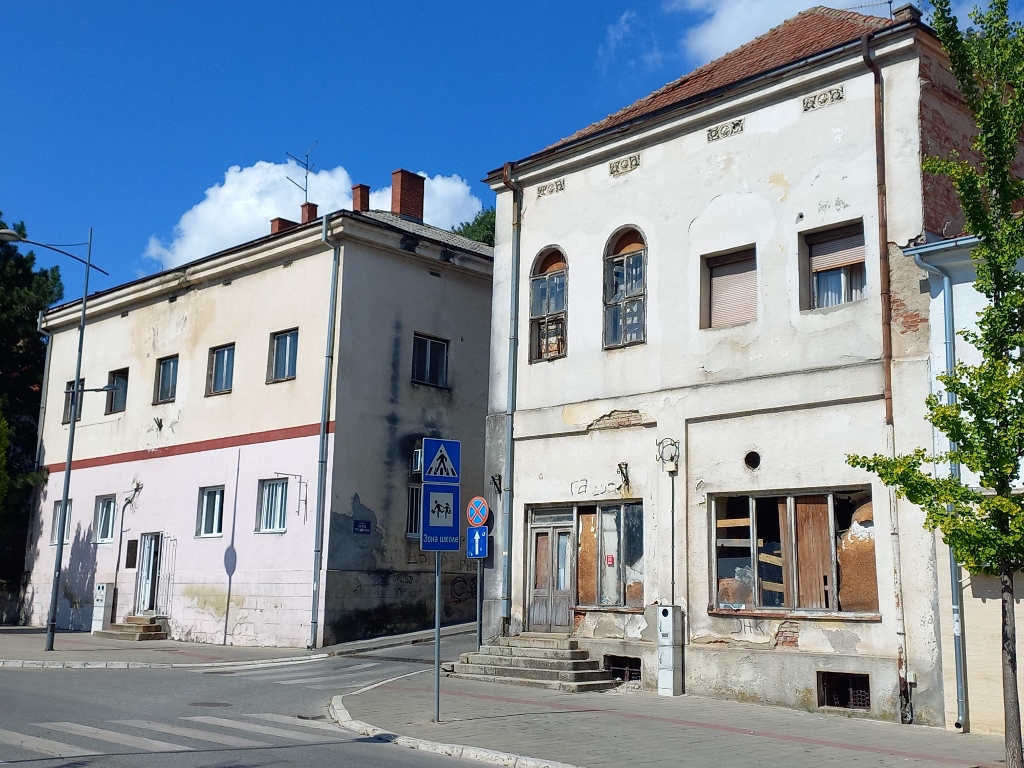 Old Post Office Building, left, and a neighbouring building, right
Old Post Office Building, left, and a neighbouring building, right
Since I’m mentioning buildings that don’t have the status of a national cultural monument, let me bring up another building on the even-numbered side of Knjaza Miloša Street. This building is not only remarkably beautiful, but also historically interesting.
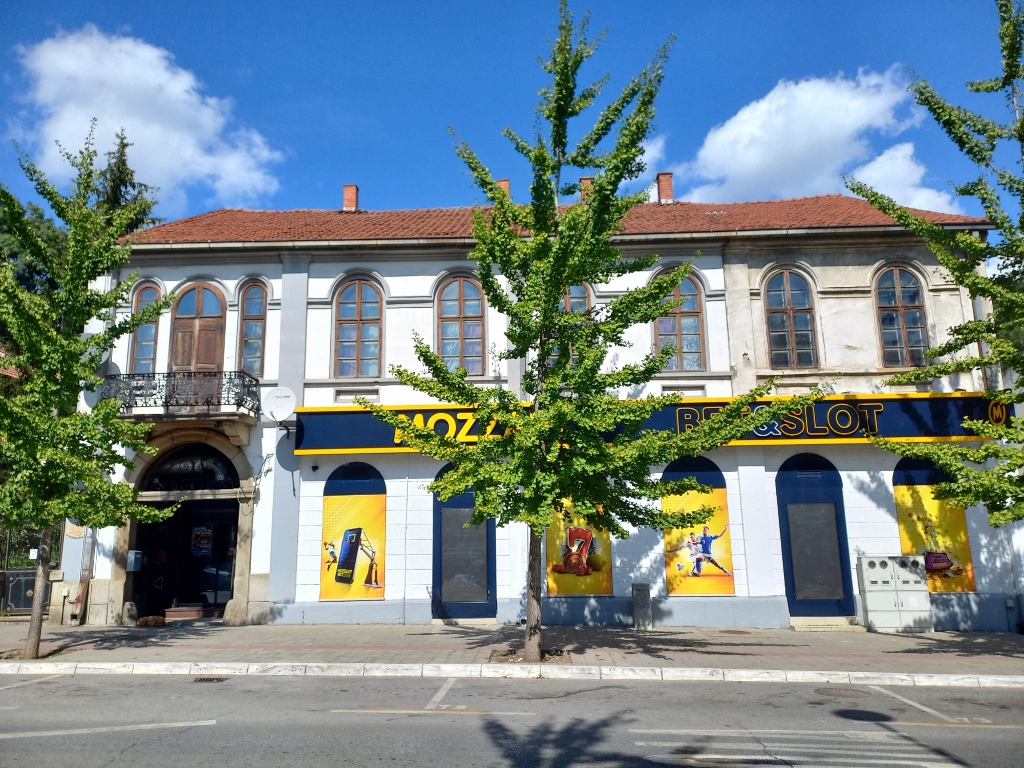 Beautiful building from 1880 in Knjaza Miloša street
Beautiful building from 1880 in Knjaza Miloša street
It was built in 1880 as a doctor’s office, while King Peter I Karađorđević stayed there on several occasions.
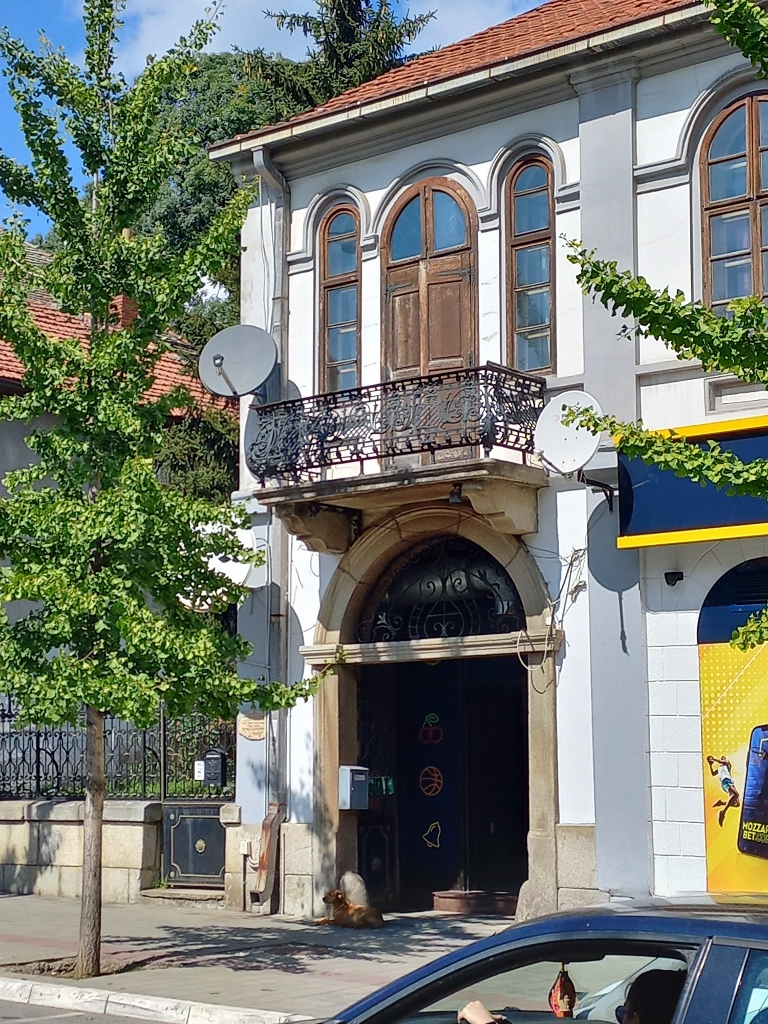 Beautiful building from 1880, the entrance
Beautiful building from 1880, the entrance
While strolling up and down this street in Aranđelovac, I saw several more nice buildings and details.
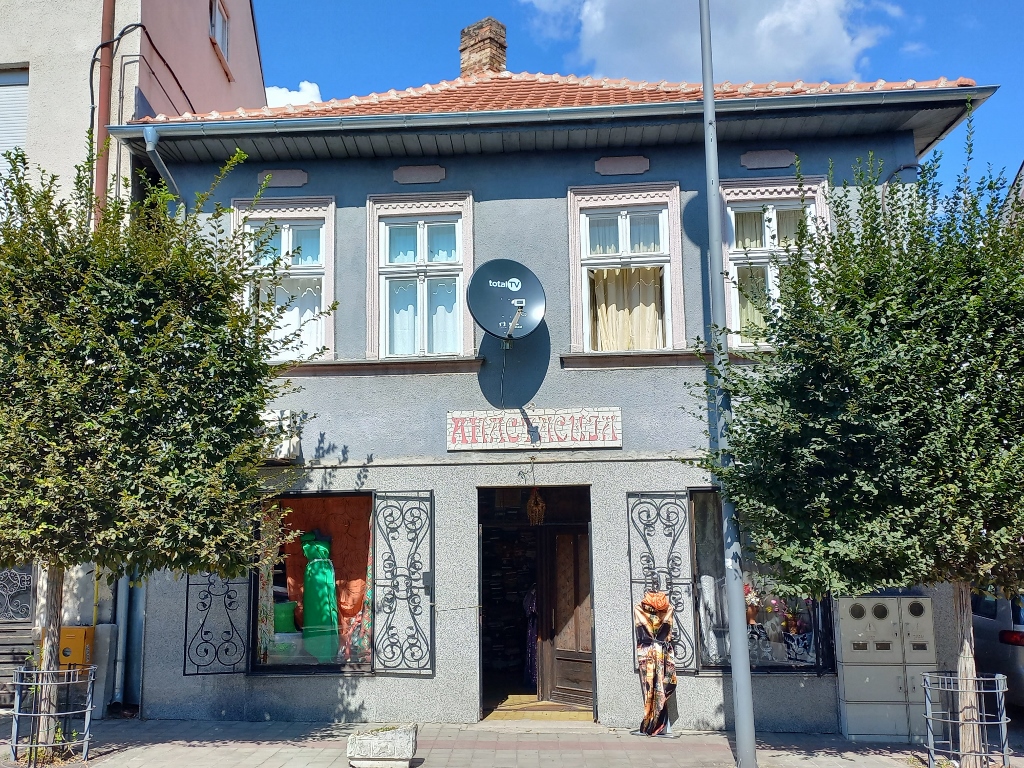 Nice building in Knjaza Miloša street
Nice building in Knjaza Miloša street
On some buildings, you can still notice architectural details reminiscent of bygone eras and construction styles, such as the wooden pillar supporting the overhang of the upper floor in the example of the house seen in the following photograph.
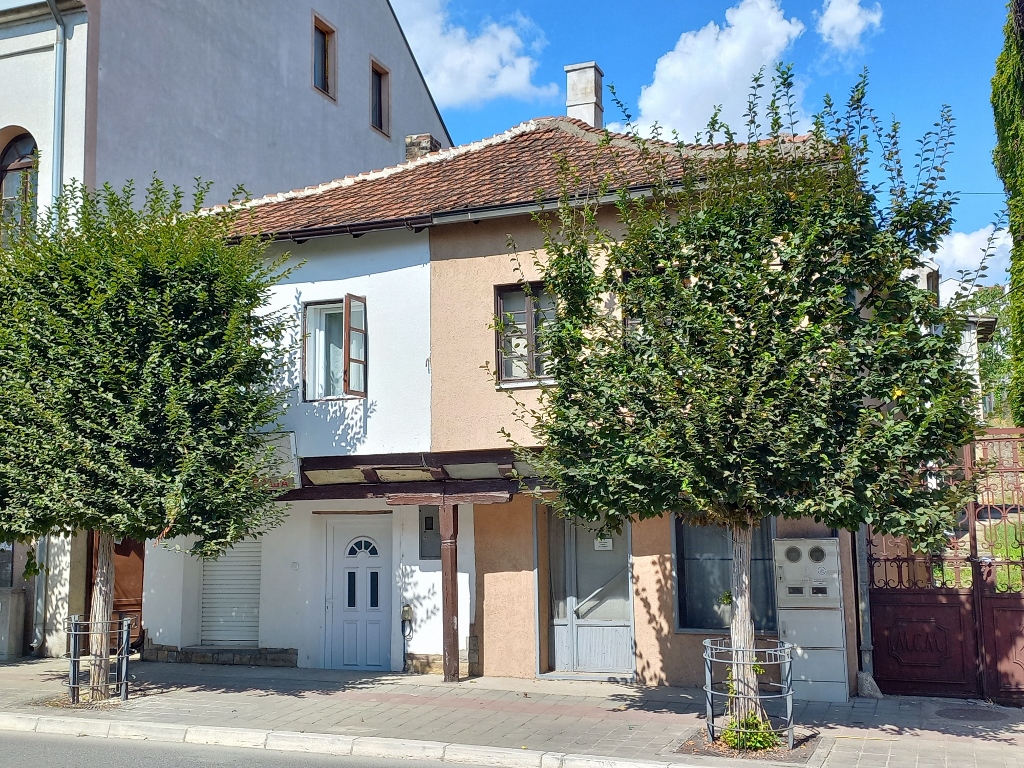 Interesting detail in Knjaza Miloša street
Interesting detail in Knjaza Miloša street
I found the staircases leading directly from the street to the shops also interesting.
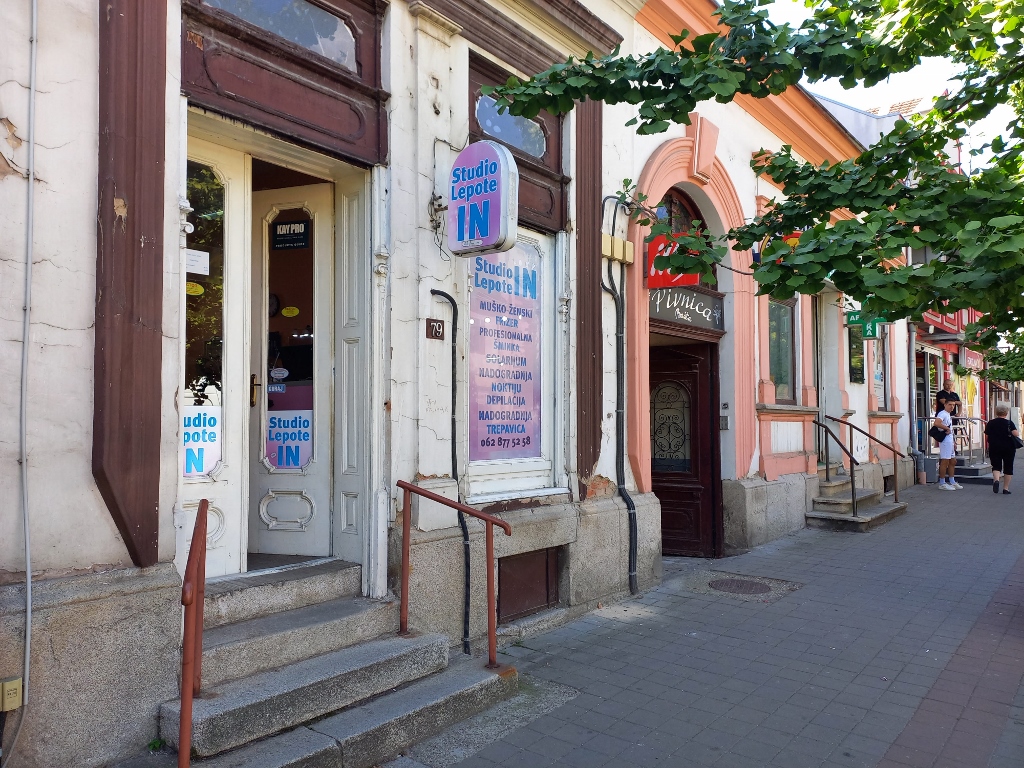 Interesting detail in Knjaza Miloša street
Interesting detail in Knjaza Miloša street
In Knjaza Miloša street, there is another cultural monument, the Old Municipal Court Building in Aranđelovac. It is the only preserved building that had a public function and serves as a fine example of the type and style of structures that contributed to Aranđelovac’s development from a small settlement to a town.
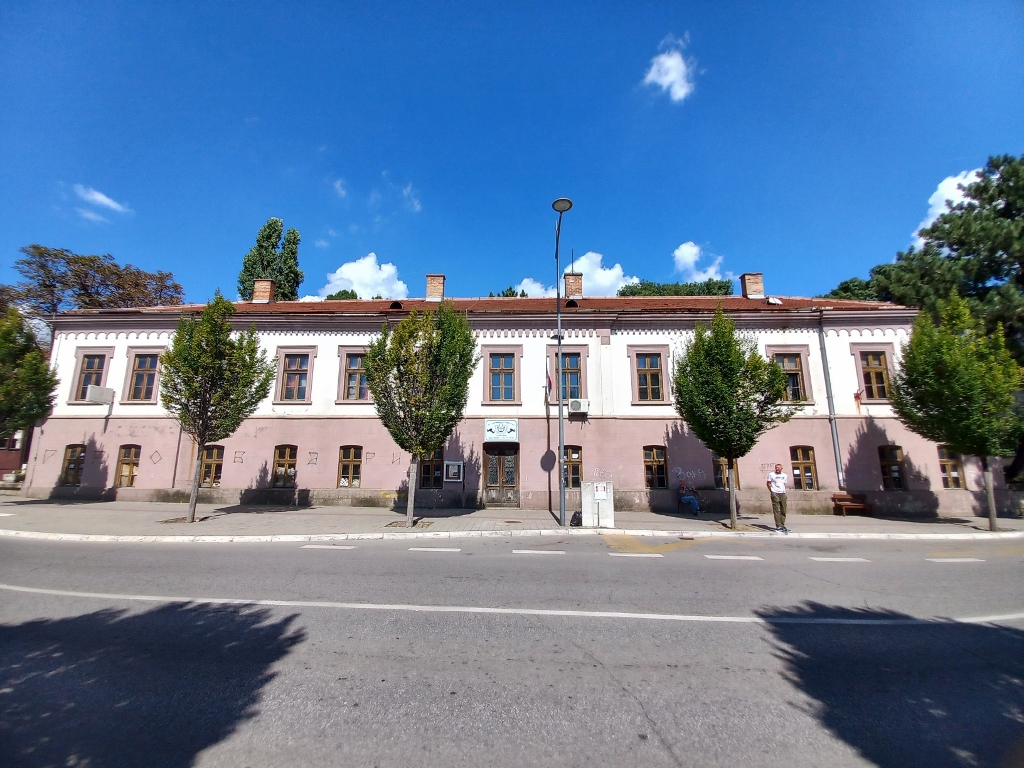 Old Municipal Court Building in Aranđelovac at Knjaza Miloša no. 74
Old Municipal Court Building in Aranđelovac at Knjaza Miloša no. 74
I couldn’t find information about when the building was constructed, but the materials I used mention that two side wings extending towards the courtyard, not visible in the previous photograph, were added in 1910, suggesting that the building dates back to the 19th century.
This was also where I concluded my stroll along Knjaza Miloša Street and then I drove to the National Museum located in the western part of the city, on the slopes of Mount Bukulja.
The National Museum in Aranđelovac was established only in 1981 and is housed in a purpose-built facility. The museum, though not large, is very beautiful and well-organised. As I was the only visitor at that moment, an exceptionally kind young woman working there guided me through the exhibition space and essentially, with the entrance ticket, I also received a guided tour of the museum.
One of the significant exhibits is the skeleton of a cave bear assembled from original bone parts found in Risovača Cave. Here, you can also see bones of various other prehistoric animals that once inhabited this region.
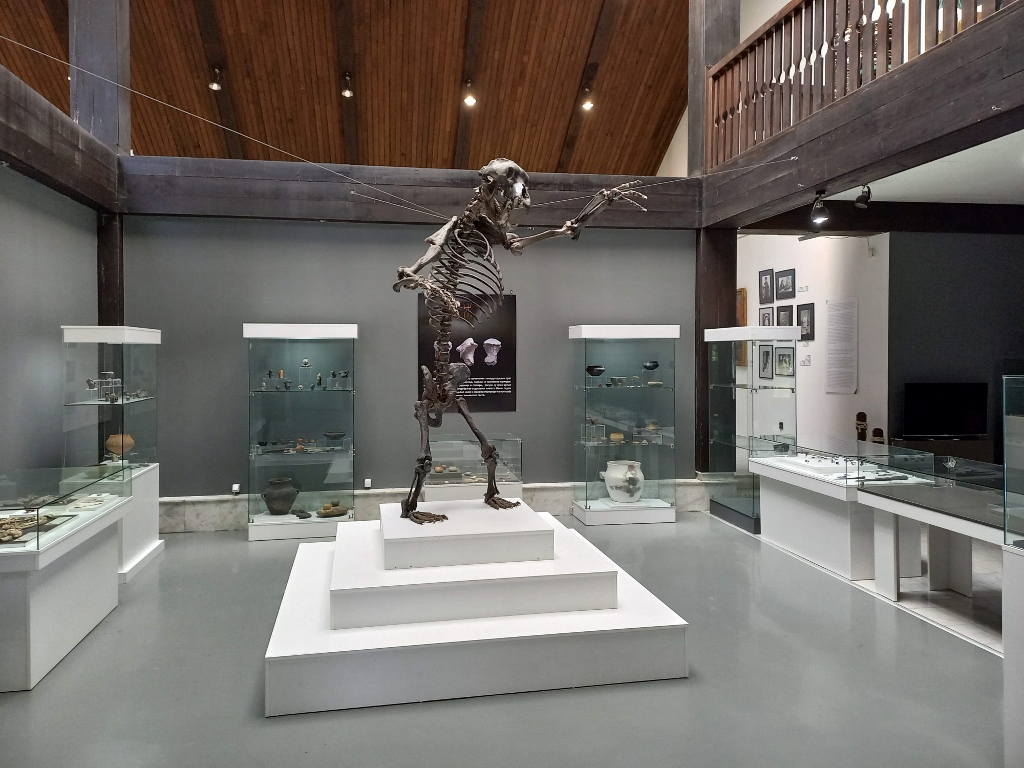 National Museum in Aranđelovac, a detail
National Museum in Aranđelovac, a detail
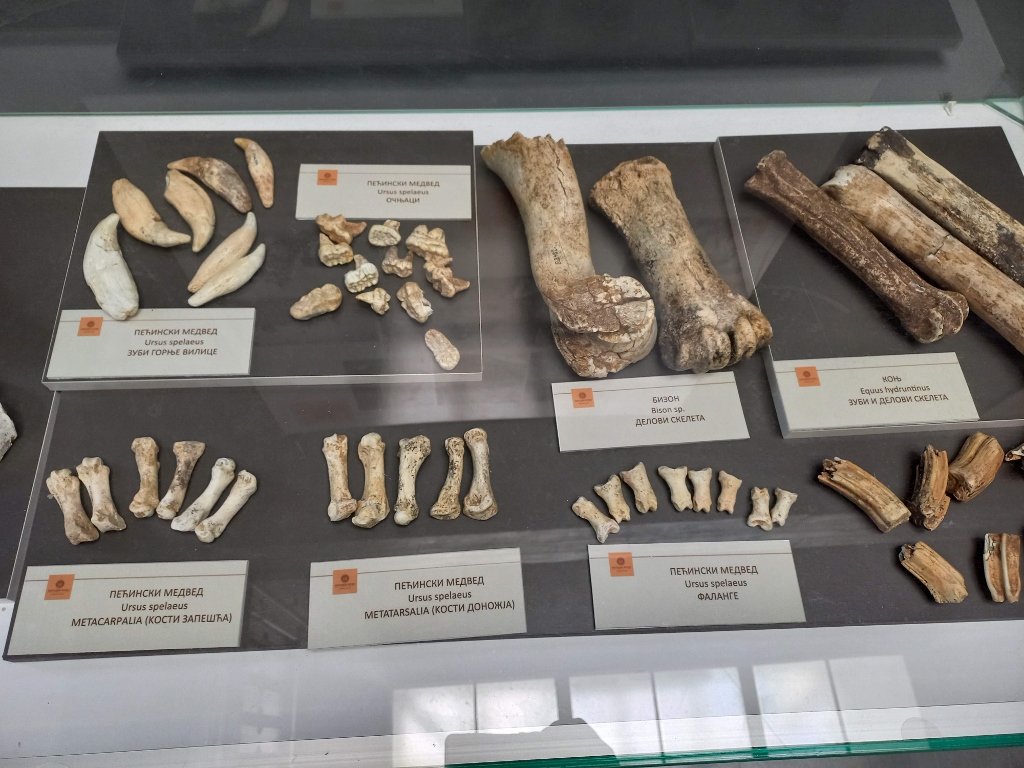 National Museum in Aranđelovac, a detail
National Museum in Aranđelovac, a detail
In addition to animal bones, as I mentioned earlier, remnants of tools used by people who stayed in the cave were also found.
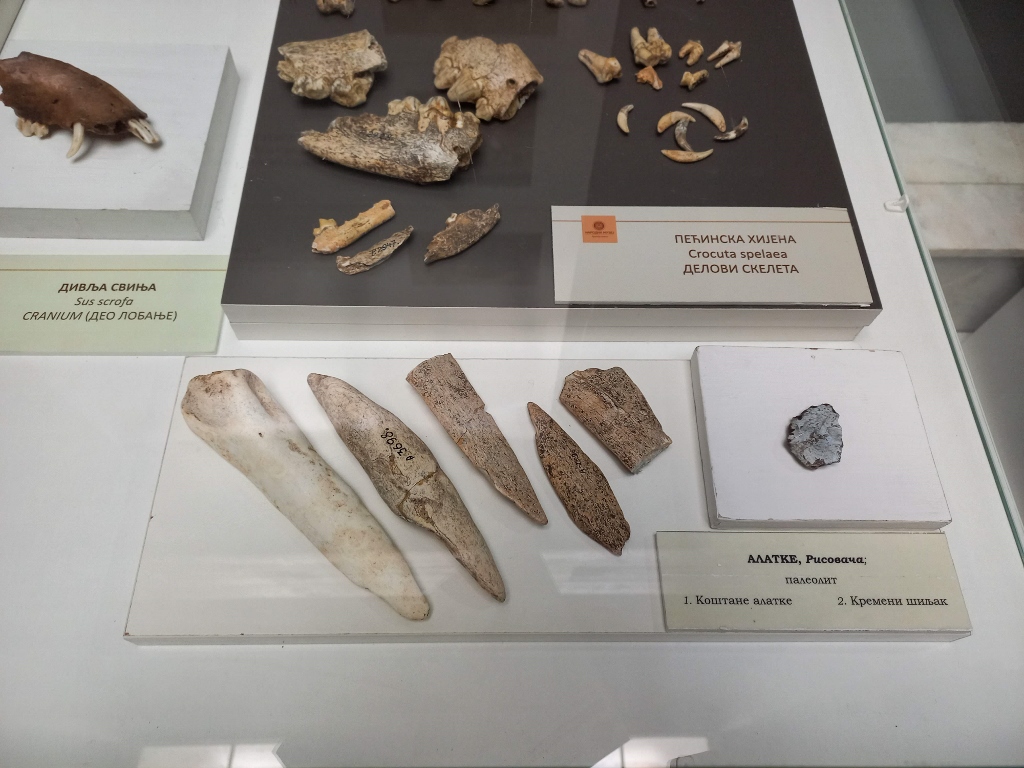 National Museum in Aranđelovac, a detail
National Museum in Aranđelovac, a detail
But, artefacts belonging to the famous Vinča culture from the Late Stone Age or Neolithic period, from around 5700-4500 BCE, were also found at the site.
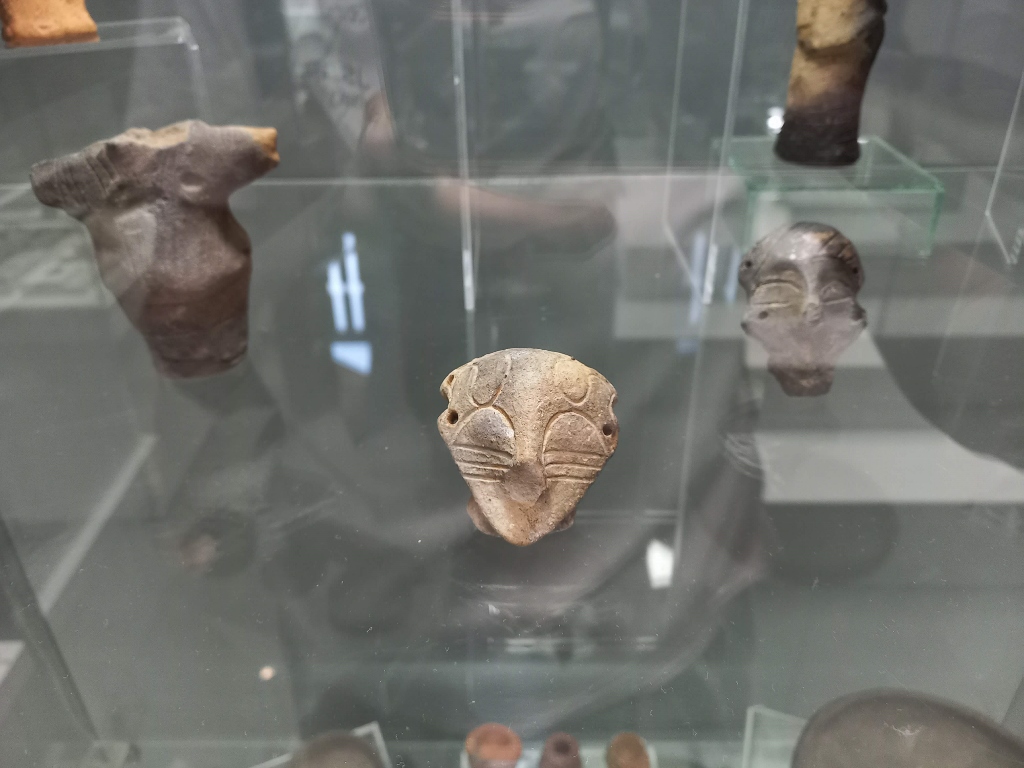 National Museum in Aranđelovac, a detail
National Museum in Aranđelovac, a detail
In the museum, you can then see some exhibits from the new era found in the wider vicinity of Aranđelovac, such as columns from the 4th century CE and a lion figure from the 2nd-3rd century CE, as well as parts of frescoes from a slightly later period.
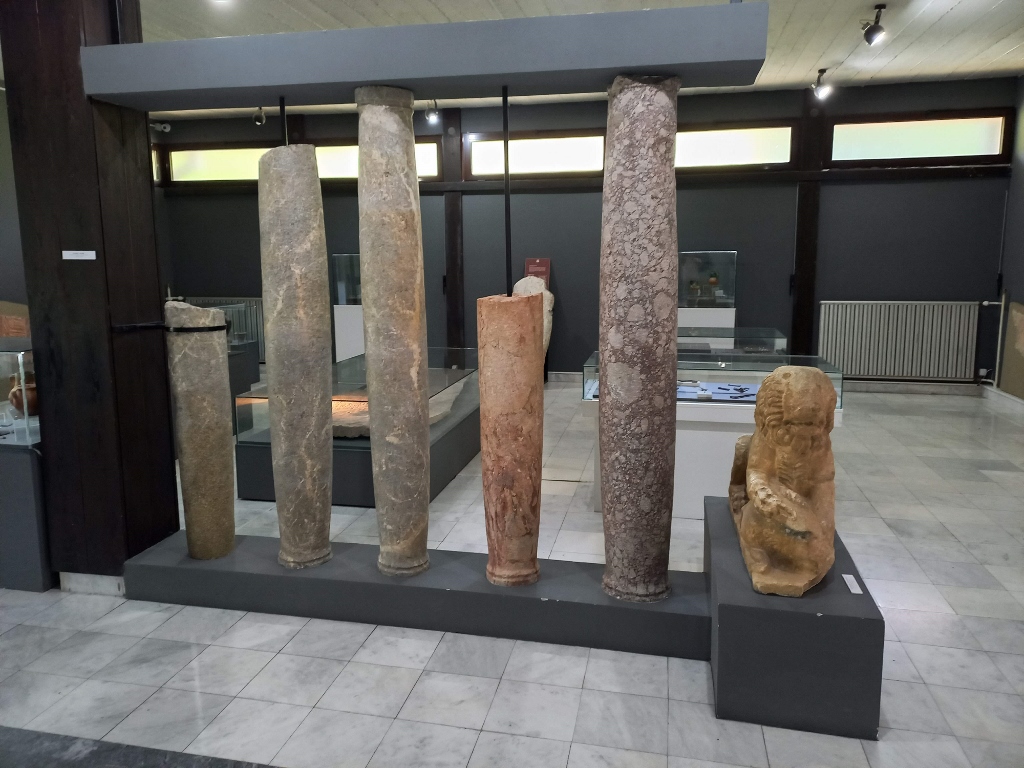 National Museum in Aranđelovac, a detail
National Museum in Aranđelovac, a detail
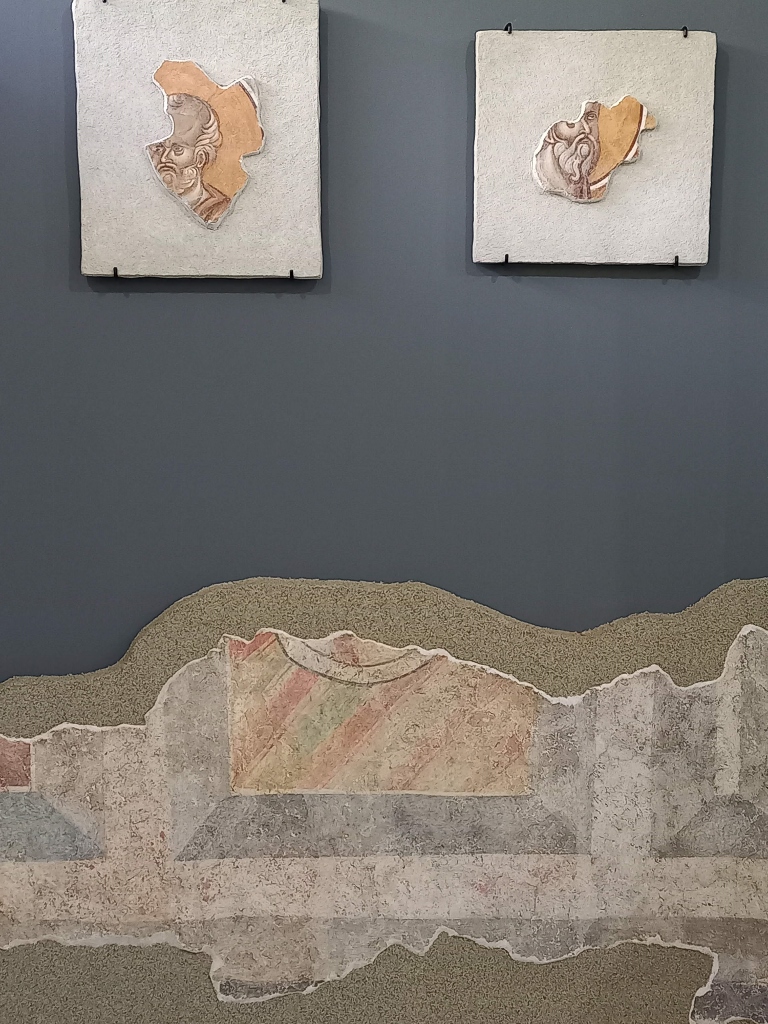 National Museum in Aranđelovac, a detail
National Museum in Aranđelovac, a detail
Given the very tumultuous events during the First and the Second World Wars, a part of the museum exhibition also deals with that period. Various pieces of weapons, as well as photographs, decorations, letters related to those periods, and more can be seen.
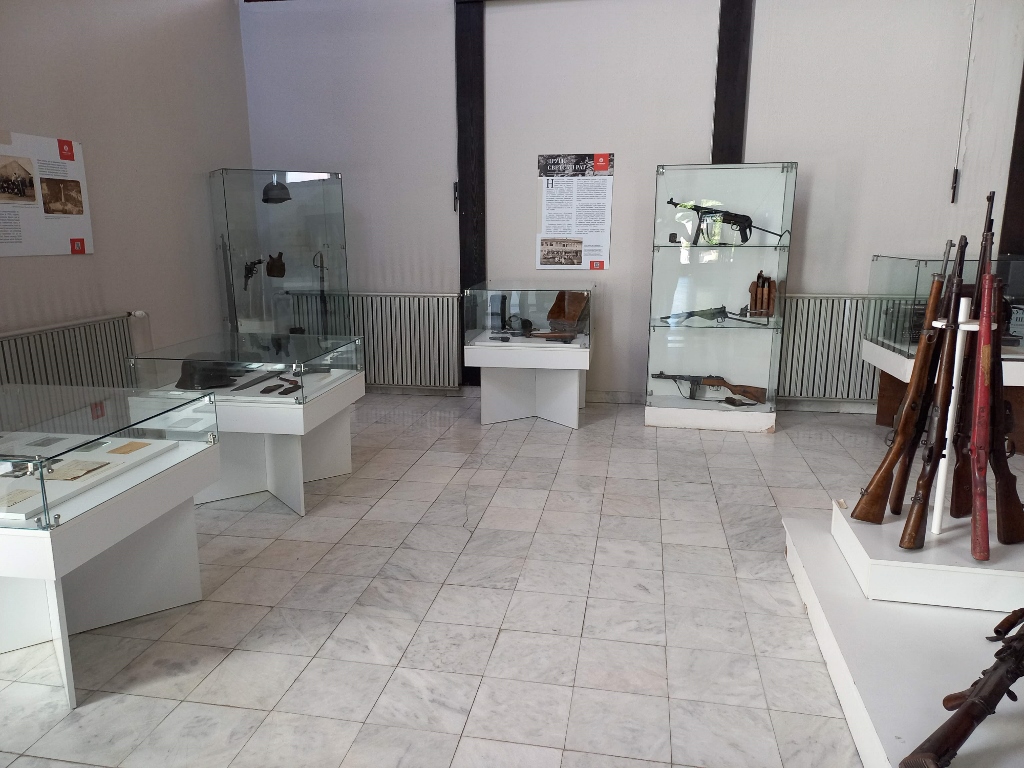 National Museum in Aranđelovac, a detail
National Museum in Aranđelovac, a detail
The exhibit also includes a beautiful Cyrillic typewriter produced in the USA in the fourth decade of the 20th century. Besides finding it interesting to see such a machine in the museum, it didn’t surprise me much because even the famous Mihajlo Pupin had a similar typewriter in New York (see: https://www.svudapodji.com/en/idvor/).
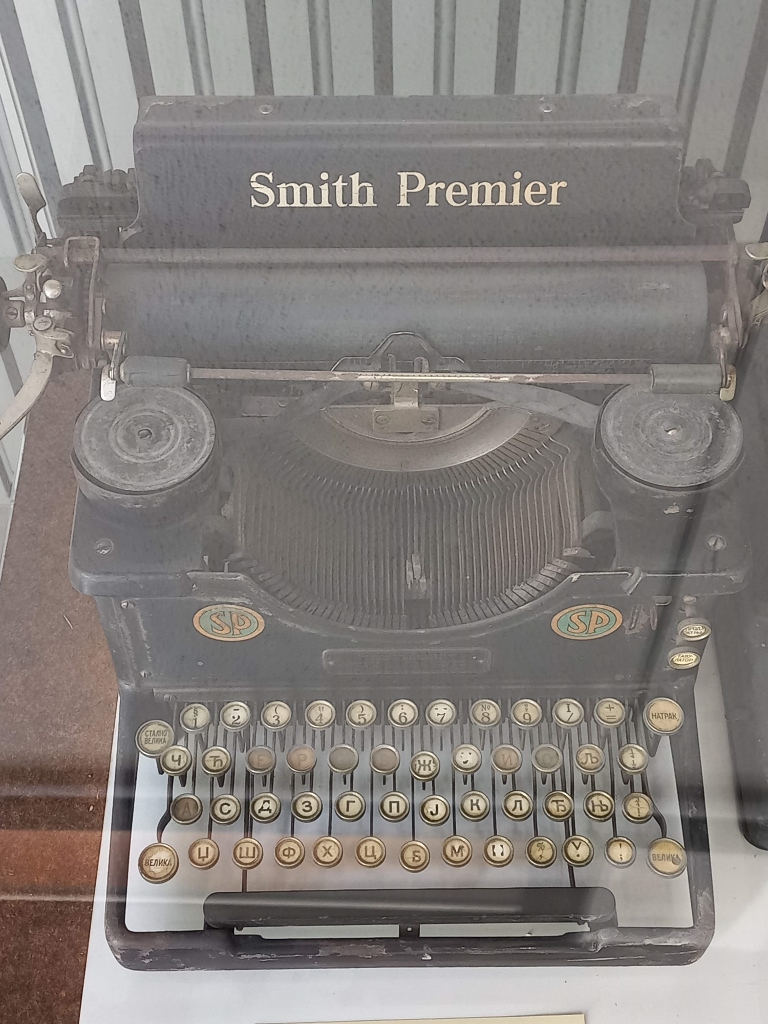 National Museum in Aranđelovac, a detail
National Museum in Aranđelovac, a detail
A section of the museum is dedicated to displaying an ethnographic collection and exhibits illustrating old crafts that are increasingly disappearing in modern times are also showcased, such as the production of opanci – traditional footwear in Serbia and throughout Southeastern Europe.
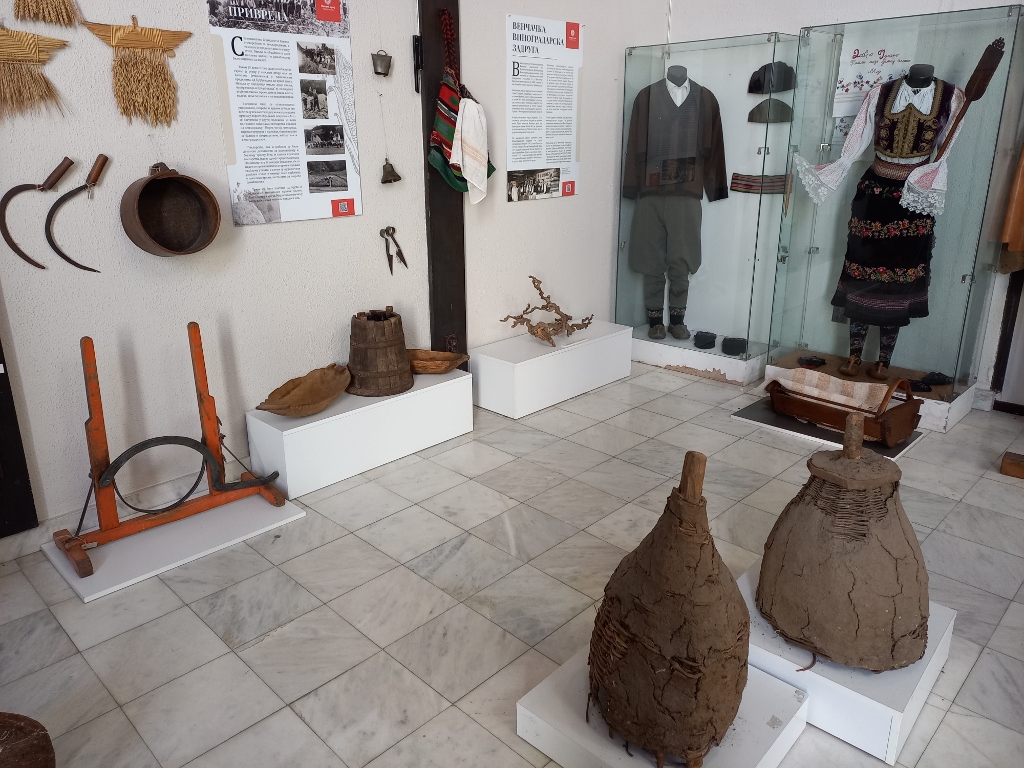 National Museum in Aranđelovac, a detail
National Museum in Aranđelovac, a detail
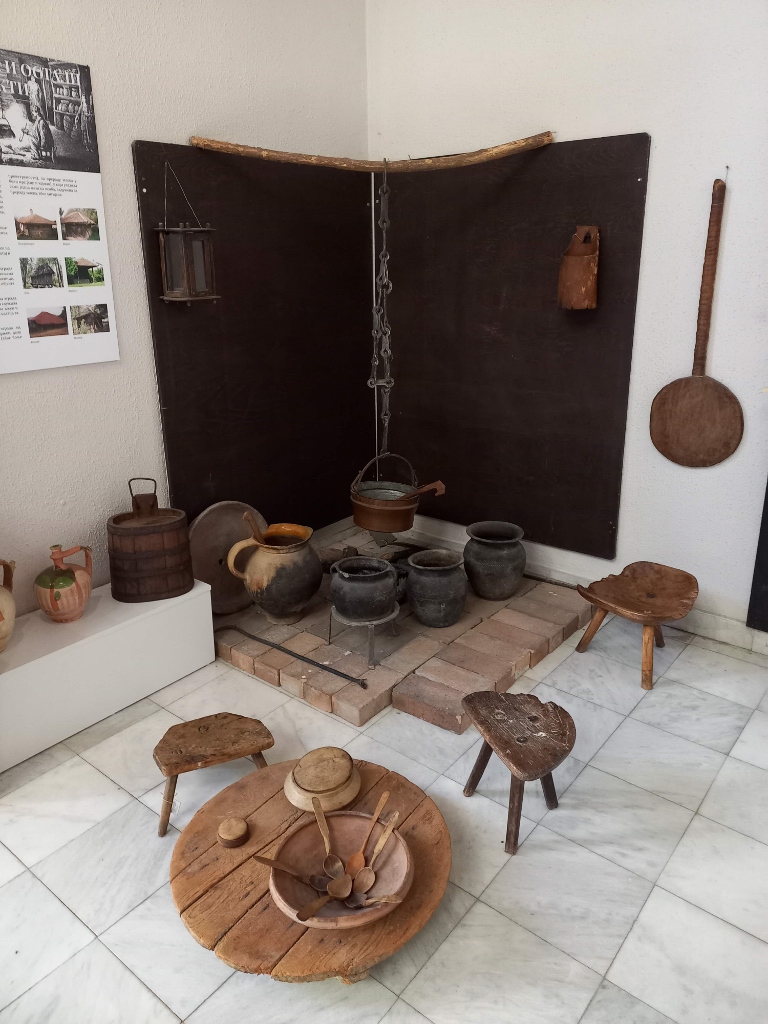 National Museum in Aranđelovac, a detail
National Museum in Aranđelovac, a detail
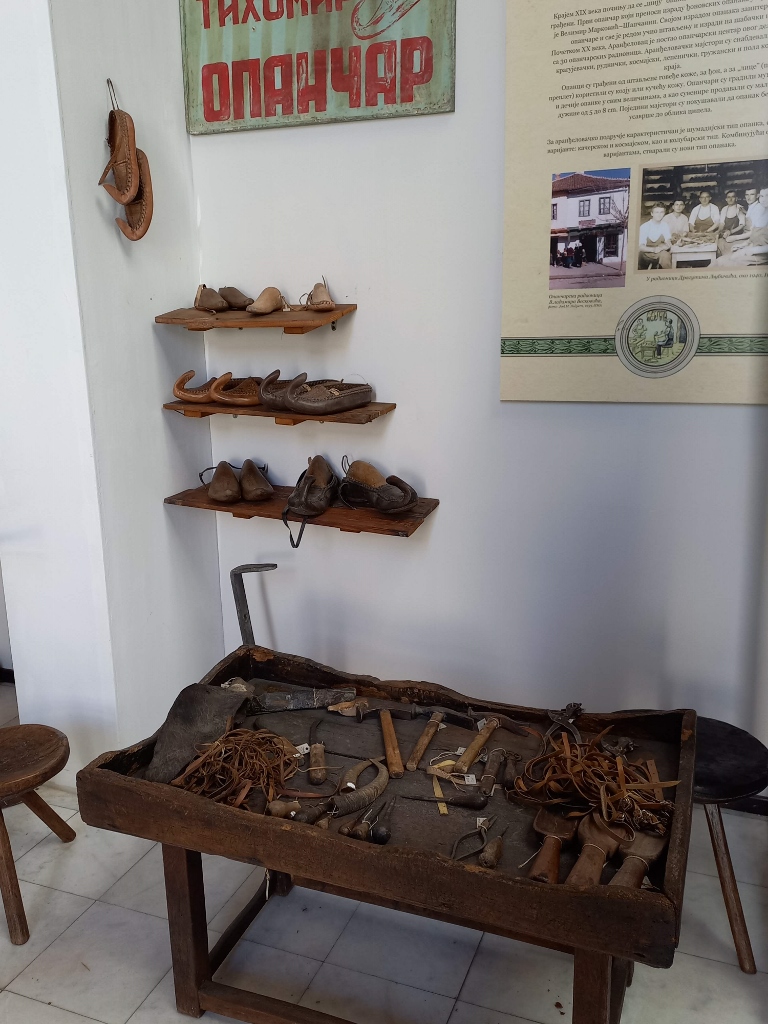 National Museum in Aranđelovac, a detail
National Museum in Aranđelovac, a detail
A section of the museum is inevitably dedicated to the mineral water from Bukovička Banja, which is practically a part of Aranđelovac. However, I dealt with that a bit later when I went there. For now, I went upstairs in the museum where various beautiful examples of contemporary ceramics can be seen. The museum has a tradition of inviting artists from around the world, who then donate their works to the museum.
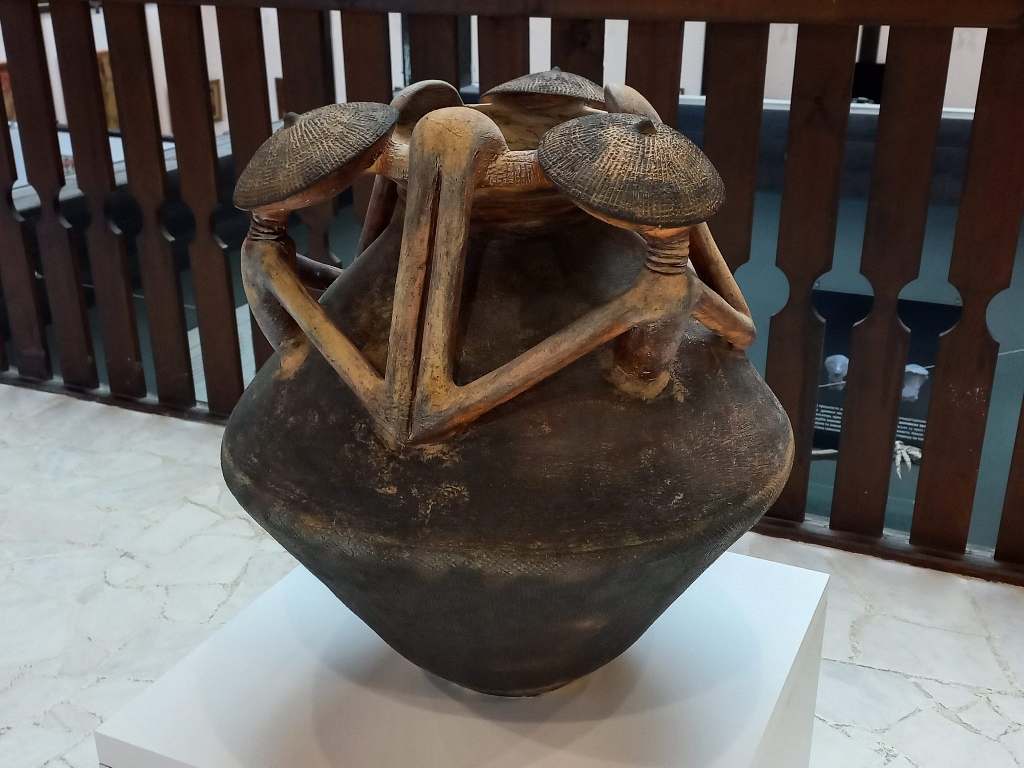 National Museum in Aranđelovac, a detail
National Museum in Aranđelovac, a detail
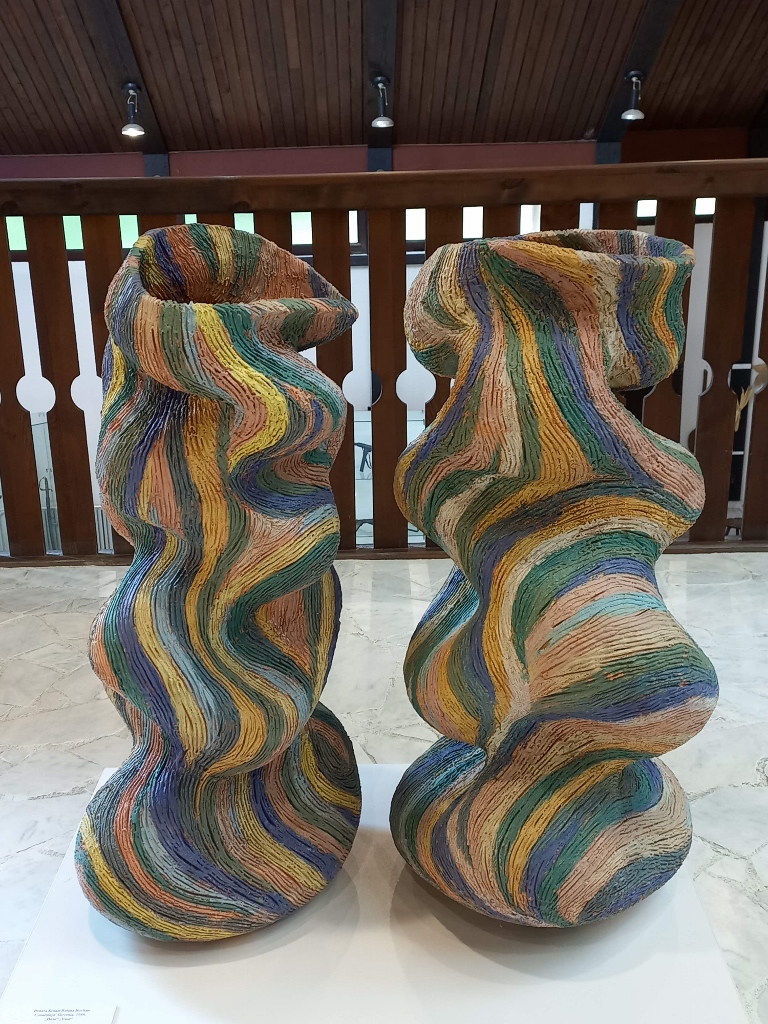 National Museum in Aranđelovac, a detail
National Museum in Aranđelovac, a detail
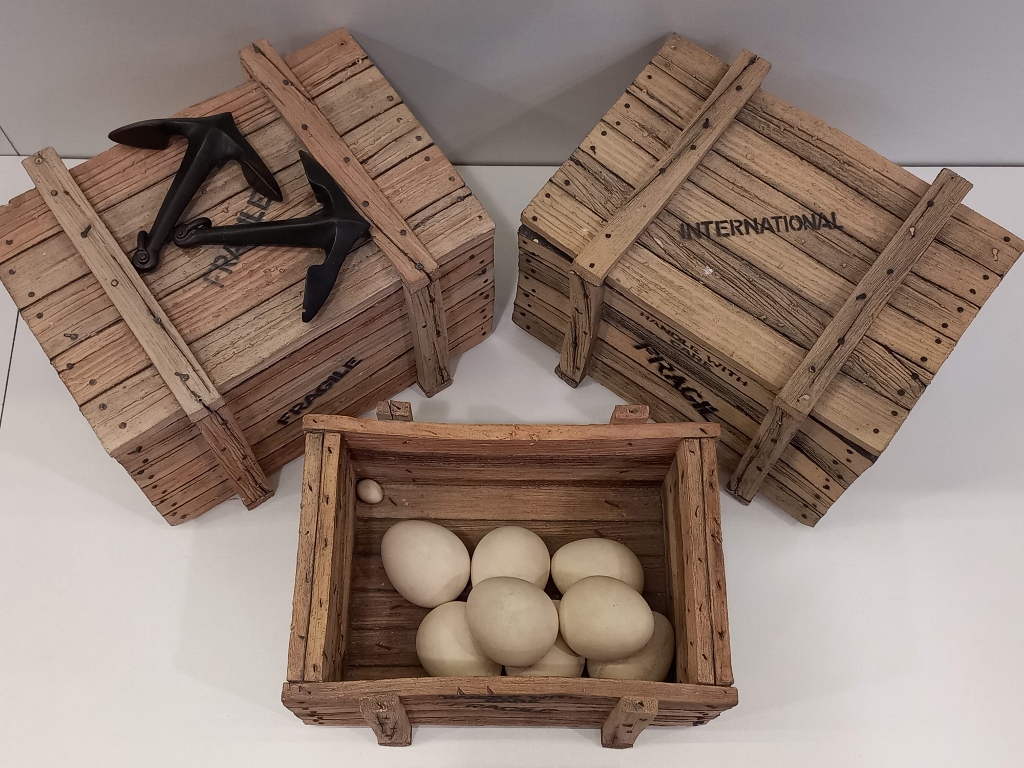 National Museum in Aranđelovac, a detail
National Museum in Aranđelovac, a detail
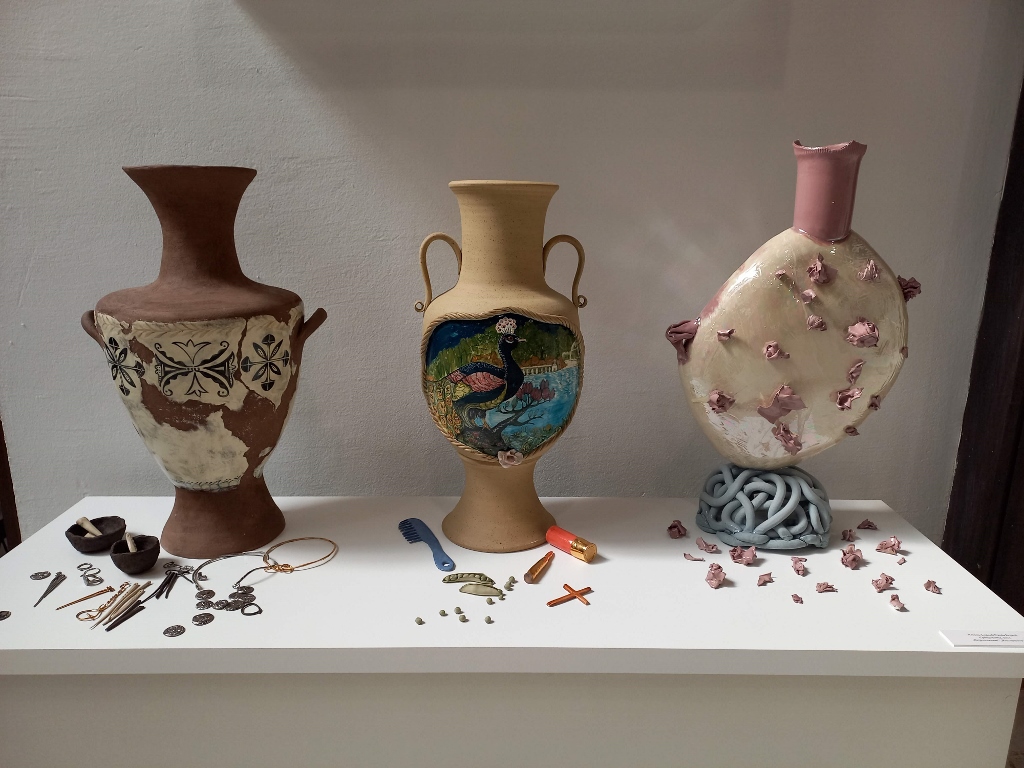 National Museum in Aranđelovac, a detail
National Museum in Aranđelovac, a detail
In the immediate vicinity of the National Museum in Aranđelovac, there is also the Church of the Holy Archangel Gabriel in Bukovik, which is a cultural monument.
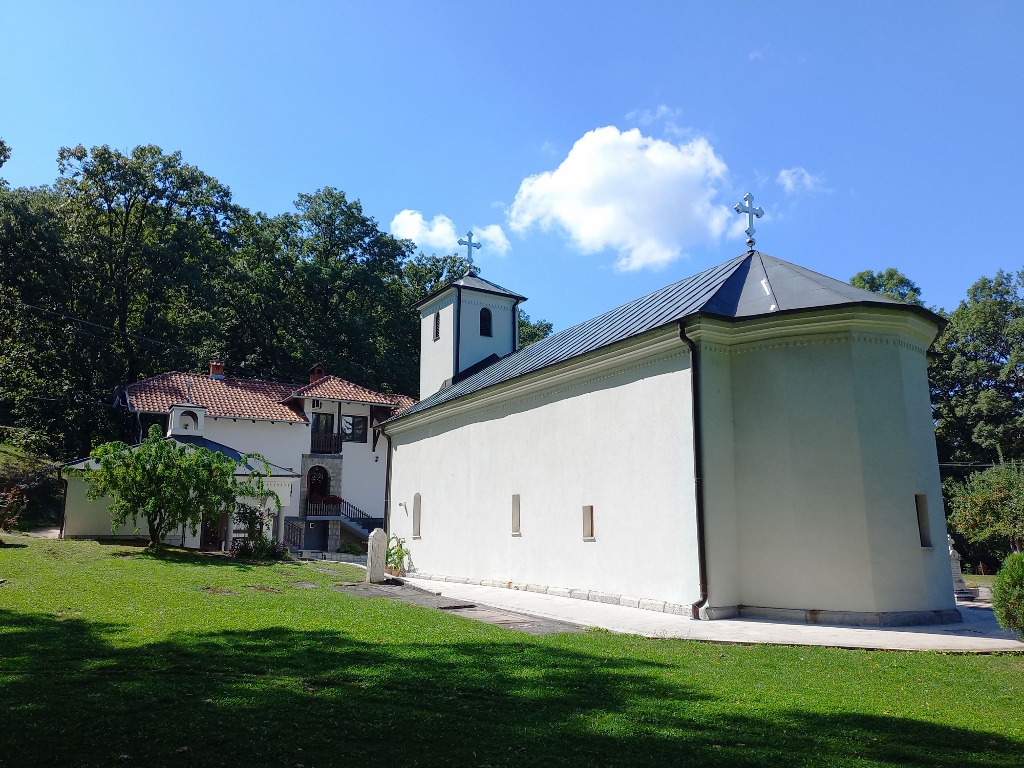 Church of the Holy Archangel Gabriel in Bukovik
Church of the Holy Archangel Gabriel in Bukovik
The original church dated back to the second half of the 14th century, but it was burned down after the failure of the First Serbian Uprising. However, in 1832, a new church was built on its foundations, with the bell tower added later. When you enter inside, the church may seem a bit “narrow,” but it is certainly very richly decorated. I assume that the frescoes date back to 2014 when a new iconostasis made of white marble from Venčac mountain was also installed.
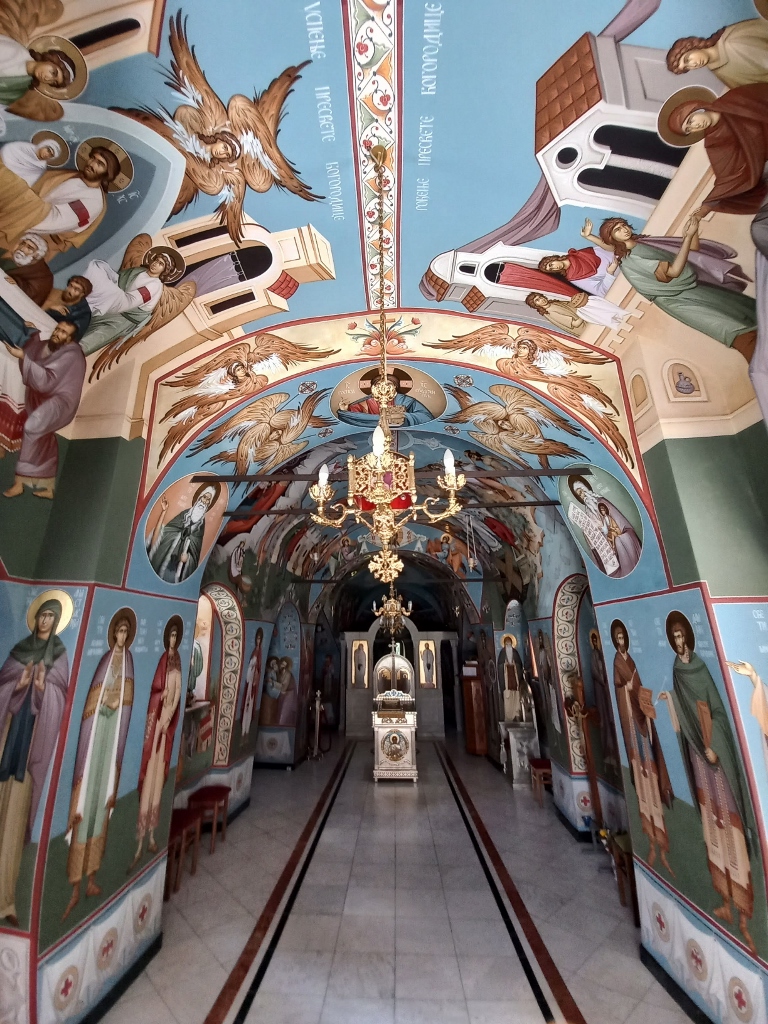 Church of the Holy Archangel Gabriel, the interior
Church of the Holy Archangel Gabriel, the interior
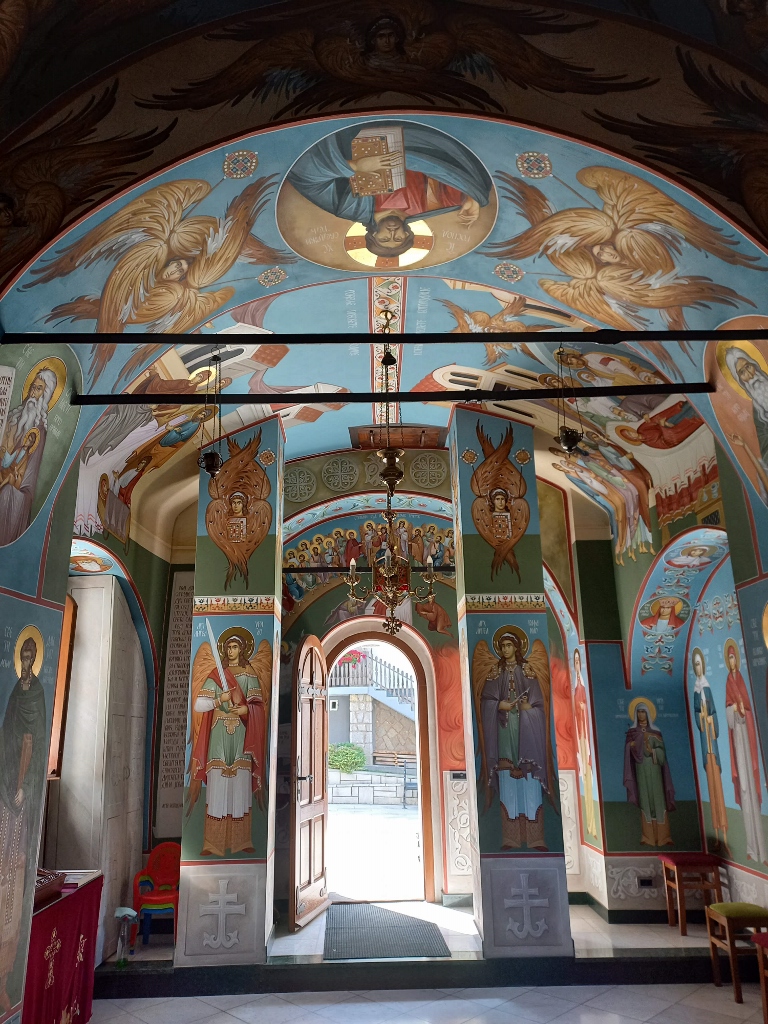 Church of the Holy Archangel Gabriel, the interior
Church of the Holy Archangel Gabriel, the interior
From the courtyard of this church, between tall trees, you can glimpse another cultural monument, namely the “Karadžić” Villa.
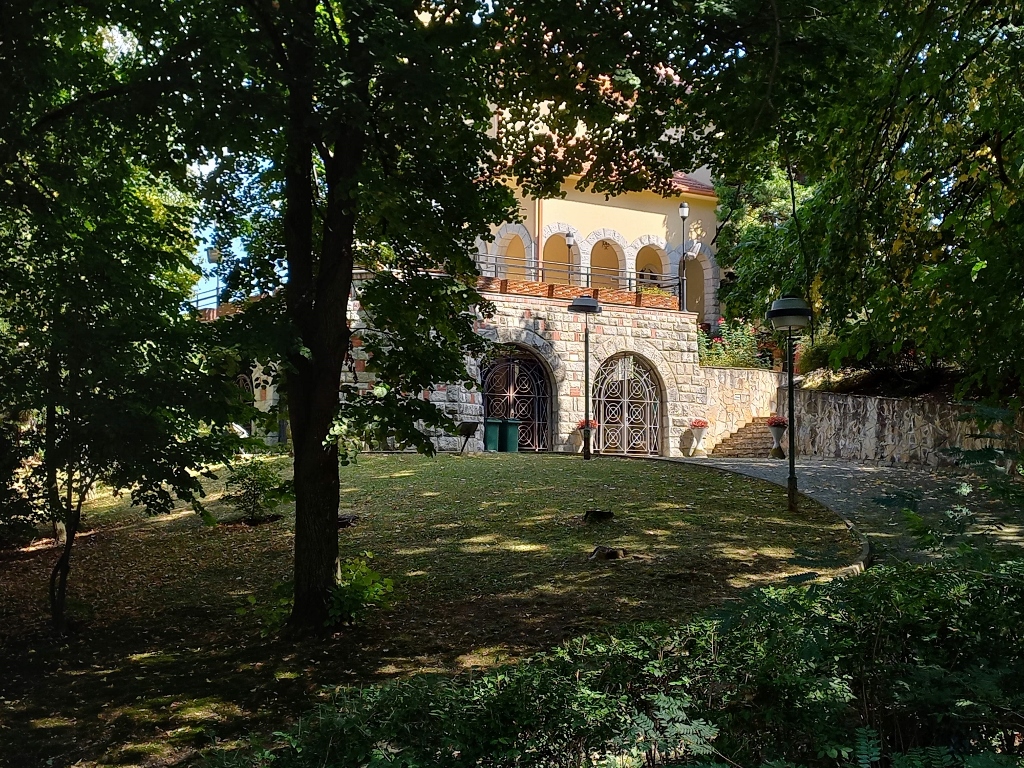 “Karadžić” Villa
“Karadžić” Villa
However, you cannot reach this villa and it cannot be visited as it is owned by the company “Elektromreža Srbije” (national transmission system operator), so there is a high fence around the property. But... You can still get a somewhat better view of the villa, but in order to do that, you need to go to the parking lot of the General Hospital in Aranđelovac.
When I arrived at the hospital parking lot, I first had a good laugh seeing an ambulance car that reminded me of the Darth Vader of ambulance cars. When I go on these journeys, I am very open to various impressions and like to pay attention to random details that I notice.
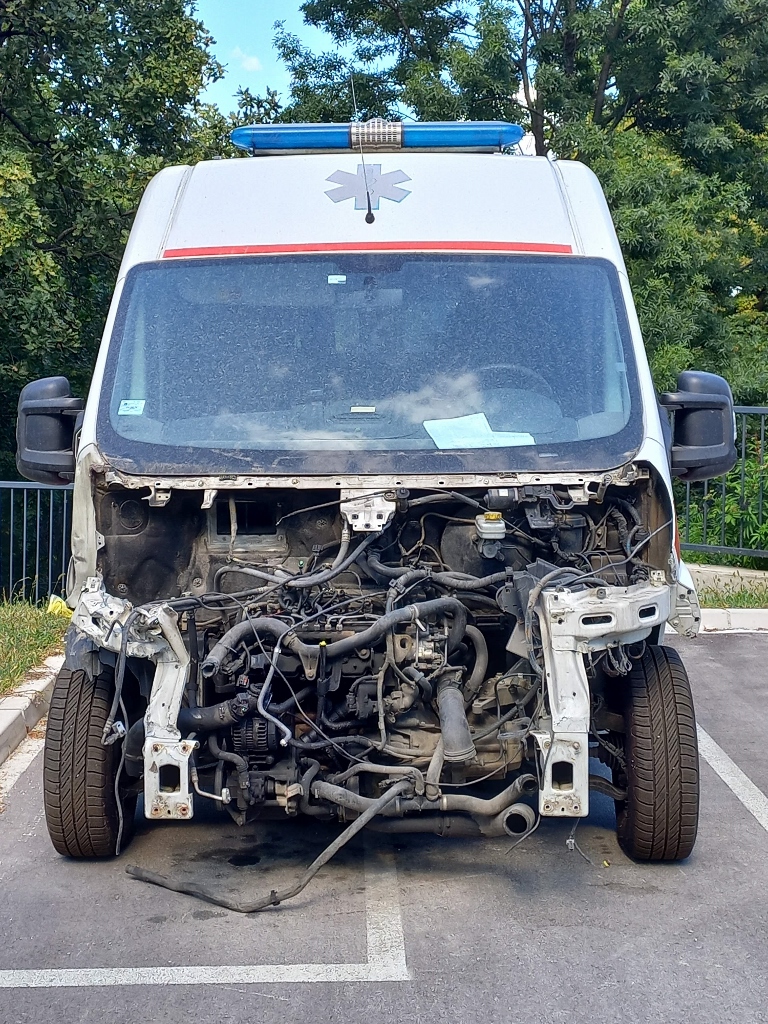 Darth Vader of ambulance cars
Darth Vader of ambulance cars
As for the “Karadžić” Villa, it is an exceptionally beautiful building nestled in the middle of a forest, designed by an architect who was a refugee from Russia, presumably after the October Revolution. The villa was built in the fourth decade of the 20th century and its first owner was the director of the National Theatre in Niš, whose last name was Karadžić. Therefore, the building did not get its name after Vuk Karadžić. The villa is conceived as a combination of a medieval castle and elements of the Moravan architecture.
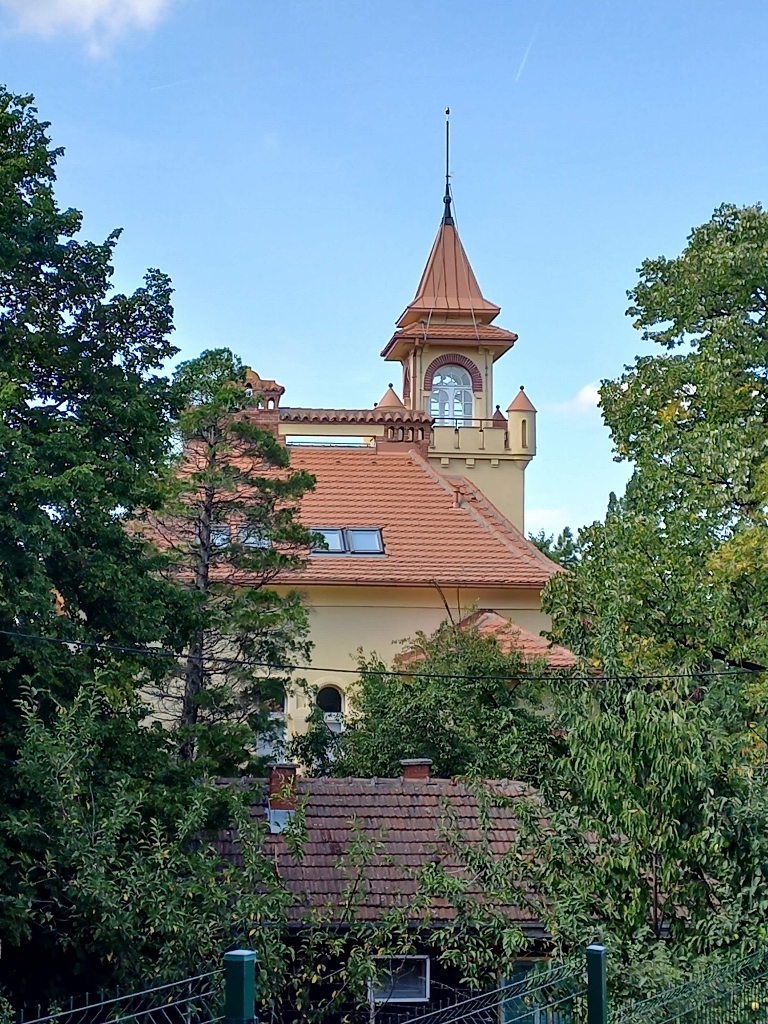 “Karadžić” Villa
“Karadžić” Villa
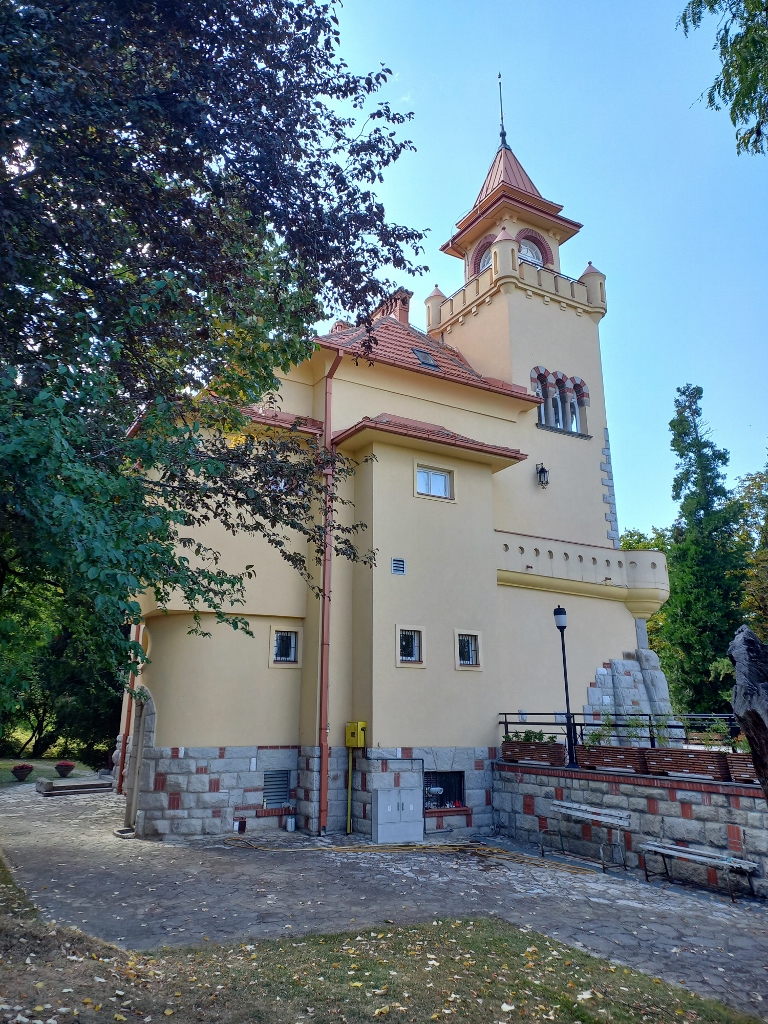 “Karadžić” Villa
“Karadžić” Villa
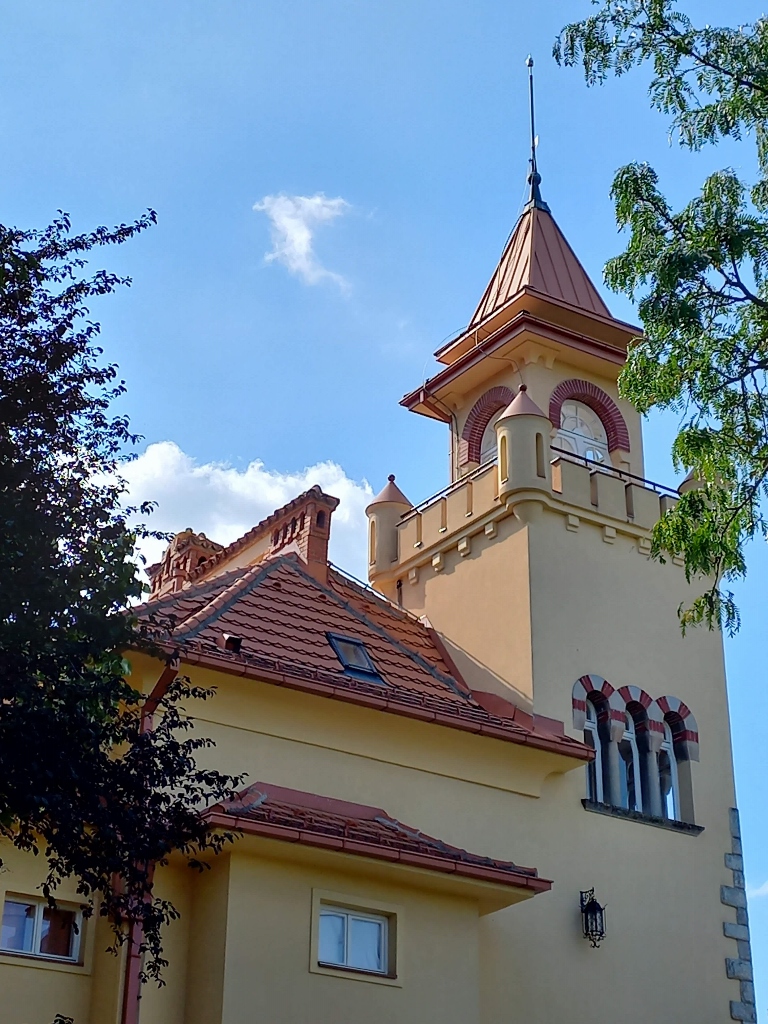 “Karadžić” Villa
“Karadžić” Villa
After seeing this cultural monument in Aranđelovac, I drove to the top of Mount Bukulja. Initially, I thought I could hike to the summit since this extinct volcano is 696 meters high, while, of course, the ascent doesn’t start at sea level. However, I realised I didn’t have much time, so I opted to drive to the top.
One of the reasons I wanted to go to the summit was that I had received a good recommendation for a restaurant located there and I wanted to have lunch. On this occasion, I chose a somewhat unusual dish for my taste, but it was absolutely fantastic – veal cheek. Initially, I doubted my capacity, but in the end, I pleasantly surprised myself by completely cleaning the plate.
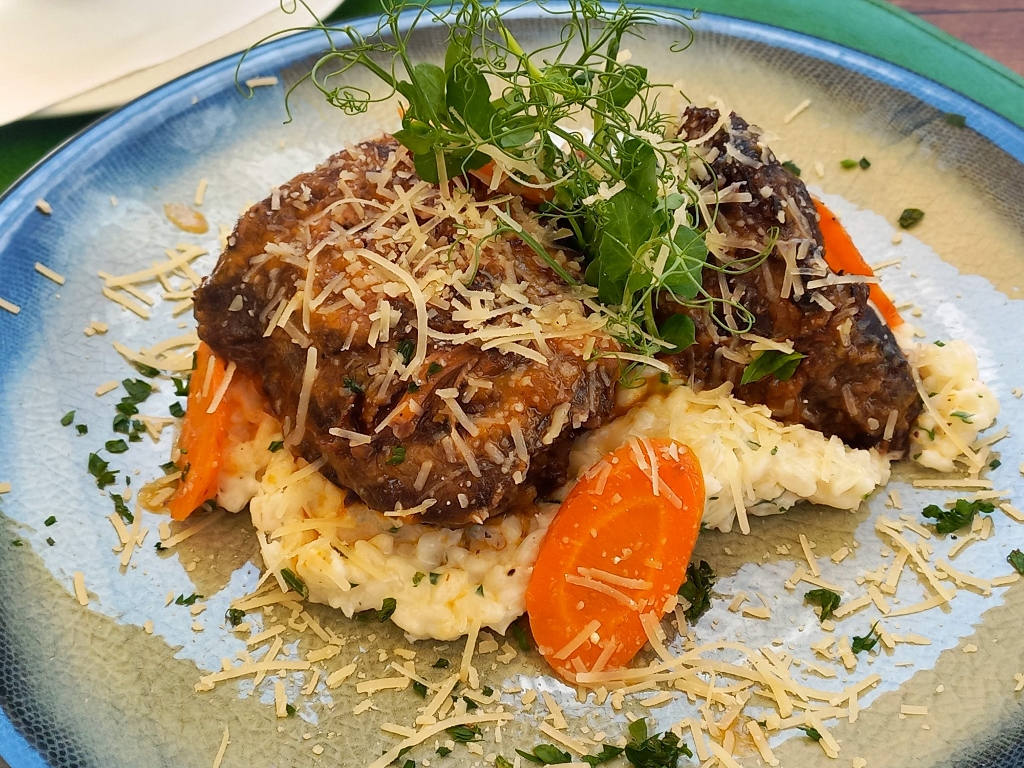 Veal cheek
Veal cheek
After the wonderful lunch, I took advantage of the fact that it was a beautiful, sunny day and went for a stroll to the nearby observation tower.
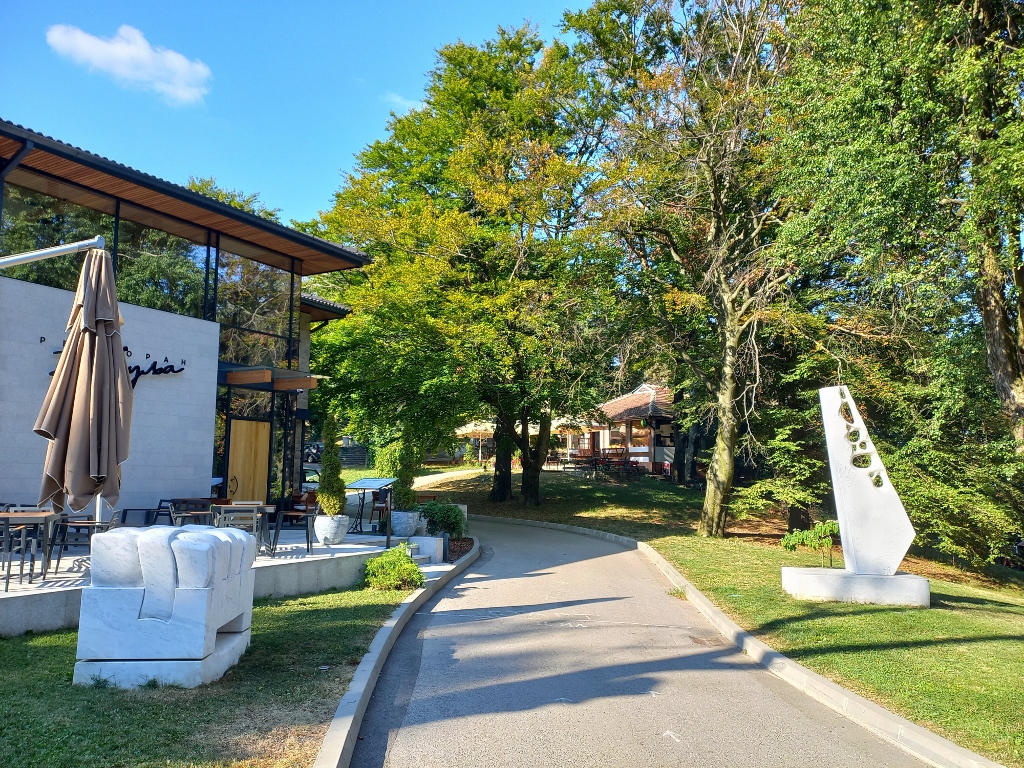 Area around the summit of Bukulja mountain
Area around the summit of Bukulja mountain
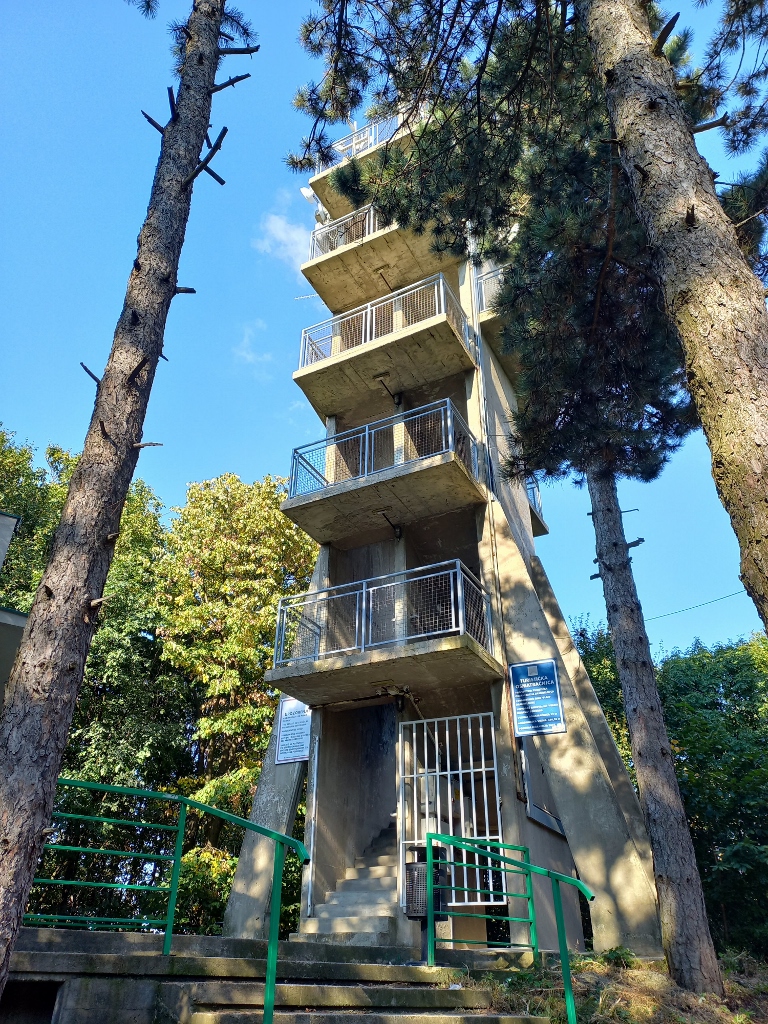 Observation tower on Bukulja mountain
Observation tower on Bukulja mountain
Climbing the tower was both challenging and necessary after that hearty lunch, but in the end, it was absolutely worth it. The view from up there was fantastic.
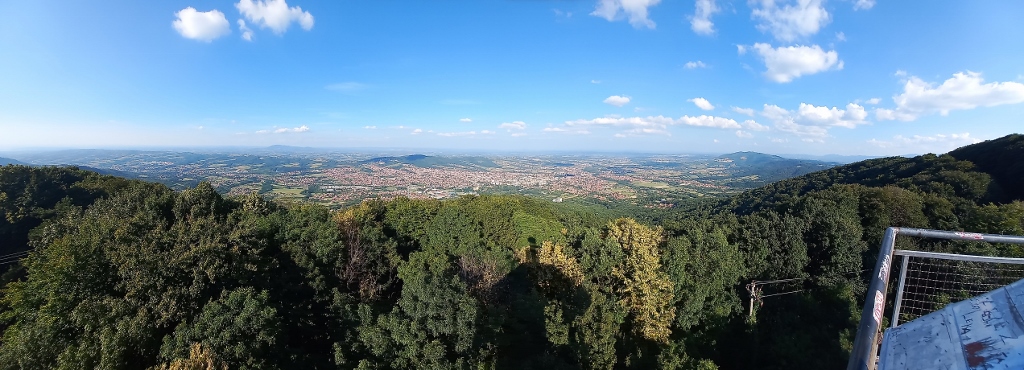 View at Aranđelovac from the top of Bukulja
View at Aranđelovac from the top of Bukulja
Although I passed by the Bukovička Banja Park (Bukovička Spa Park) already on my way to the National Museum, it was only after the lunch and climbing the observation tower that I returned to the park, leaving my car there in order to take a stroll.
This park originated in the late first half of the 19th century as part of the vision of engineer Emilijan Josimović, the first Serbian urban planner. He initiated the idea of establishing green spaces in cities across Serbia, not just in Belgrade. Good for him! The land for the park was purchased in 1849 and the work began with the planting of the first trees and the regulating of a thermal water source and the “Talpara” bath. By 1856, the park had a layout very similar to today’s, while its final contours were established between 1900 and 1905. The park, along with the spa, underwent significant changes in the fourth decade of the 20th century when most of the current structures were built.
My plan was to take a leisurely walk in the park without delving into too many details. First, I came across the building of the Special Hospital for Rehabilitation “Bukovička Banja,” which focuses on treating and rehabilitating rheumatic diseases, respiratory diseases, and injuries and diseases of the skeletal system.
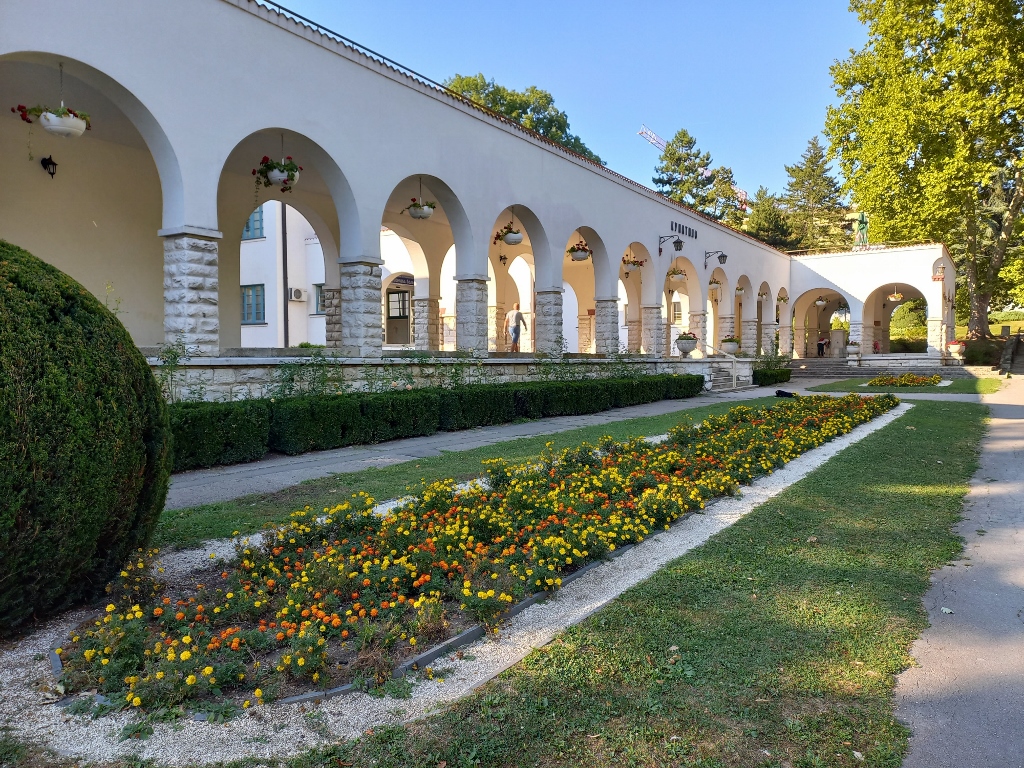 Part of the Special Hospital for Rehabilitation “Bukovička Banja”
Part of the Special Hospital for Rehabilitation “Bukovička Banja”
Nearby is the “Staro zdanje” (Old Edifice) from 1868, which served as a summer residence for the Obrenović family for a while. The structure is quite large, around 9000 square meters, and the kings from the Obrenović dynasty used to host lavish balls there. After the change of the dynasties in power in Serbia in 1903, this building lost its function but was converted into a hotel as early as 1906. Even during socialist Yugoslavia, the facility continued to operate as an exclusive hotel, but over time, it fell into decline. In 2022, a fire broke out here (believed to be an arson), but despite being considerably damaged, a significant portion of the building survived and there are plans for its reconstruction.
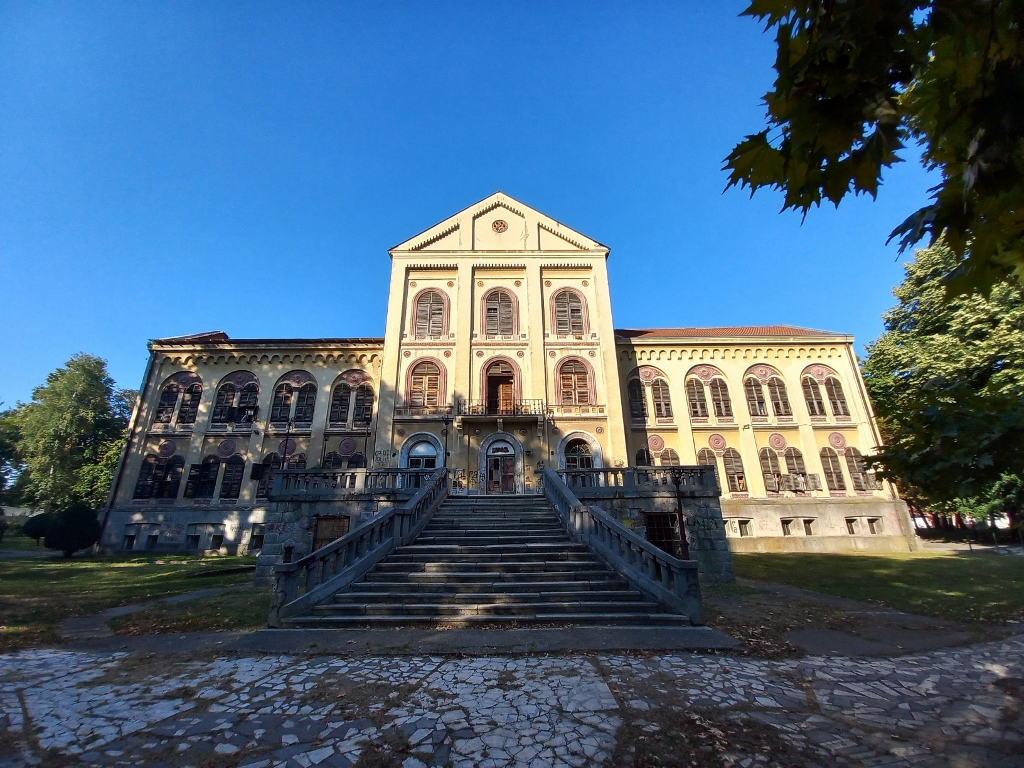 Staro zdanje
Staro zdanje
In front of the “Staro zdanje” there is a beautiful fountain and from there I began my stroll through the park, paying more attention to various details.
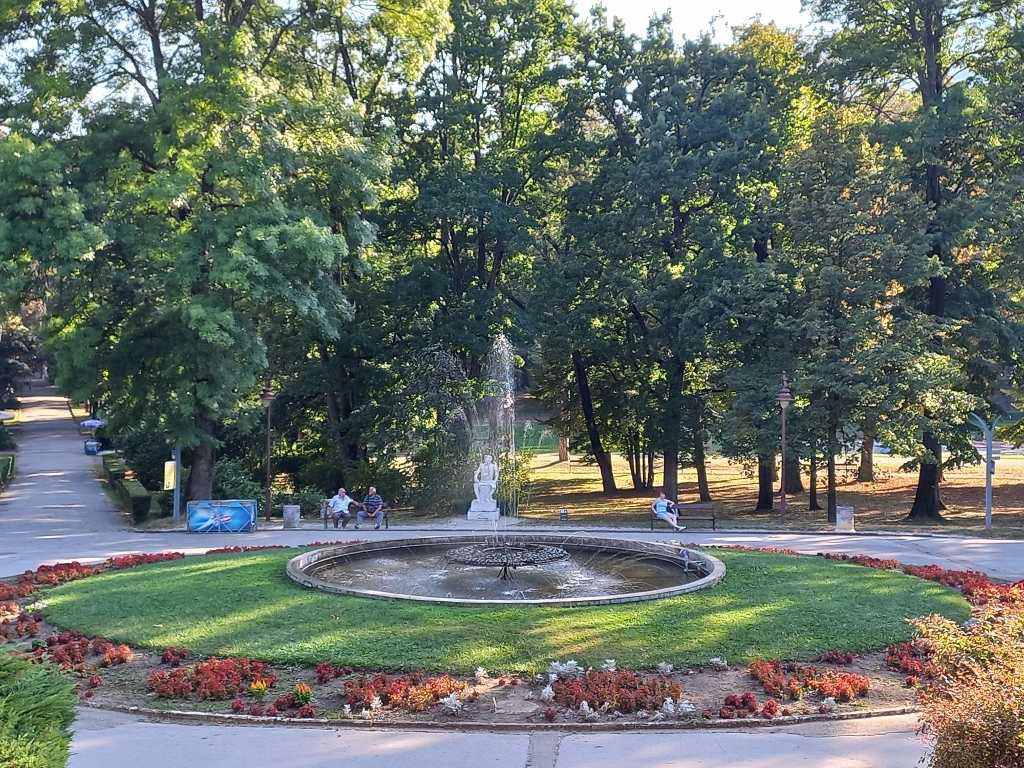 Bukovička Banja Park, a detail
Bukovička Banja Park, a detail
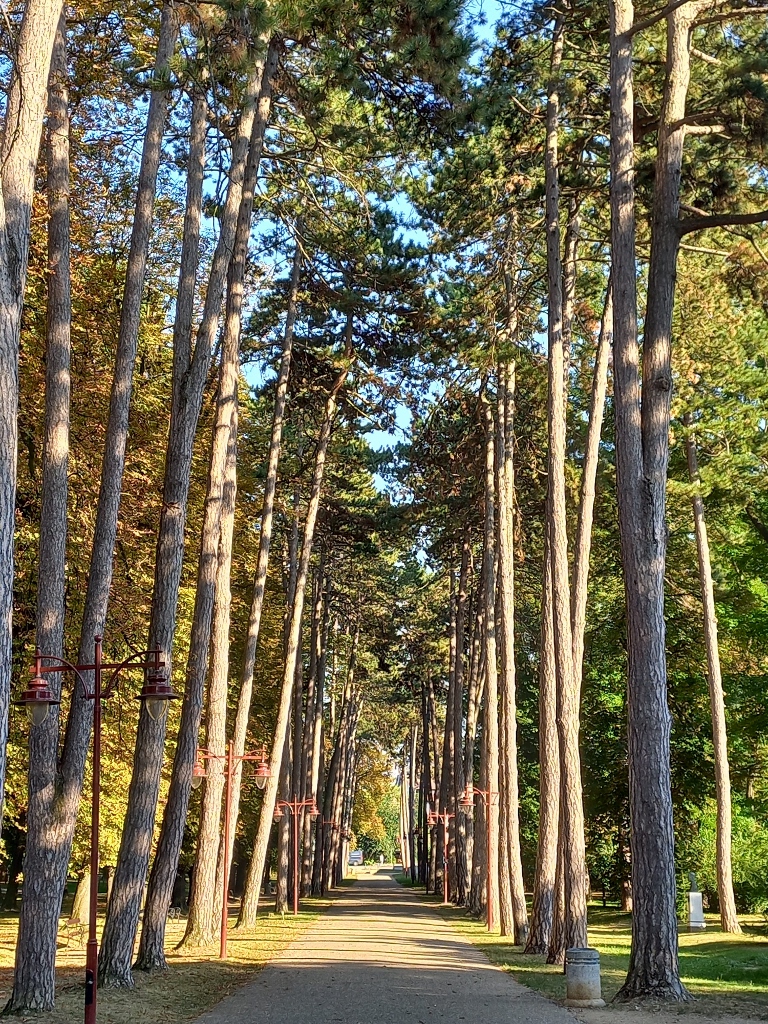 Bukovička Banja Park, a detail
Bukovička Banja Park, a detail
In the park, among other things, you can see more than 200 sculptures made of white marble created as a part of the “Beli Venčac” Symposium (“White Venčac”), named after the marble from the nearby Venčac mountain. These sculptures have been produced from 1966 to the present day.
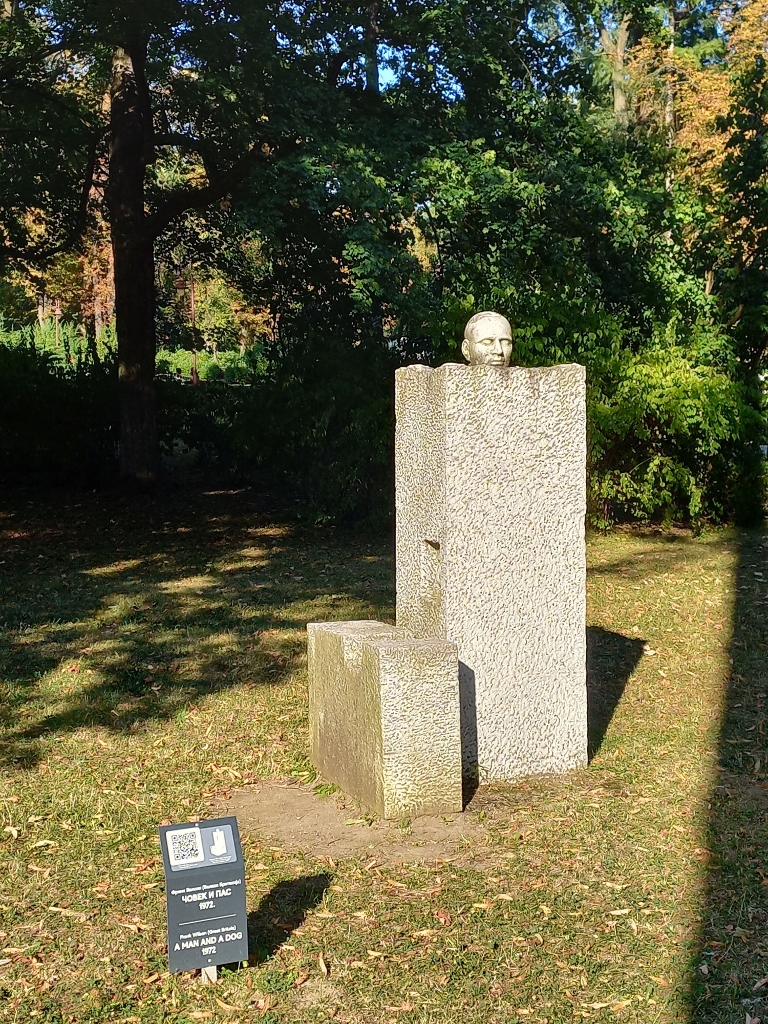 Bukovička Banja Park, a detail
Bukovička Banja Park, a detail
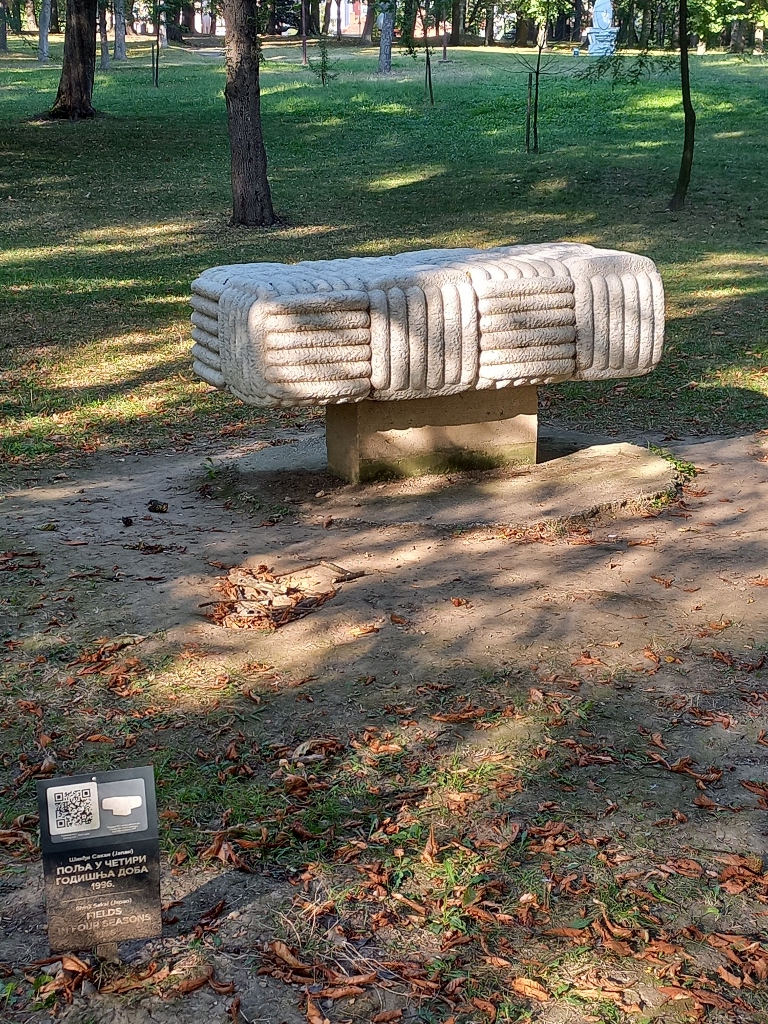 Bukovička Banja Park, a detail
Bukovička Banja Park, a detail
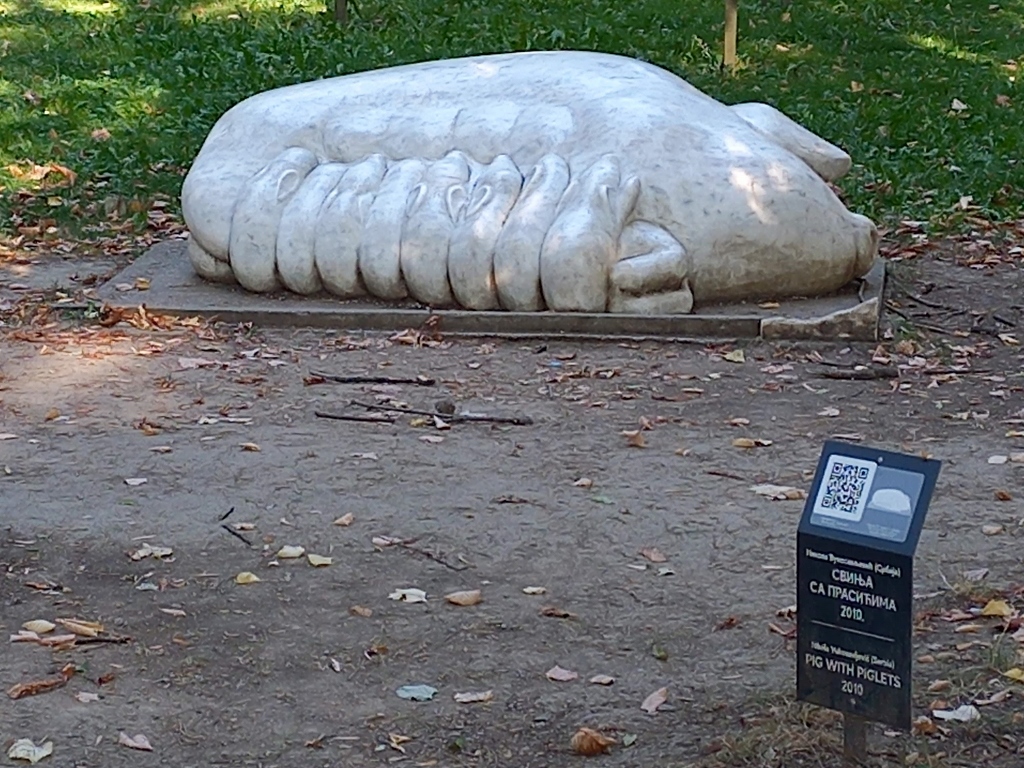 Bukovička Banja Park, a detail
Bukovička Banja Park, a detail
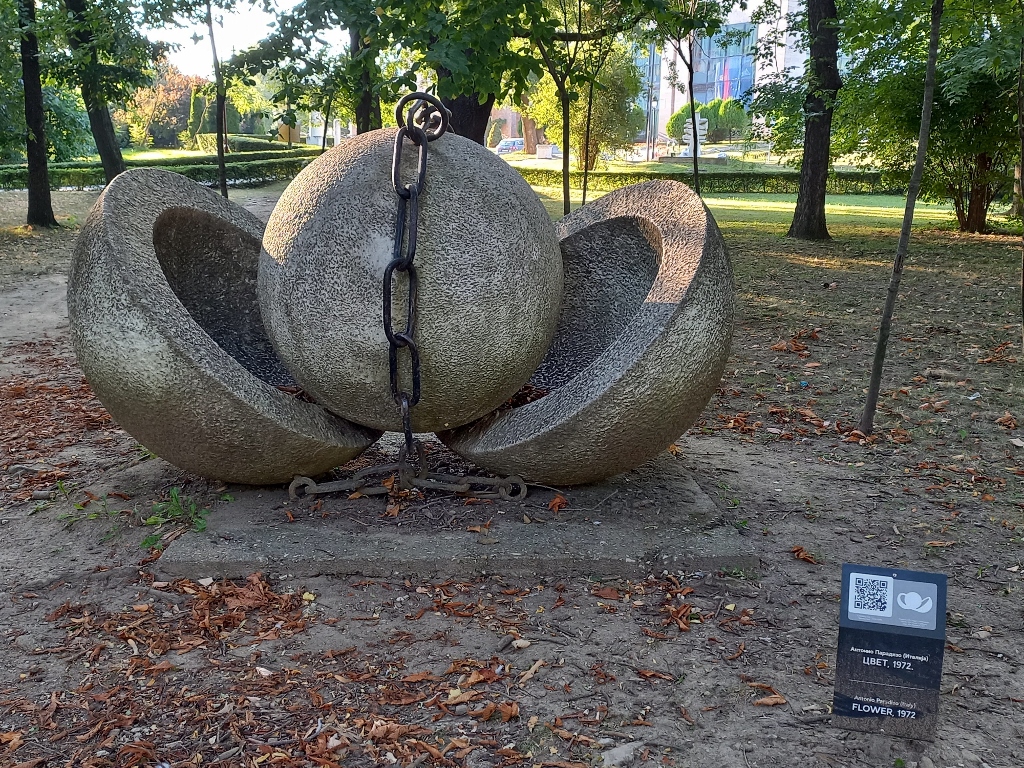 Bukovička Banja Park, a detail
Bukovička Banja Park, a detail
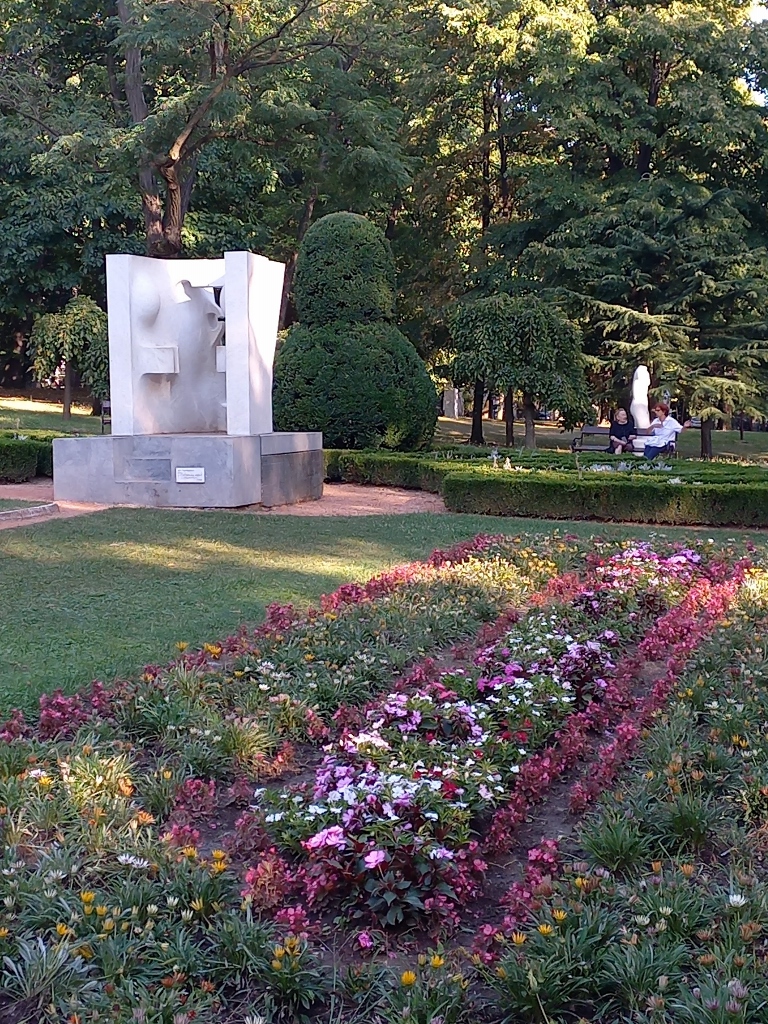 Bukovička Banja Park, a detail
Bukovička Banja Park, a detail
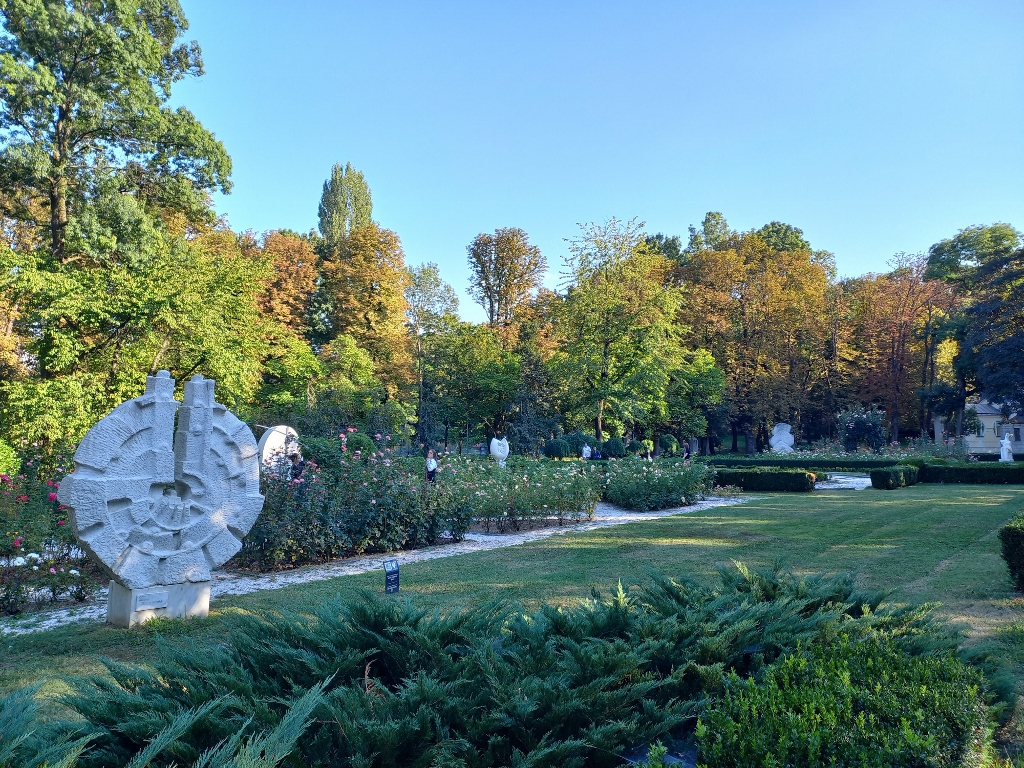 Bukovička Banja Park, a detail
Bukovička Banja Park, a detail
While strolling through the park, I also came across the “Knjaz Miloš” Pavilion.
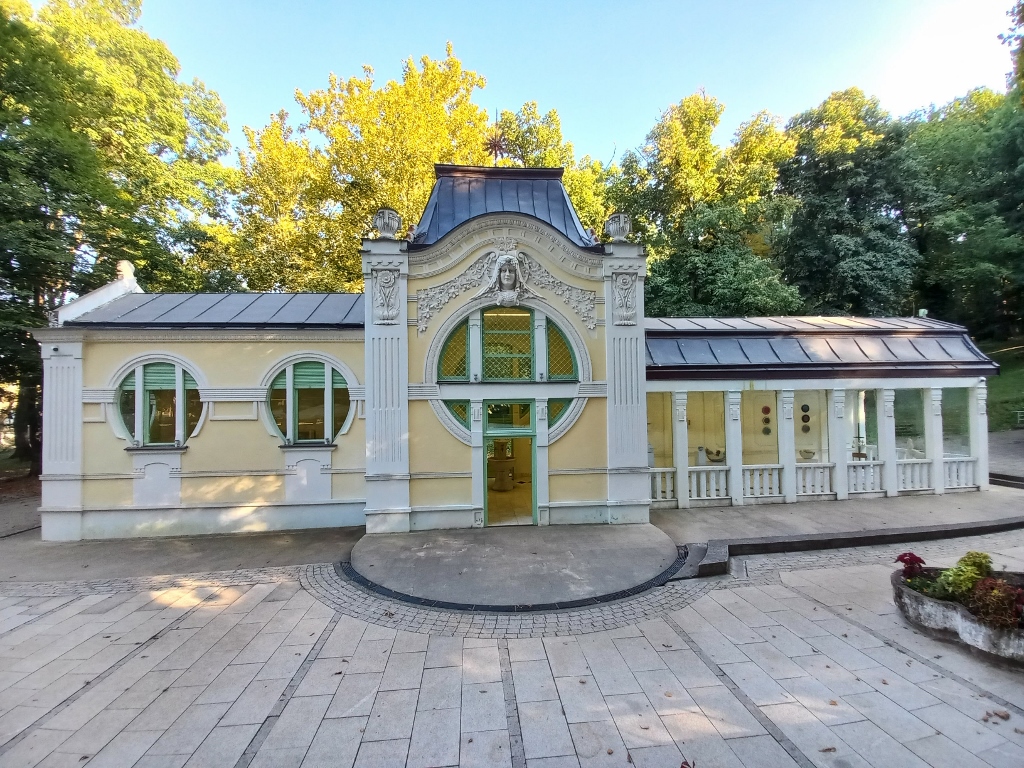
The healing properties of the mineral water in Bukovička Spa were established as early as 1836, while the first sealing of the spring was made in 1839. This pavilion, named after Prince Miloš, was built in 1907, on the site of that first spa spring and this is where the bottling of mineral water began.
Today, the interior of the building preserves some old details and a part of it is used as an exhibition space.
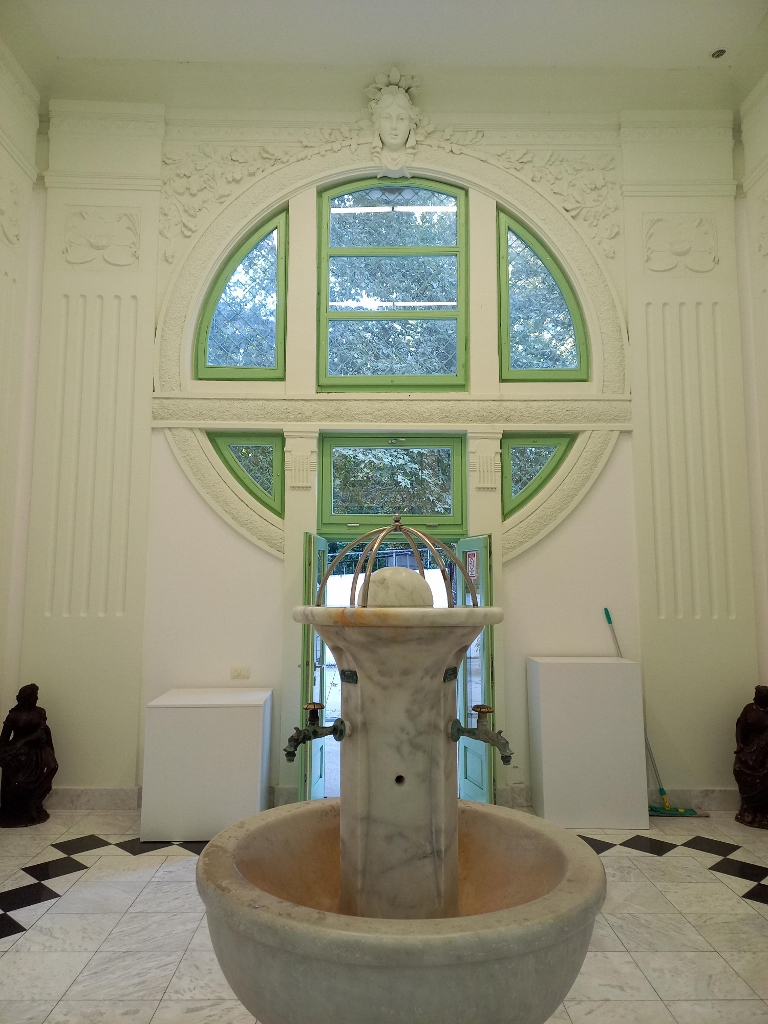 “Knjaz Miloš” Pavilion, a detail
“Knjaz Miloš” Pavilion, a detail
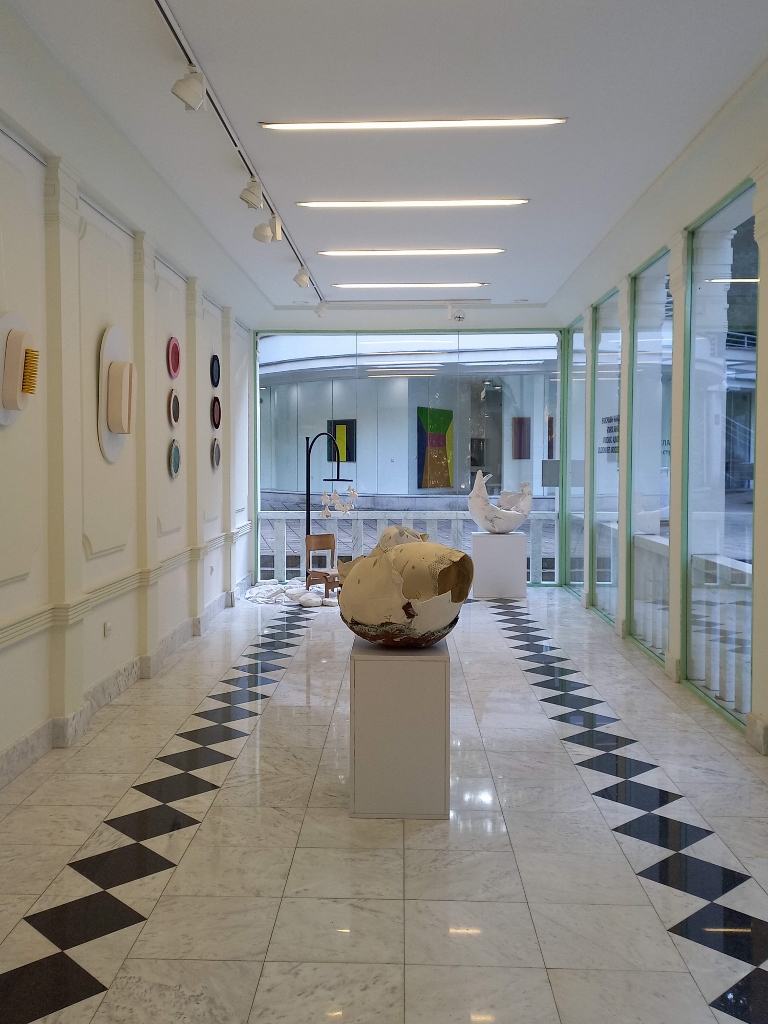 “Knjaz Miloš” Pavilion, a detail
“Knjaz Miloš” Pavilion, a detail
The “Knjaz Miloš” mineral water is still one of the most famous in Serbia today. It was interesting for me to see some old labels here that used to be placed on the bottles of this water that was exported to various parts of the world.
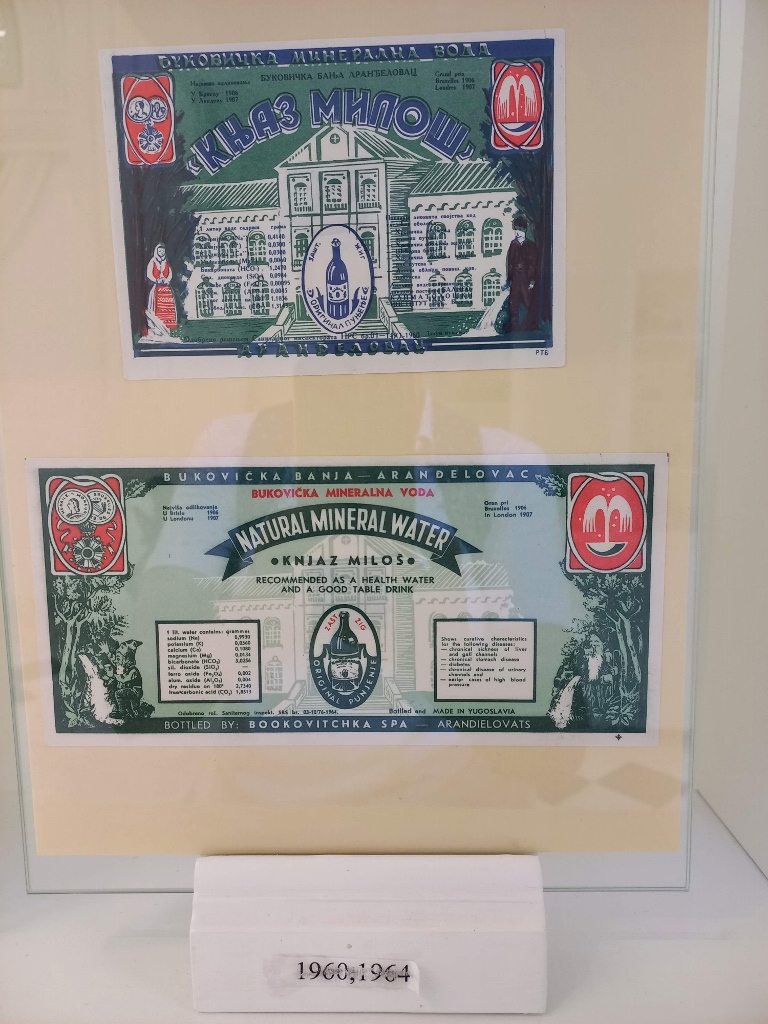 “Knjaz Miloš” Pavilion, a detail
“Knjaz Miloš” Pavilion, a detail
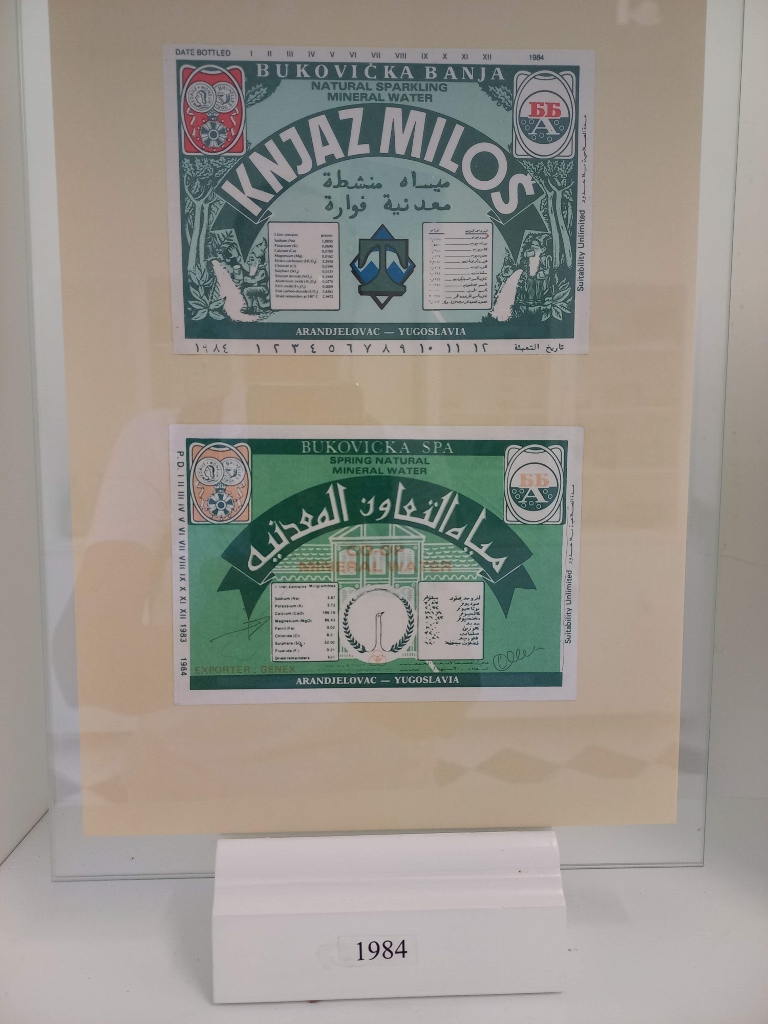 “Knjaz Miloš” Pavilion, a detail
“Knjaz Miloš” Pavilion, a detail
As a consequence of a couple of earthquakes that hit this area in the third decade of the 20th century, a new spring emerged named “Pobeda” (Victory), which was also fenced off. This spring was not of the same quality as the main “Knjaz Miloš” spring, so it was used at times and at other times not.
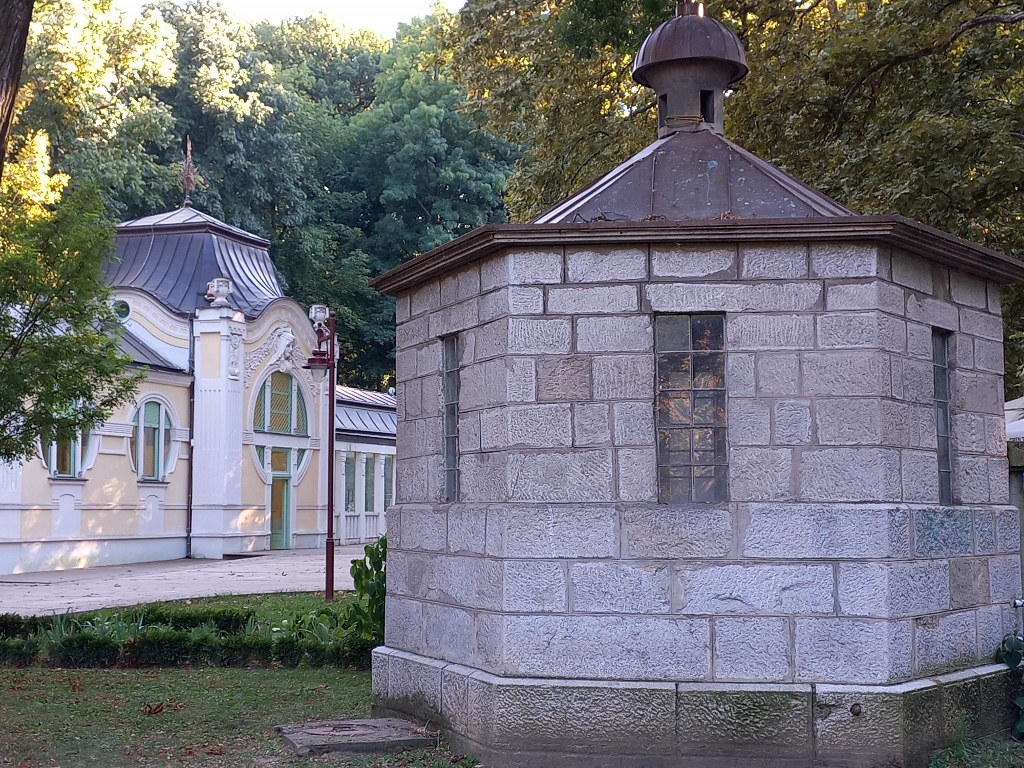 Bukovička Banja Park, a detail
Bukovička Banja Park, a detail
In the immediate vicinity of these buildings there is an open-air stage, since, in addition to the Bukovička Banja Park being used as an open-air sculpture museum, the event called “Mermer i zvuci” (Marble and Sounds) is held here every year, regularly organised since 1968. The programme takes place during the summer months and the access is free.
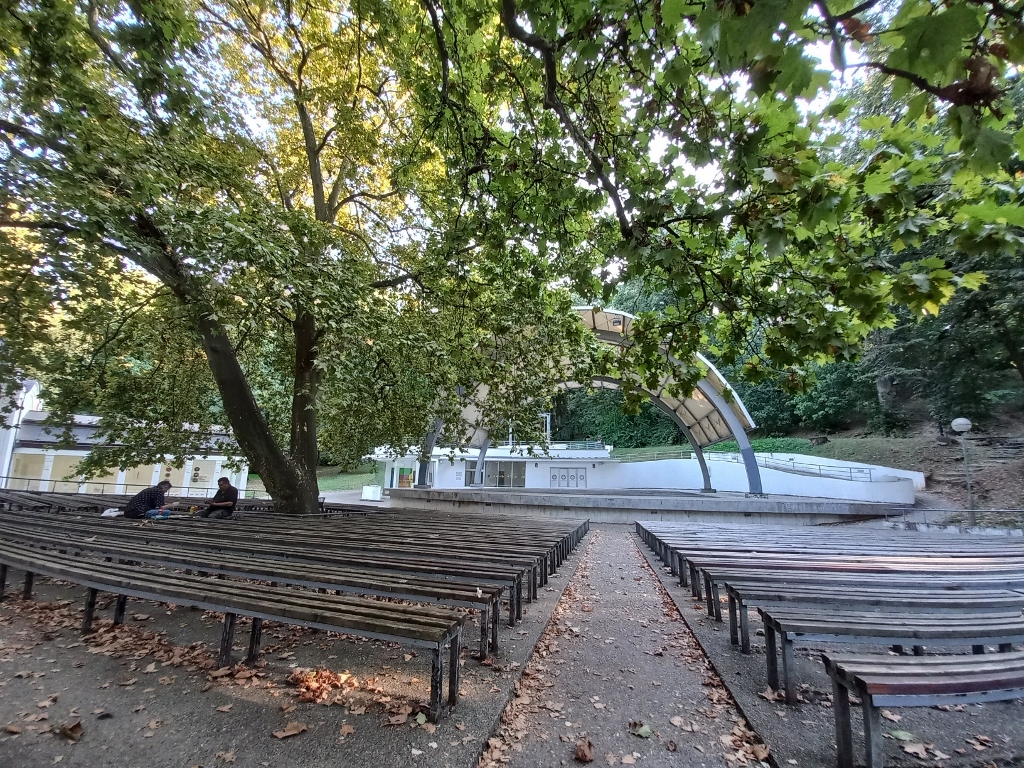 Bukovička Banja Park, a detail
Bukovička Banja Park, a detail
I would also like to mention that a large part of the trees in the park are very old, meaning that some specimens are quite large. Here’s an illustration:
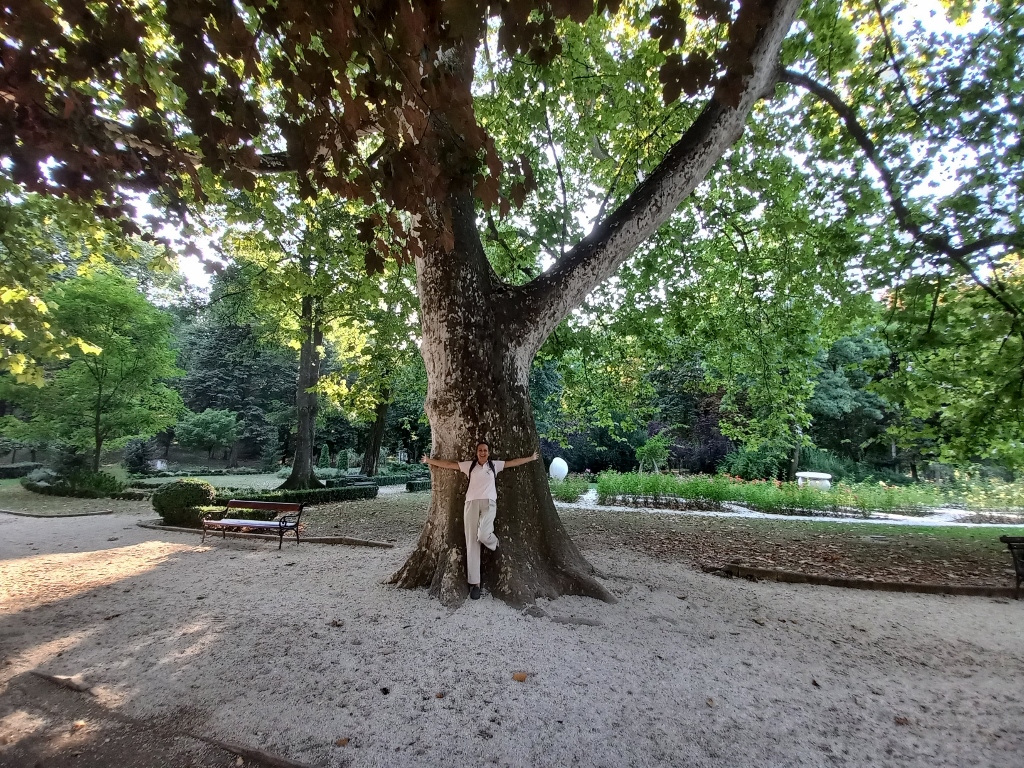 Bukovička Banja Park, a detail
Bukovička Banja Park, a detail
Now I was slowly heading towards the place where I had left my car, but on the way, I passed by a few more springs, “Đulara” and “Knjaz Mihailo.”
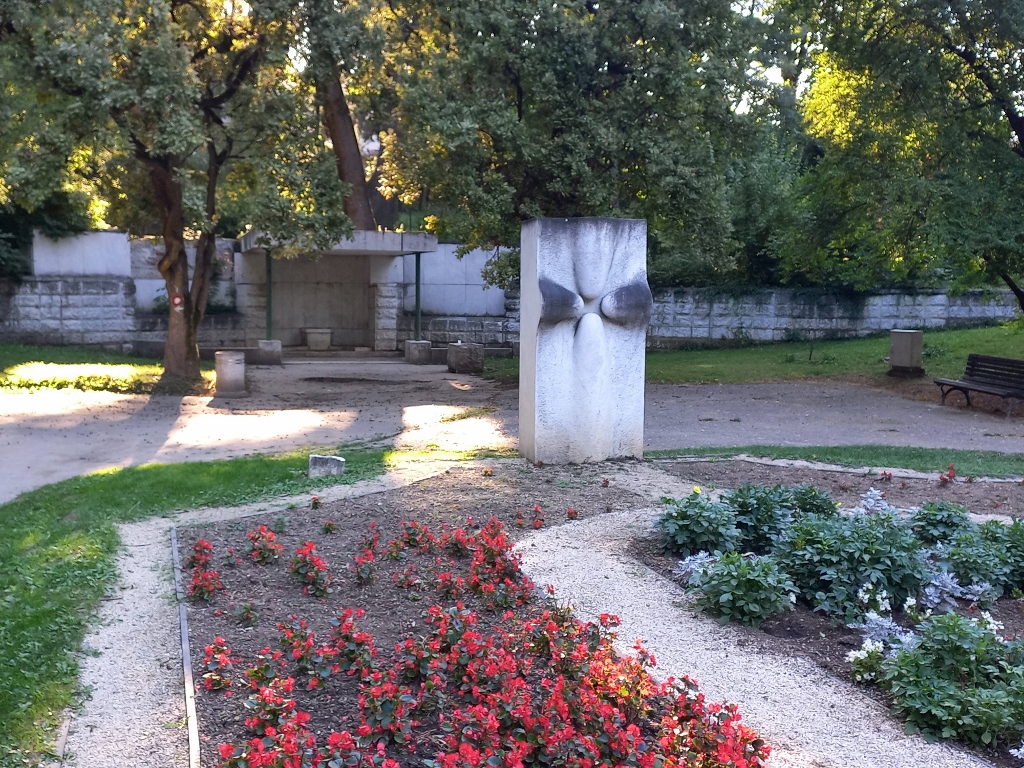 Bukovička Banja Park, a detail
Bukovička Banja Park, a detail
However, the most interesting to me was the “Talpara” spring that was previously used for bottling mineral water, but is nowadays a source of drinking water that can be taken on the spot.
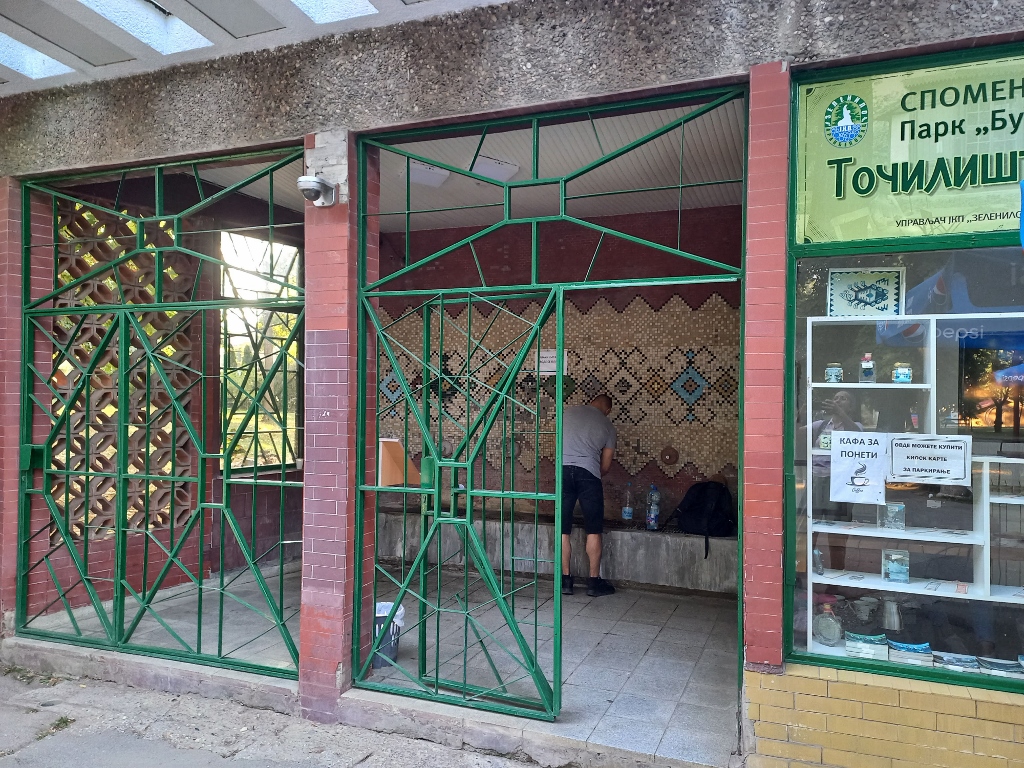 Bukovička Banja Park, a detail
Bukovička Banja Park, a detail
To be more accurate, you can drink as much as you want on the spot for free, but if you want to pour the water into a bottle, then you have to pay. In September 2023, a litre of mineral water was 5 dinars (0.04 euro cents), while the monthly subscription was 750 dinars (6.3 euros). Above the taps, there is a clear writing on the wall: “Each litre of water is to be paid”!
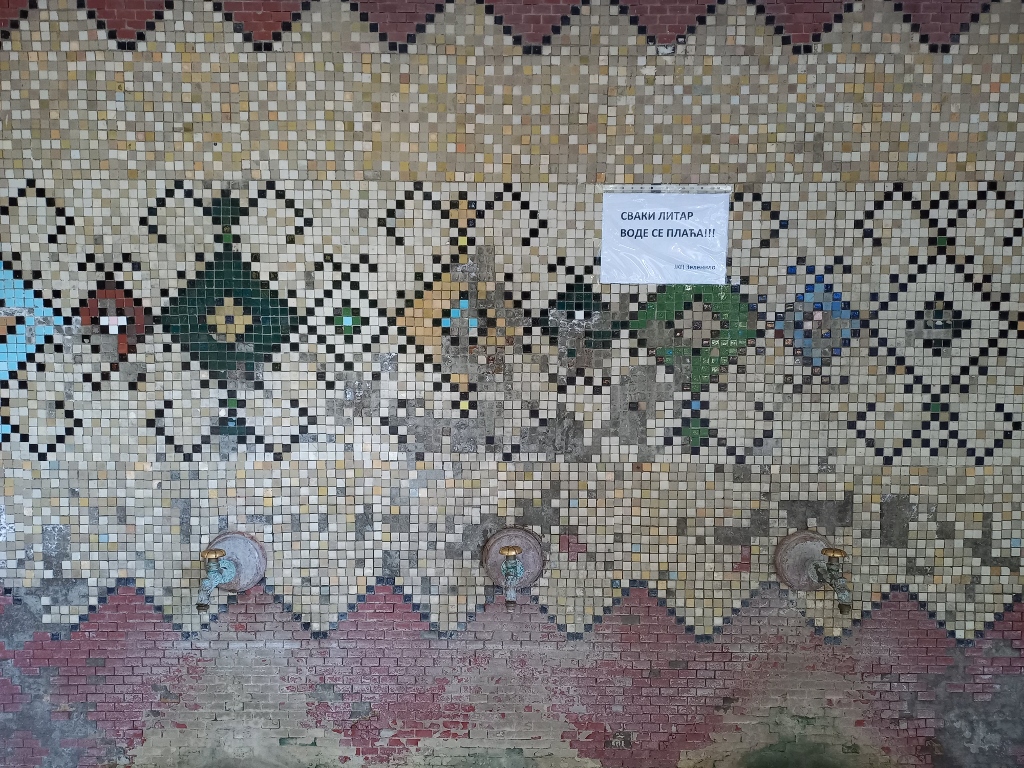 Bukovička Banja Park, a detail
Bukovička Banja Park, a detail
There is also an information poster stating what the “Knjaz Miloš” mineral water is good for: gastrointestinal diseases, diseases of the biliary tract and pancreas, metabolism, kidney and urinary tract diseases, and cardiovascular diseases. So, if you have such problems, get the monthly subscription and long live!
After drinking plenty of water, I went back to the car and drove to the First World War ossuary in Aranđelovac, built between 1933 and 1938, which is also a cultural monument. The ossuary is dedicated to the warriors who died in 1914 and 1915, and above the ossuary, there is a pyramidal-shaped monument.
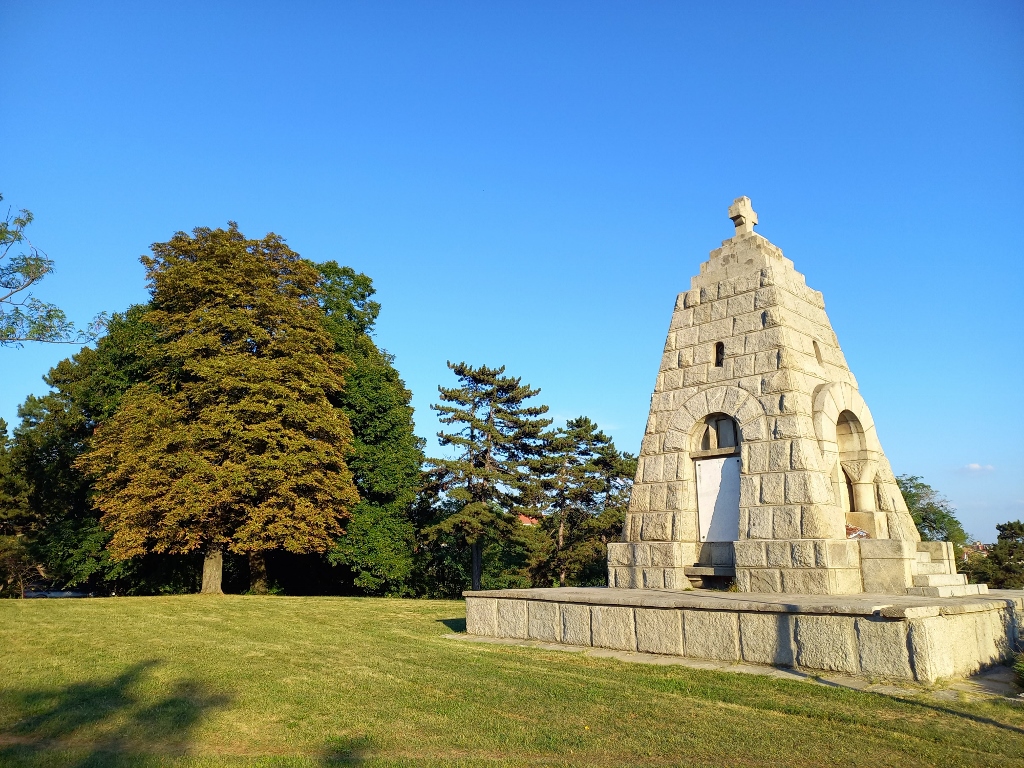 Memorial ossuary from WWI in Aranđelovac
Memorial ossuary from WWI in Aranđelovac
There is a very nice view of Bukulja from the direction of the ossuary.
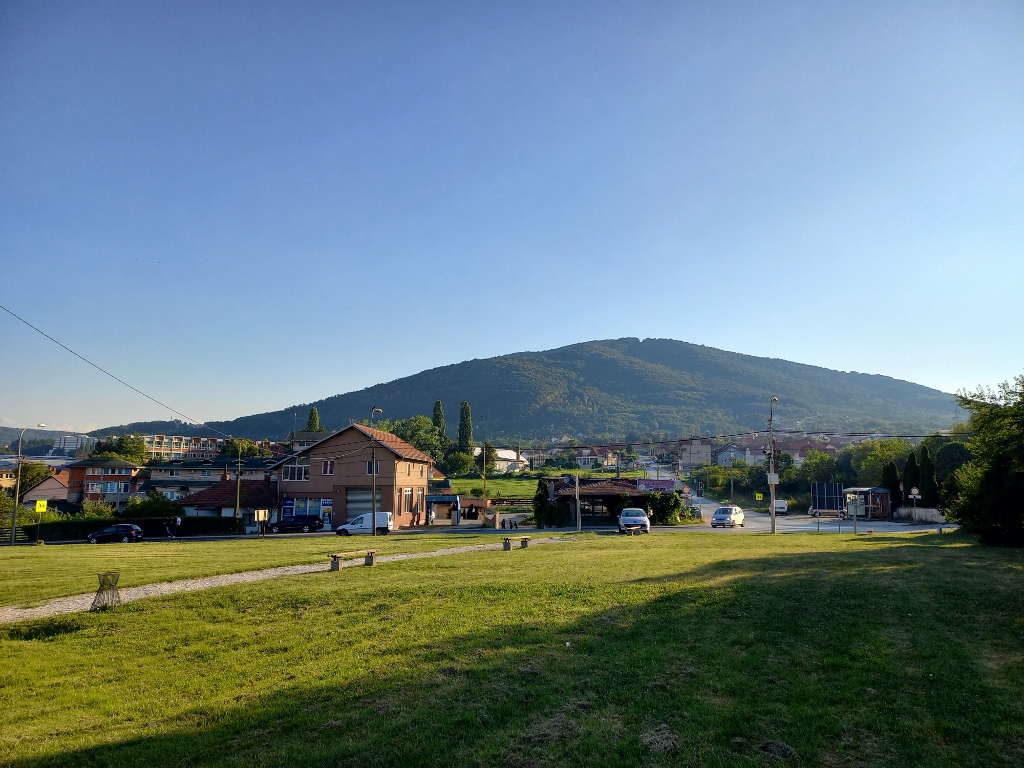 View at Bukulja mountain
View at Bukulja mountain
My plan, however, was to enjoy another beautiful view, this time from the restaurant of a nearby winery. Since I was still full, I couldn’t eat again and since I was driving, drinking any wines was out of question. At least at that moment. So, I ordered some juice and I bought a couple of bottles of wine to taste them when I get home.
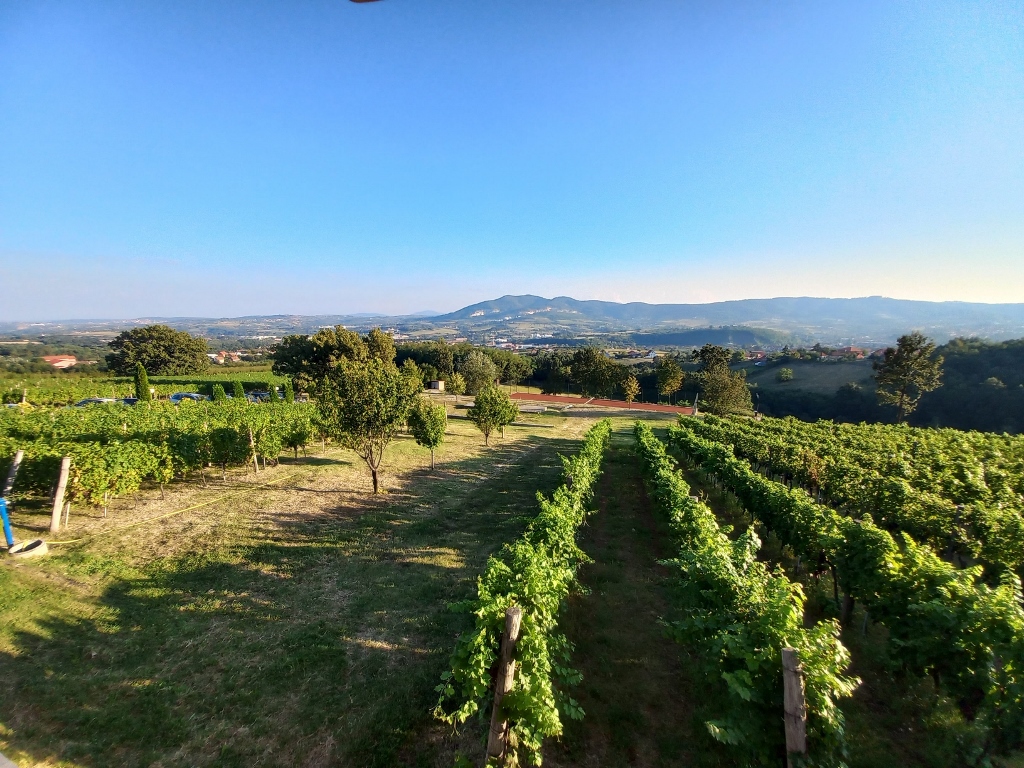 View at the surroundings of Aranđelovac
View at the surroundings of Aranđelovac
In the end, I just took a little stroll through the vineyards. The autumn was on the horizon and the grapes were ripening more and more. I couldn’t resist and so I had to try a couple of berries, which I later reported to the winery owner while he was packing my bottles of wine. He didn’t mind at all; in fact, we had a good laugh about it.
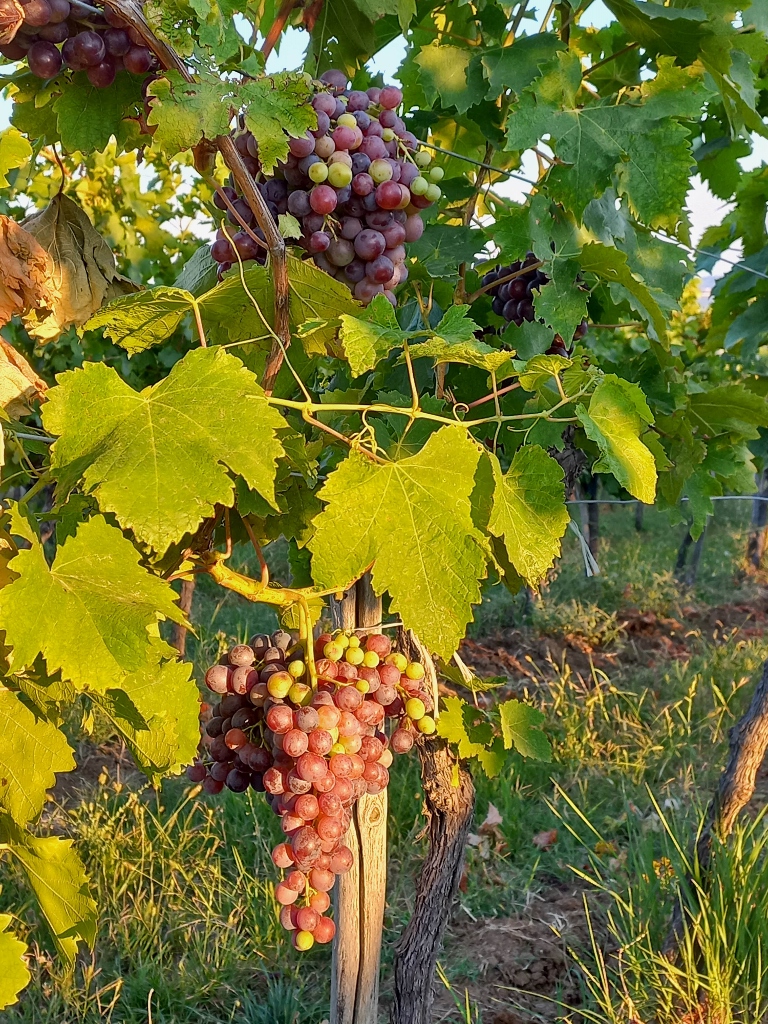 Beginning of autumn around Aranđelovac
Beginning of autumn around Aranđelovac
With the wine in the trunk, along with the fruits and vegetables I had bought at the market in Mladenovac, I soon headed back home, very content with yet another trip around Serbia that I had come up with.